news
Book Launch, New Worlds, New Forest 2 at Singapore Art Book Fair 2022
29th April 2022
New Worlds
From the window of my high-rise flat, I can see several green spaces. One of them is a small and lush green island bordered by several roads, and further away, a larger secondary forest. During Singapore's Covid-19 lockdown, I spent a lot of time looking at them.
In December 2020, the secondary forest started being cleared. At around the same time, I spotted a wild boar in the green island building a nest, preparing to give birth. She must have been evicted from the secondary forest, and her journey to her new home would have involved crossing several roads. In the end, this mother pig gave birth to six piglets. The secondary forest is now mostly gone. In the green island, I occasionally see the odd wild boar surfacing from the sides of the greenery.
Images of deforestation outside my window, with a wild boar giving birth in a nearby forest during the same period. View from my window, December 2020.
Archival images of deforestation in Singapore.
Conceived by The Institute of Critical Zoologists (ICZ) between 2014 and 2019, this book features images of cows in Singapore from the 1890s to 2016 from ICZ's archive.
Designed by H55 in Singapore
Published in 2022 by Robert Zhao Renhui
Edition of 500
64 pages, 63 images. Hard Cover.
14.5cm x 18.5cm x 1cm (Thick)
ISBN: 978-981-18-3978-8
Click here for more information on the book.
Purchase book here via Paypal
Shipping to Singapore Click here
Shipping to Asia Click here
Shipping to Rest of the World Click here
Purchase book here via DBSPayLah for Singapore customers only.

For delivery to Singapore, please make a payment of $58 with the message "New Worlds" and email your delivery name and address to info@criticalzoologists.org.
Evidence of Things Not Seen, as part of the group show, Silent Spring
27th March 2022
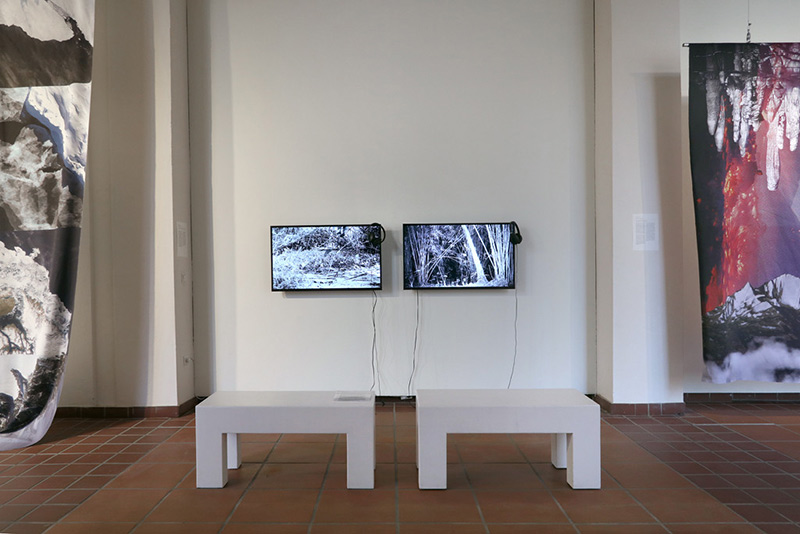 Exhibition view “Silent Spring”: Robert Zhao Renhui, Evidence of Things Not Seen, 2020 © Nihad Nino Pušija
Exhibition view “Silent Spring”: Robert Zhao Renhui, Evidence of Things Not Seen, 2020 © Nihad Nino Pušija
Silent Spring
The Earth bears traces of humans everywhere: melting glaciers, dwindling biodiversity. They not only shape landscapes, but also create artificial worlds and intelligences. But with all their knowledge, humans can neither fully comprehend nature and its complex regulatory mechanisms, nor control or predict the future. Together with guest artists, the Berlin-based artist group pilote contemporary explores the ambiguity that characterizes the relationship between humans and their environment. On the one hand, humans change and destroy the world, appropriate it and intervene in natural processes in the long term; but at the same time, their own finitude and dependence are revealed. The title “Silent Spring” refers to the 1962 book by biologist Rachel Carson, which is considered a key trigger of the 20th century Western environmental movement. The exhibition questions the Western assumption of human and nature as two separate entities, instead focusing on the manifold connections. Presumed hierarchies are questioned, interrelations are highlighted, and humans are positioned as part of larger processes.
Exhibition from March 26 to June 8, 2022
Curated by Lena Fließbach
Galerie im Körnerpark: Neukölln’s first municipal gallery, opened its doors to national and international artists in 1983. Today, it is one of the most renowned exhibition venues for contemporary art in Berlin.
Schierker Str. 8
12051 Berlin
Daily 10 am - 8 pm
Entrance free
New Worlds, part of the group show, The Natural History of an Island, Three Shadows Photography Art Center, Beijing
18th March 2022
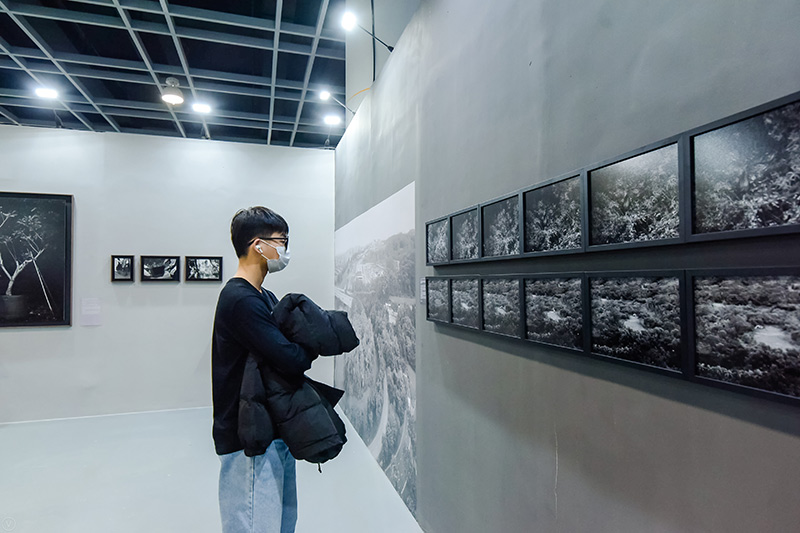 Installation view, New Worlds, Robert Zhao. Image Courtesy of Three Shadows Photography Art Center, 2022.
Installation view, New Worlds, Robert Zhao. Image Courtesy of Three Shadows Photography Art Center, 2022.
THE NATURAL HISTORY OF AN ISLAND
19 MARCH - 30 APRIL 2022
Three Shadows Photography Art Center, Beijing
The exhibition was previously shown at Jimei x Arles Photography Festival in Xiamen.
More information on the previous show, click here.
.
Curated by Gwen Lee.
Running parallel to the history of Singapore as an island city-state, "The Natural History of An Island" features 10 artists who explore the historical and contemporary narratives through photographs, installations and films.
Prior to her independence in 1965, the story of Singapore began with the legendary sighting of a lion on her shores by a prince from Palembang. In the 19th century, the island, then known as "Singapura", developed as a strategic colonial outpost by the British in Southeast Asia, and very soon became a bustling port in the Southern Sea for migrants. By the 21st century, Singapore became popularly known as the "little red dot" blossoming into a garden city.
Across time and history, the perceived nature and the natural are made to fall within perimeters of our constructed relationship with the island, and subjected to the allocation of resources and manpower. Our connection with the island and understanding of its narratives are thus shaped by the environment resulting from human interventions, control and fabrication.
While the exhibition ruminates on the many representations of the island which are perpetually created and altered by humans, the "Garden in the City" stands as evidence and witness to its own growth.
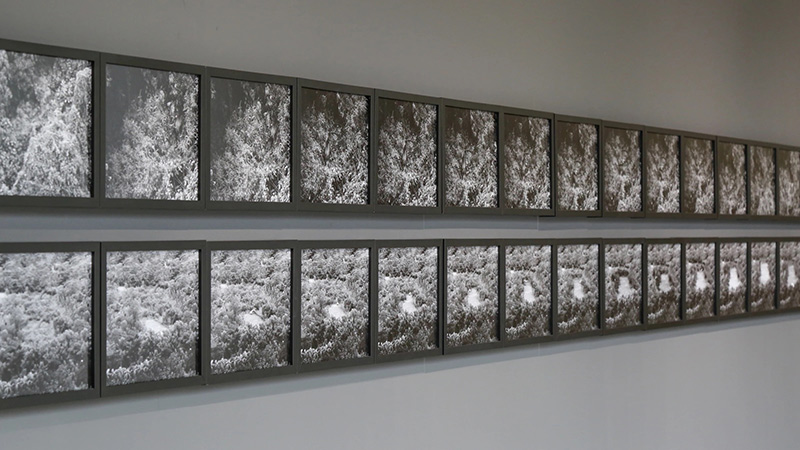
More information on the exhibition, click here.
More information on the work, click here.
Mynah Appreciation Society Tour, part of the NON SEASON at DESIGN ORCHARD
16th Feb 2022
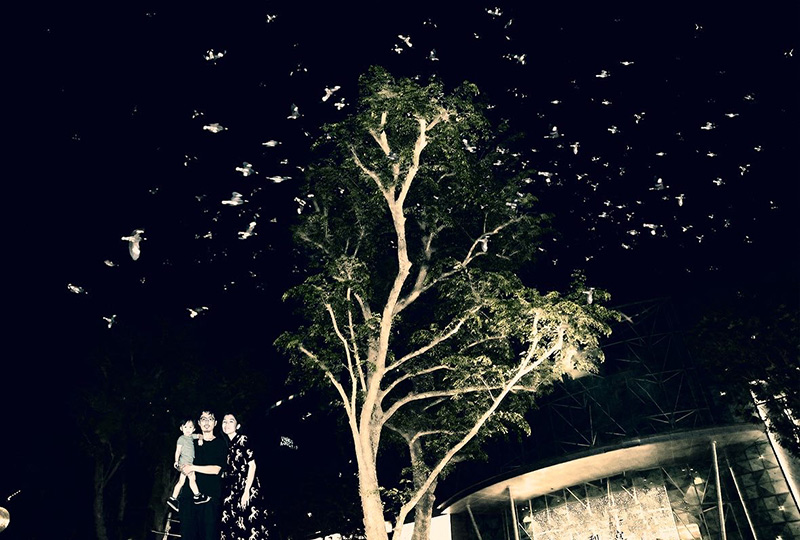 Group Portrait with Singapore Javan Mynas at Orchard Road, 2022. Mynahs return to roost every evening on this tree.
Group Portrait with Singapore Javan Mynas at Orchard Road, 2022. Mynahs return to roost every evening on this tree.
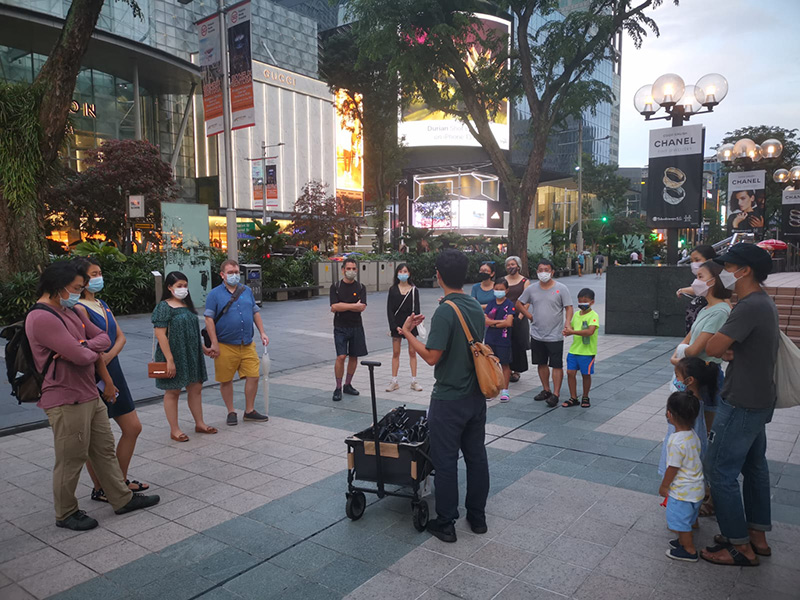
Javan Myna Tours at Orchard Road.
Sundown at Orchard Road in Singapore is marked by a massive flurry of mynahs coming to roost. Over the years, business-owners have taken measures — including deploying a hawk to prey on the birds — against the mynah population, mostly in vain. In the 1980s, a group of local nature lovers formed the Singapore Javan Mynah Society, hoping to turn the roosting event into a tourist attraction. The society led tours out to Orchard Road to witness the roosting, which they marketed as “a spectacular natural phenomenon in the heart of the city”. They also sold merchandise such T-shirts, toys and postcards.
This tour is an attempt to revisit the tours and consider the Javan Mynas as one of the most successful species to be able to form a symbiotic relationship with urban Singapore. The tour comprises a phototaking experience where participants will receive a photograph and certificate for their participation in the tour.
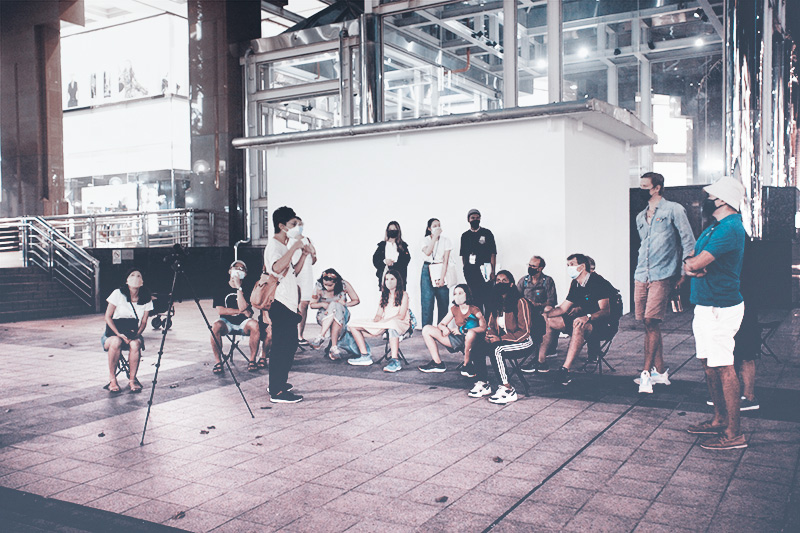
And A Great Sign Appeared, part of the show, Rediscovering Lost Connections, Ion Orchard, Singapore
18th Jan 2022

And A Great Sign Appeared (Thailand-Singapore)
210cm x 145cm
18 – 24 January 2022
10am – 10pm, daily
Jada Art Gallery at ION Art Gallery,
Level 4, ION ORCHARD, 2 Orchard Turn, Singapore 238801
Rediscovering Lost Connections: Silvana S. Foundation Commission Award Exhibition, first edition is a joint presentation of the work of two artists, Robert Zhao Renhui and the late Silvana Sutanto.
The future of the earth’s natural environment has emerged as one of the most pressing problems of our time, especially when Prime Minister Lee Hsien Loong raised the issues of climate change and ecological sustainability in his National Day Rally Speech in 2019. This timely exhibition celebrates the interconnectedness of humanity and its environment, and the future of both on the planet that we call home.
Zhao's present series of work captures the dramatic and mundane encounters he had during the pandemic, and reflects the myriad connections between human and wildlife populations in Southeast Asia, while Sutanto's works capture animal populations, anthropocenic landscapes and celestial phenomena.
The proceeds from this exhibition will go towards the Borneo Orangutan Survival (BOS) Foundation.
More information on the exhibition, click here.
More information on the work, click here.
Bukit Panjang Tourism Board
18th Jan 2022
 Mohd Aris bin Selamat, 72, boat captain; Gwee Mui Seng, 71, cleaner, at Pang Sua Pond, 2022.
Mohd Aris bin Selamat, 72, boat captain; Gwee Mui Seng, 71, cleaner, at Pang Sua Pond, 2022.
On his first day of work, Mr Aris saved a drowning cat in Pang Sua Pond. The former sailor hadn’t operated the small motorboat before, and couldn’t get it to start using the pull cord, as he had been used to driving larger boats whose engines turned on by the pressing of a button. So he picked up the oars and paddled from the boathouse to the pavilion, and scooped the cat up using a net used to pick up floating leaves.
This was an exciting start to what would turn out to be a peaceful job. In their little blue boat and green long-sleeved shirts, Mr Aris and Mr Gwee are a familiar sight in the neighbourhood. Their duties are to go around the pond twice a day — 8am and 1pm — to pick up debris on the surface of the water. Mr Aris pilots the boat while Mr Gwee nets up floating objects, such as fallen leaves, twigs and rubbish from irresponsible visitors. They also do a little bit of pruning at the edges of the floating wetland and the banks. Each trip takes about 1.5 to 2 hours. Most days are quite leisurely, except when it has stormed the night before, and they can collect up to 20 trashbags worth of dead leaves and branches. Larger tree trunks are hoisted onto the boat and taken by the boathouse to be sawn.
Both men enjoy the idyllic surrounds. Mr Gwee, who lives in Yishun, has worked as a cleaner for more than 20 years in various places, including an army camp, factory and condominium. This is his favourite workplace. He notices wildlife such as otters and iguanas. “There is no other place like this in Singapore,” he said. Mr Aris, who was born in Pulau Belakang Mati (Sentosa), had been a seaman for more than 40 years. Before he accepted the job, he had come with his wife for a walk on the boardwalk, to survey the environment. “I liked it, so I said, I can try.” Now he takes pride in keeping the pond clean and beautiful.
Pang Sua Pond is one of 16 stormwater collection ponds built in the 1990s, whose purpose is to collect rainwater runoff from the surrounding area and prevent flooding during a heavy downpour. The pond received a makeover and a boardwalk in 2017.
Bukit Panjang Tourism Board, a project by Adeline Chia and Robert Zhao.
15 – 22 January 2022
Greenridge Shopping Centre, #02-13
Bukit Panjang Tourism Board is part of the Community Arts Residency at Greenridge Shopping Centre, an initiative by the National Arts Council in collaboration with the Housing Development Board. It aims to support practising artists in advancing the field of community arts in Singapore. Through the Residency, artists have opportunities to inquire, collaborate and co-create artworks with the community that will shape communal spaces and reflect collective stories.
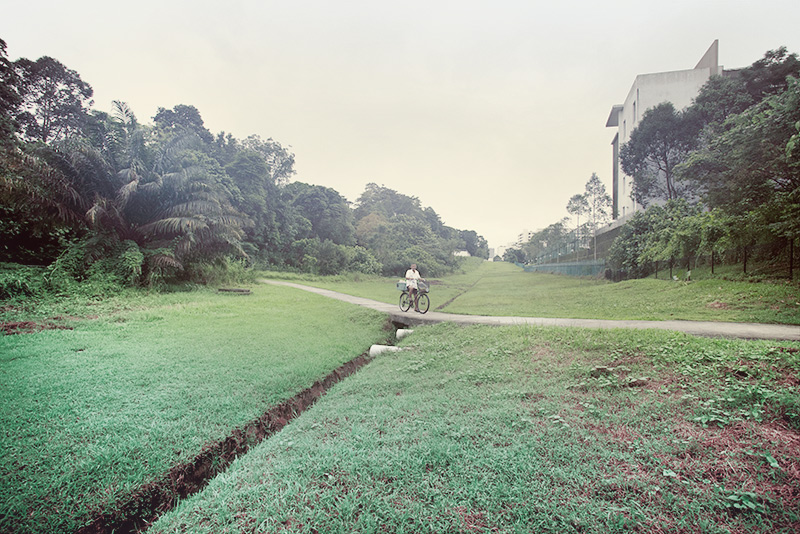 Mr Lim Moo Sooi, 78, retiree
Mr Lim Moo Sooi, 78, retiree
This retired lorry driver cycles to get spring water from a drain in Zhenghua Park two or three times a week from his home in Fajar. Each time, he fills up about eight five-litre bottles, which his family use for drinking and cooking. He says he is not used to the taste of tapwater, as he used to drink well water when he lived in a kampong in Yew Tee when he was younger.
The source of springwater, which flows out of a hole in the wall of a drain, is popular with local residents. To get to it, one has to climb over a fence and make a 1.5-metre drop down into the drain. Coming with bottles of different sizes in trolleys and bicycles, most take the water home for drinking. Some claim there are health benefits, which have not been verified, and one resident said he uses it for aquarium water.
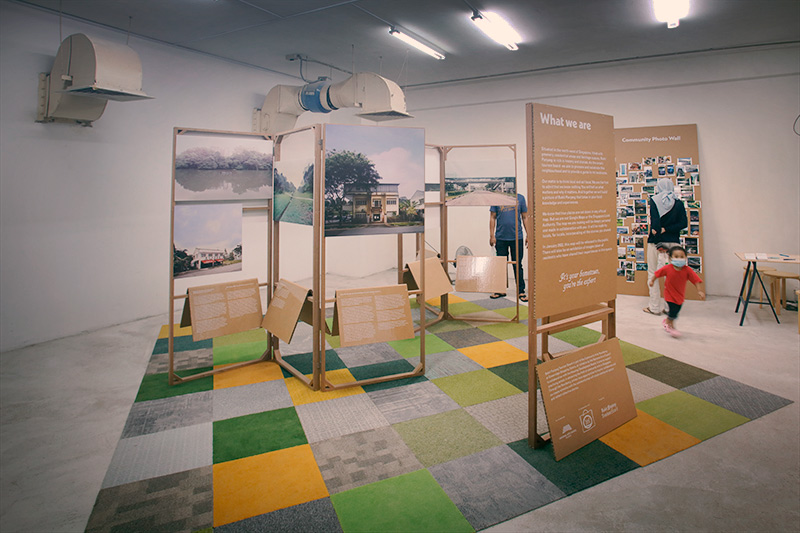 Installation View, Greenridge Shopping Centre
Installation View, Greenridge Shopping Centre
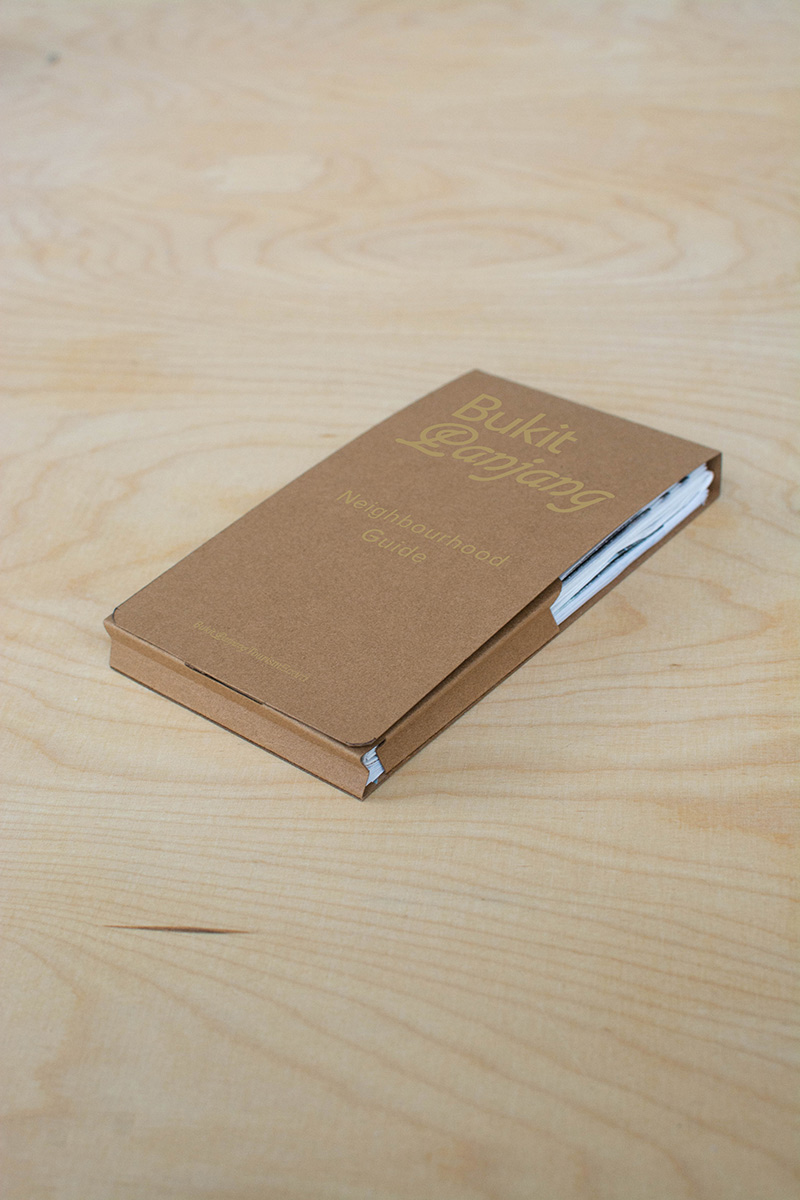
A set of postcards and map produced from the project.
A Great Sign Appeared, Film Screening, FREE JAZZ IV. GEOMANCERS, NTU CCA, SINGAPORE
14th Jan 2022
Program Trailer
From its first iteration in 2013, Free Jazz has pushed boundaries and expanded upon pressing concerns of our times. Free Jazz IV. Geomancers continues this approach, featuring artworks ranging from virtual reality to video, performance, and sound as an exercise in planetary awareness. The exhibition presents significant artistic practices from across the globe that are deeply invested in creating an environmental consciousness and that share an understanding of the world as a vulnerable, yet resilient, mesh of coexistences, correlations, and co-creations. As with geomancy, these artworks can help us to read the signs that our planet is trying to send us and that they can inspire a stronger commitment to create a sustainable future for life on Earth.
Alongside scientists, environmental activists, enlightened policy makers and civil society members, contemporary artists are increasingly concerned with future prospects of ecological collapse and planetary survival. They address these issues through the language of art, creating images, sounds, narratives, and experiences that allow us to establish affective and cognitive connections with the environment and partake in the planetary intelligence of the Earth. Stemming from NTU CCA Singapore’s ongoing engagement with the overarching subject of Climates.Habitats. Environments., Free Jazz IV. Geomancers brings together a selection of creative practitioners who are distinctly alert to these urgencies.
Conceived for Singapore Art Week 2022, this programme consists of a film screening series, a virtual reality installation, a performance and a sound installation. Some of the featured artworks zero in on signs of earthly demise, others indicate pathways of resilience and strategies for regeneration. All the works result from long-term research and extensive fieldwork and, when presented together, they engender a kaleidoscopic overview of the multitudinous forms of ecological entanglements.
Artists: Martha Atienza (Philippines), Ursula Biemann (Switzerland), Carolina Caycedo & David de Rozas (United Kingdom; Spain/United States), Chu Hao Pei (Singapore), Liu Chuang (China), Pedro Neves Marques (Portugal), Katie Paterson (Scotland), Rice Brewing Sisters Club (South Korea), Daniel Steegmann Mangrané (Spain/Brazil), Jana Winderen (Norway), Zarina Muhammad & Zachary Chan (Singapore), and Robert Zhao Renhui (Singapore).
The Forest Institute, an art installation at Gillman Barracks.
12th Jan 2022
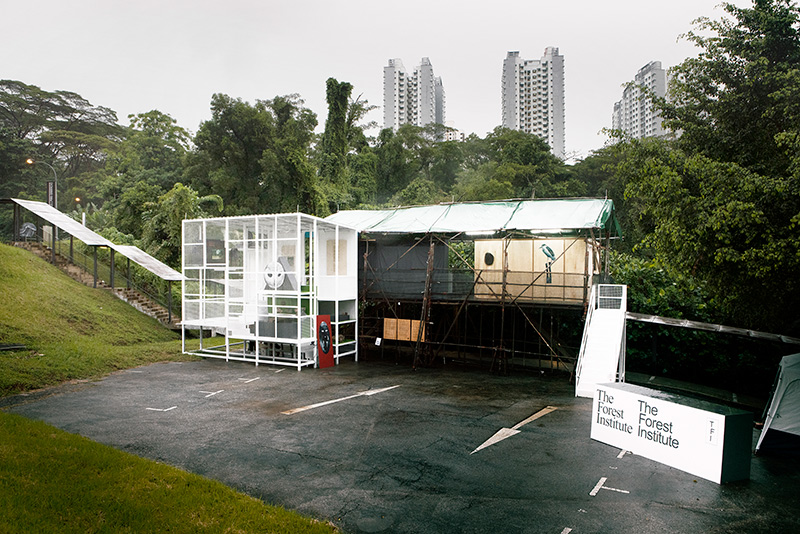
Opening hours: 14.1–14.2.2021 10am–6pm daily (closed on 31st Jan, 1st Feb & 2nd Feb)
This is a ticketed show ($5), please purchase tickets onsite.
Do reach out to us on instagram @theforestinstitute.sg or theforestinstitute.sg@gmail.com if you have any questions!
The Forest Institute is a large-scale architectural art installation housing a research installation, and comprising the Forest Observation Room and the River Platform, devoted to research on the secondary forest surrounding the Gillman Barracks precinct. Conceptualised by Robert Zhao & Randy Chan, and curated by John Tung, the Institute—that intervenes into existing pedestrian infrastructure—is accompanied by several large-scale prints of fauna installed in its vicinity, exposing visitors to the different realities of the area.
The project draws inspiration from, and pays close attention to an ancient tributary of Berlayer Creek, that courses through the forested areas of the barracks within an earshot distance from the institute. Prompting an acute awareness of the interconnectedness and interdependence of the perceived ‘ecological pockets’ that we encounter within our built environments, The Forest Institute offers a glimpse at the beauty and mysteries that nature has to offer, while pre-empting us on what we stand to lose.
Extending from research undertaken by Robert Zhao Renhui for his Benesse Prize finalist artwork, Queen’s Own Hill and its Environs, commissioned and presented at the Singapore Biennale 2019, and conceptualised in collaboration with award-winning architect-artist Randy Chan, ? The Forest Institute ? exists as a large-scale architectural art installation housing a research installation, and comprising the Forest Observation Room and the River Platform, devoted to research on the secondary forest surrounding the Gillman Barracks precinct. The Institute, accompanied by several large-scale prints of fauna—encountered and observed within the forested area—installed in its vicinity, exposes visitors to the different realities of the area.
Drawing inspiration from Southeast Asian architecture, the design of the institute is reminiscent of the Bornean longhouse—one of the earliest forms of permanent structures for many cultures around the world—albeit with the incorporation of a contemporary steel wing. Intervening into the existing pedestrian infrastructure present within the arts site, Chan’s architectural design highlights the backdrop of nature against the urban reality. Drawing attention to the forest that surrounds the concretised barracks, the elevated institute offers a unique vantage point to peer into the green yonder.
While housing research findings from Zhao’s extensive engagement with the history, botany, and zoology of the forest surrounding the Gillman Barracks art precinct over the past four years, the institute also provides visiting researchers with the opportunity for an extended study of the forest through overnight residencies at the Forest Observation Room. Equipped with provisions capable of supporting up to 2 adult and 2 child researchers from dusk to dawn, the observation room provides a safe refuge for the scrutiny of the forest’s nocturnal inhabitants.
Finally, the River Platform will lead visitors beyond demarcated boundaries to one of the key sites of interest, for both Chan & Zhao, within the forest—an ancient tributary draining into Berlayer Creek, concretised by the British, and still flowing today. Just as how this “river” serves as a source of sustenance for the fauna that inhabit the area, its flowing waters are simultaneously the wellspring of the artists’ inspiration.
Berlayer Creek, one of two remaining mangrove swamps located in the south of Mainland Singapore, possesses the longest history of urbanisation amongst all mangrove swamps in Singapore, having been occupied since the 1820s. Now a refuge for numerous species of migratory birds and other animals, the recognition of this humble stream running through the forests of Gillman Barracks as one of its tributaries—predating settlement, colonisation, and urbanisation—prompts an acute awareness of the interconnectedness and interdependence of the perceived ‘ecological pockets’ that we encounter within our built environments.
As an ongoing study of the enmeshment and impact of human activities on surrounding ecologies, The Forest Institute emerges as an allegory of humanity’s limited understanding of our natural surroundings. Beyond offering a glimpse at the beauty and mysteries that nature has to offer, the artwork preempts us on what we stand to lose.

The Forest Observation Room offers visiting researchers to The Forest Institute a unique opportunity for an extended engagement with Gillman Barracks’ secondary forests after nightfall, albeit from the safety of the institute’s elevated premises. Operating from dusk to dawn on weekends and equipped with the necessary creature comforts for overnight observation, visiting researchers will have the special privilege of studying the forest inhabitant’s nocturnal activities through footage captured from within the forest. Screens within the observation room connect audiences with the surrounding woodlands.
Note: Tickets include camp food and refreshments.
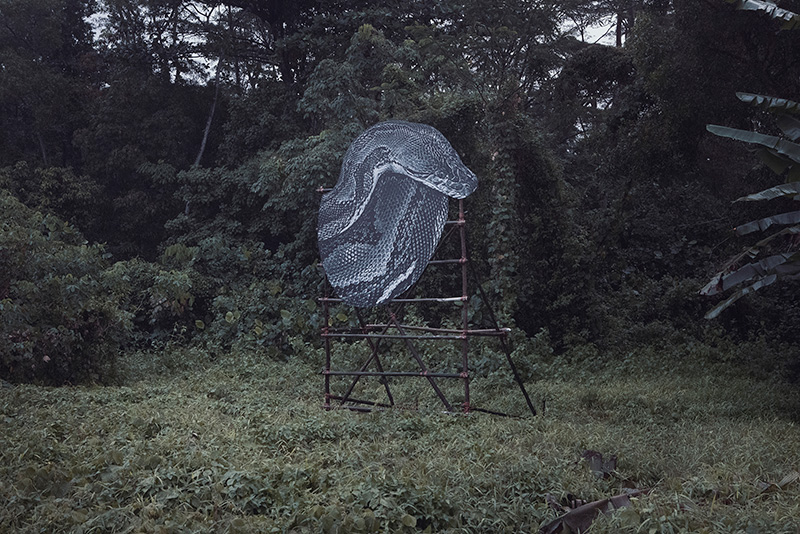 Outdoor photo installation, Gillman Barracks.
Outdoor photo installation, Gillman Barracks.
Exhibition Trailer:
A Monument to Thresholds, part of the group show, Post Human Ensemble, Asia Cultural Centre, Gwangju, Korea
25th Dec 2021
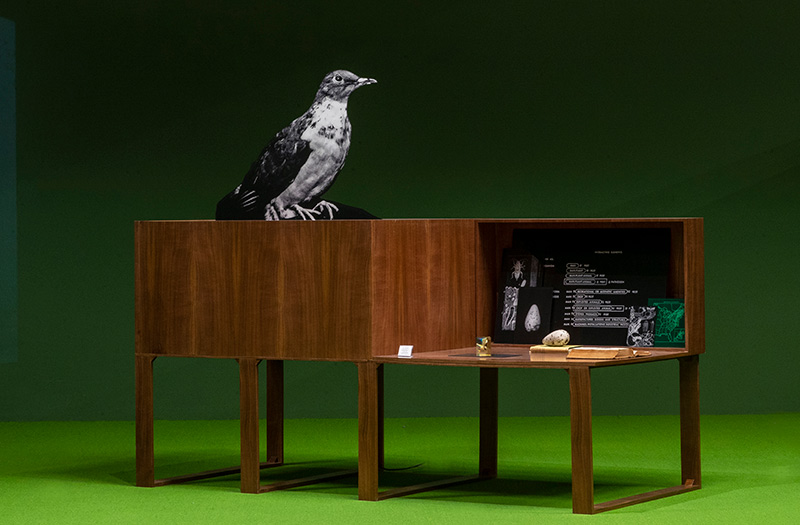 Installation view, Monument to Thresholds, Robert Zhao. Image Courtesy of ACC, Korea. 2022.
Installation view, Monument to Thresholds, Robert Zhao. Image Courtesy of ACC, Korea. 2022.
Date November 5, 2021 – February 27, 2022 (Friday–Sunday)
Time 10:00 - 18:00 Place Space 3 / Space 4
Artists: Jeimin Kim, Lugas Syllabus, Kyoungha Lee, Lêna Bùi, Kim Seola, Hwang Moonjung, Tae Yeun Kim, Robert Zhao Renhui, Pei-ying Lin, Heeah Yang, Younghwan Cheon, Easthug, Changchun Project, (Chang Jun Young & Chun Jiyoon), Eun Woo Cho
Posthuman Ensemble, referring to “posthuman” individuals coming together in an “ensemble,” is an exhibition that seeks to investigate how humans can emerge from a human-centered thought to exist in harmony with other nonhuman beings. ACC FOCUS, an annual exhibition that centers on important issues every year, focused on the actions of artists constantly invoking the memory of the environment and the history as struggles at the boundaries that form the equilibrium of the ecosystem for its 2020 exhibition, Equilibrium. This year’s Posthuman Ensemble exemplifies ACC’s participation in the efforts of those who think about the new meaning of posthuman and “new identity,” in the world left in the wake of a global pandemic, as a counterstrike by nature.
The word “posthuman” often brings up associations of the interface between humans and machinery. This is because of the more familiar concept of “transhumanism,” which focuses on the combination of humans with machinery in order to go beyond the ability of human in the vein of cyborgs such as Bionic Woman or Six Million Dollar Man and the like, formed during the 1950s and 1960s with the increasing focus on artificial intelligence (AI) and computing. Researchers of the “posthuman” have expanded their focus not only to encompass the familiar fields of transhumanism but also to include the “nonhuman” and humanity’s relationship with those categorized as not human.
These efforts present a starting point for examining what the values we, as humanity, can pursue as “posthuman” in the Anthropocene period, an age where humanity’s actions, as the masters of the world, lead the climate change and environmental damages. A piece of stone, a blade of grass—everything that exists around us, or defined by us as meaningless, actually exists in relationship with each and every action taken by the human. Even the artificial ones created by humanity and the humanity itself can be seen as existing in a relationship of mutual exchange with nature in the grand cycle of the ecosystem. The network between the human and the nonhuman has already been established, and all species in the ecosystem are circulating in it. Posthuman Ensemble seeks to recognize the existence of different types of nonhumans and propose a new nonhuman existence of “emotionality.”
Ultimately, it seeks to raise the questions on how humanity should understand its relationships with the nonhuman and communicate in that relationship. Thus, the exhibition first includes numerous beings that do not hold the attention of most humans, the ones that are deemed insignificant by humans, such as weed, fungi, and discarded items in the city. Second, it includes the unseen and the known, such as cells and viruses. Third, it includes emotions, which are a part of humanity but are not recognized by science as concrete, in the category of the nonhuman. In particular, the exhibition seeks to interpret the process involved in the interpretation of human emotions, transition of the interpretation of data, and actualization and objectification thereof by the machine being equipped with ever-developing AI technology through an idea of “translation,” and thus the concept behind the communication involved in it.
Ultimately, the exhibition examines how the two parties relate to and communicate with each other and thus achieve a harmonious coexistence based on mutual respect rather than superiority, and in that relationship of coexistence, how humanity can receive healing and solace from the nonhuman. The exhibition is constructed in a way that suggests whether the posthuman, to develop the gathering of the human and the nonhuman toward the configuration of an ensemble, should examine the wounded emotions of the human and the nonhuman not through the lens of charity, but rather through empathy, humility, and respect, in the age of the COVID-19 pandemic. That starts with the recognition of the nonhumans’ existence and their dignity as equal beings and will ultimately serve as an asset that the human can imbue the AI, hitherto seen with fear for its capacity to surpass and rule over the human.
Curated by Rue Young Ah (Asia Culture Institute, Senior Curator).
A Heartwarming Feeling, part of the group show, A Show About Nothing, by Art Matters
24th Dec 2021
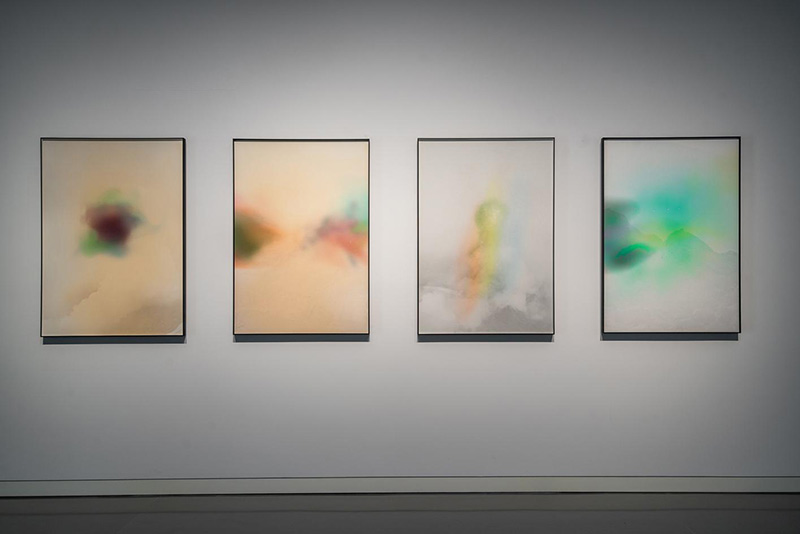 Robert Zhao Renhui, A Heartwarming Feeling (Series). Courtesy of the artist and ShanghART gallery. Installation view of ’A Show About Nothing,’ 2021, Hangzhou, By Art Matters. Photographer: Wu Qingshanns, 2021
Robert Zhao Renhui, A Heartwarming Feeling (Series). Courtesy of the artist and ShanghART gallery. Installation view of ’A Show About Nothing,’ 2021, Hangzhou, By Art Matters. Photographer: Wu Qingshanns, 2021
"A Show About Nothing"
Date?2021.12.25 – 2022.05.08
Location?BY ART MATTERS
Address?398 Tianmushan Road, Hangzhou
Opening Hours?Tuesday - Sunday, 12:00 - 20:00
After nine years of preparation, BY ART MATTERS opened to the public on December 25, 2021, at the O?Eli campus in Hangzhou. The inaugural exhibition "A Show About Nothing" will be on view through May 8, 2022.
The inaugural exhibition of BY ART MATTERS, a contemporary art venue in Hangzhou, "A Show About Nothing" will bring together more than 30 artists, including Francis Alÿs, Maurizio Cattelan, Geng Jianyi, Robert Grosvenor, Hans Haacke, Ghislaine Leung, Li Liao, Liu Guoqiang, Cady Noland, Yoko Ono, Tino Sehgal, Rudolf Stingel, Hiroshi Sugimoto, Tong Wenmin and others. With the presentation of their seminal works and newly commissioned pieces according to the venue's characteristics, the exhibition explores how contemporary Chinese and foreign artists deal with the concept of "nothingness." The exhibition concept was proposed by Francesco Bonami, director of BY ART MATTERS, curated by Stefano Collicelli Cagol, a renowned Italian curator, together with Wu Tian and Sun Man.
The exhibition layout places minimal intervention to the architectural design of BY ART MATTERS. Conceived and executed by the internationally renowned RPBW (Renzo Piano Building Workshop), the space allows for a distinctive experience of the entire museum, from its fair-faced concrete, the wooden floor to the high ceiling with skylights on the first floor. When visitors walk into the gallery for the first time and traverse through the exhibition, their various ways of experiencing the space would lead them to engage with the theme of this exhibition.
More information on the exhibition, click here.
More information on the work, click here.
The Lines We Draw, an installation at Super Fusion, 2021 Chengdu Biennale
11th Nov 2021
 Robert Zhao Renhui, A Heartwarming Feeling (Series). Courtesy of the artist and ShanghART gallery. Installation view of ’A Show About Nothing,’ 2021, Hangzhou, By Art Matters. Photographer: Wu Qingshanns, 2021
Robert Zhao Renhui, A Heartwarming Feeling (Series). Courtesy of the artist and ShanghART gallery. Installation view of ’A Show About Nothing,’ 2021, Hangzhou, By Art Matters. Photographer: Wu Qingshanns, 2021
Art Blooms in Garden City
Super Fusion --2021 Chengdu Biennale
Exhibition time?November 6, 2021 - April 6, 2022
Location?Chengdu Tianfu Art Park?Chengdu Tianfu Art Museum , Chengdu Museum of Contemporary Art?
Art all over the world has seen an increasing focus on ecological questions. The relation between humanity and nature is the object of such ecological art’s concern, research and esthetic experimentation. With recent advances in technology, scientific knowledge about the environment has been incorporated into ecological art, while in the cultural sphere, artists have attempted to present imaginative, creative and effective solutions to the question of sustainable development that span academic disciplines. At the same time, ecological artists call for collective participation and social praxis, championing ecological philosophies by way of their artistic practices with a view to bolstering our society’s collective ecological consciousness.
The environment has become an issue that all humanity faces. Global warming, environmental pollution, limited energy sources and mass extinction are all ecological crises that threaten our very way of life. The COVID pandemic that began at the end of 2019 was a reminder of the possibility of natural disasters that can affect the whole planet. We must be able to engage with such problems that affect the entire human species collectively, joining forces to address and survive the crisis we all face.
Ecological Co-Development brings ecological art from an international context together with more locally inflected work from Chengdu artists. As well as 16 Chinese artists, artists from Japan, Singapore, Nigeria, Ethiopia, Mexico and the Netherlands have been invited to participate, with a view to establishing a space for cross-cultural reflection on the question of the environment. The aim is to create a context for exploring ecological questions here in Chengdu, to promote ecological culture through artistic practice, and to provide a Chinese perspective on the ecological question.

More information on the exhibition, click here.
More information on the work, click here.
Trying to Remember a Tree, V. (Watching a Tree Disappear), a video installation at The New Cosmos of Photography Tokyo Exhibition 2021
11th Oct 2021
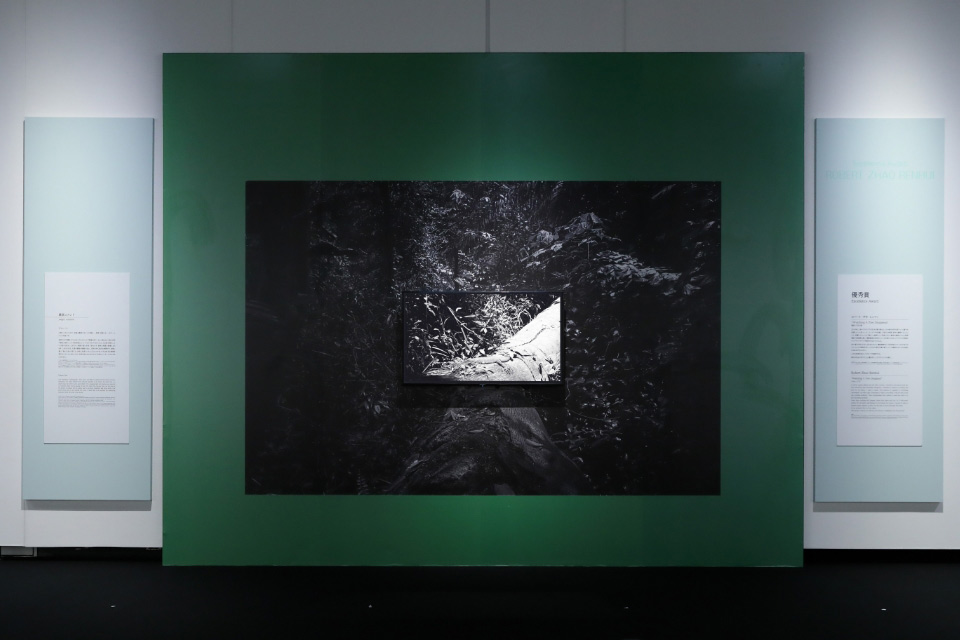 Robert Zhao Renhui, Trying to Remember a Tree, V. Watching a Tree Disappear. Courtesy of the artist and ShanghART gallery. Installation view at 'The New Cosmos of Photography Tokyo'.
Robert Zhao Renhui, Trying to Remember a Tree, V. Watching a Tree Disappear. Courtesy of the artist and ShanghART gallery. Installation view at 'The New Cosmos of Photography Tokyo'.
In the exhibition site, whenever the camera detects motion, the video will be transmitted live to the audience in the exhibition site.
Date Oct. 16 (Sat.) – Nov. 14 (Sun.)
10:00 – 18:00
Last entry 30 minutes before closing Closed on Mondays
Tokyo Photographic Art Museum (Exhibition Room on B1F)
Admission Free
Co-organize Tokyo Metropolitan Foundation for History and Culture, Tokyo Photographic Art Museum
Watching A Tree Disappear
In 2018, a giant albizia tree fell after a storm. I wanted to document how the tree will decay and eventually disappear. I installed a camera to monitor the tree for 24 hours, 7 days a week. The camera is capable of recording ‘movement’ as video clips.
Everytime a video is recorded, it will be sent to me via a mobile network. I have programmed the camera to send the video to a live streaming website. Some days, nothing will happen.
Some days there may be 2 or 3 telecasted videos. If I am lucky and happen to be beside the screen, I would be able to witness some animals as they use the tree to move through the forest.
As an artwork, this is a live video.
This project will go on until the tree decays completely into the ground.
More information on the exhibition, click here.
More information on the work, click here.
New Worlds, part of the group show, What a caterpillar calls the end, the world calls a butterfly at Field Studies
9th Oct 2021

Installation View of New Worlds @ Field Studies, 2021
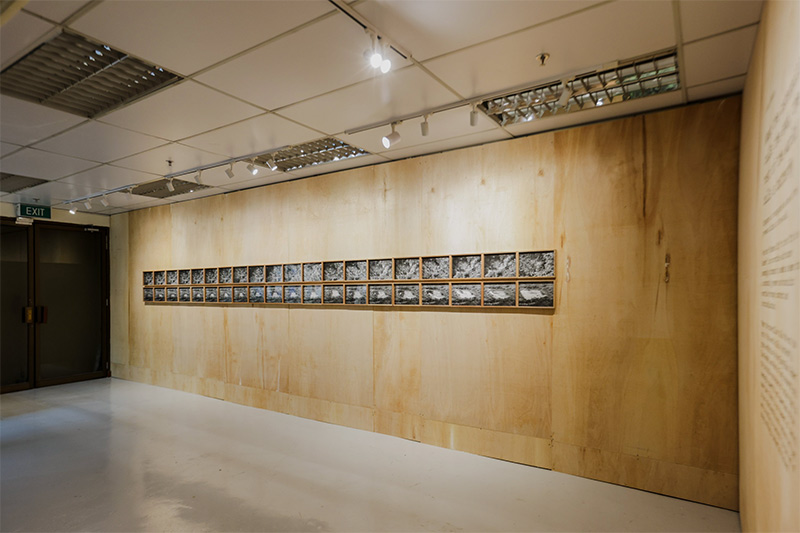
9 Oct 2021 - 27 November 2021
Saturdays: 1 - 4pm
Venue: Field Studies
Lam Soon Industrial Building 63 Hillview Avenue 10-06A Singapore, Singapore 669569
Singapore is recognised as one of the greenest cities in the world.
From the "Garden City" to the "City in the Garden", our narrative with nature seemingly attempts to embed us deeper into a constanly greener and naturalistic narrative through construct and structalisation.
"What the caterpillar calls the end, the rest of the world calls a butterfly" a group exhibition by Ang Song Nian, Robert Zhao Renhui and Marvin Tang research into the invisible processes of nature that is seemingly powerful yet powerless at the same time. There is an element of control in our relationship with nature but just who is really in control? Is the act of doing nothing a potenial future?
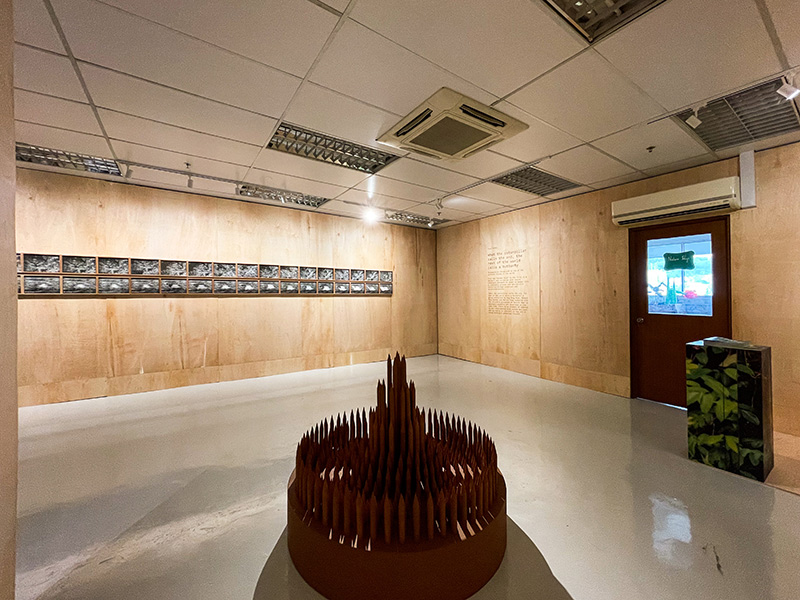
And a Great Sign Appeared / Evidence of Things Not Seen / We Watch Them Disappear, Screening
Still Somehow, It’s Illusions We Recall, Film program for the exhibition The Gift at Singapore Art Museum
2nd October 2021
Program Trailer, Still Somehow, It’s Illusions We Recall, Singapore Art Museum.
Still Somehow, It’s Illusions We Recall is a film programme presented by the Singapore Art Museum in conjunction with the ongoing exhibition, The Gift. Drawing on the exhibition’s theme of affinities and entanglements, the programme features responses to our current state of unprecedented disruption and isolation. The series of films conjure and reconfigure familiar aspects of life in ways that are intimate, yet alienating. The intertwining themes found in these filmic narratives present an avenue for collective introspection, and open up possibilities for the reanimating of a new and future self.
The film programme will run from 2 October to 4 November 2021, with on-site screenings in the Ngee Ann Kongsi Auditorium and Level 5 Theatrette at National Gallery Singapore. It features the Singapore premieres of feature-length and short films, as well as pre-screening introductions hosted by film curator, Jeremy Chua.
The short film section consists of personal works made by multidisciplinary artists Elysa Wendi, Min-Wei Ting and Robert Zhao over the past two years. They explore sensations relating to the transience and fragility of living in the physical or natural world. Each of the films investigates a different aspect of the subconscious reality of life in Singapore, and reminds us of the invisible forces of change that threaten erasure both on and off screen.
And a Great Sign Appeared
On Dec 22 2019, thousands of birds appeared in front of Robert Zhao Renhui’s home, darkening the sky and covering the open field next to a construction site. They were Asian openbill storks, birds foreign to Singapore and which had travelled a long way. Their appearance was a sign of something, but what of, Zhao was unsure.
More information on the work, click here.
*****
Evidence of Things Not Seen
Already one of the largest urbanised areas in the world, the Pearl River Delta continues to urbanise at an alarming rate. When Zhao first arrived in Shunde, Guangzhou, he was worried because he could not see or hear any birds for the first hour. Where had all the birds gone? In recent years, birds have been used as indicators of possible changes in the environment. By looking closely at the types of birds and the number of birds, we can learn more about the current state of the environment.
More information on the work, click here.
*****
We Watch Them Disappear
The wetlands in Yalu River, Dan Dong, is an important bird migratory site for the godwit and great knot. These birds migrate between New Zealand, China, North Korea and Alaska every year. In fact, the godwit’s migratory flight is the longest nonstop migration of any bird in the world. As more wetlands and coasts in South Korea and China become concretised, the wetlands in Yalu River remains one of the last sanctuaries for these birds.
Zhao visited the estuary in April 2019, during the time of the migrations, and spent time talking to a researcher who tracked the numbers of birds. Every year, their numbers dwindle. Yet, to see the birds in flight was a spectacular sight, and witnessed by huge crowds of onlookers.
More information on the work, click here.
Glacier Study Group, part of the group show, ANTHROPOLOGY OF ICE, Fotograf Festival 11
1st Sept 2021
 Glacier Study Group, 111cmx74cm, 2013
Glacier Study Group, 111cmx74cm, 2013

ANTHROPOLOGY OF ICE
2 Sep – 23 Oct 2021
Fotograf Gallery
Jungmannova 7, Prague 1
Tue–Fri, 1–7 pm; Sat, 11 am–7 pm
How would you find out what the composition of the atmosphere was like fifteen thousand years ago? There is no one to ask, although there were certainly humans living on the planet at the time. They did not, however, keep records of the levels of CO2 and other components of the atmosphere. The only things that have survived are paintings of flora and fauna and ornaments and symbols on bones and everyday items. Perhaps you could think about the fact that particular values of carbon dioxide or nitrogen oxide lead to a particular atmospheric temperature, and therefore a particular climate which benefits particular types of organism we can then recognize on human artifacts made at the time (or are directly composed of parts of these organisms, as is the case with mammoth tusks). This is, however, a long chain of thought that demands a certain level of speculation – an approach rarely present in science.
Let us try a different approach. Let us search for a “natural recording device”, some kind of non-human medium that would serve as a memory trace or record of the distant past. Such a medium would have to have been in touch with the atmosphere, after which it would have had to lay untouched for millennia before being discovered by a human who could decipher the message it contains. The thesis of this exhibition is that ice is one such perfect natural medium. The deep layers of glaciers, some of which contain ice that is thousands of years old, contain bubbles of ancient air that were trapped in the ice when it was on the surface of the glacier. This old ice then makes its way back to the surface in the form of glacier cores obtained through ice drilling, particularly in the Arctic and Antarctic.
Ice, then, is the material memory of the planet, allowing us to learn more about its present and past. According to the theorist and designer Dietmar Offenhuber, such natural memory media are examples of the phenomenon of autography, i.e. processes that produce their own visual records of themselves. The age of a tree, for instance, is recorded in its growth rings; air streams are manifested in the movement of grass in a field; urban air pollution is inscribed in the facades of houses and the lungs of citizens. In all these cases, what is taking place is visualization as an index of a certain process, just like ice can become an index of the past state of the atmosphere. Also important is the human agent who uncovers the autographic process and is able decode its significance. The human–ice relationship forms one of the axes on which our principles of terrestrialness are born, which become part of culture through the methods of scientific research, mythological narration or folk practice.
At this point, it is important to perform an anthropological gesture” that complicates science’s claim to always be the first framework to fully determine where we find ourselves and what we are to do. Instead, science is located side by side with a broad range of cultural activities that acquire meaning and dominance from situation to situation. Every here and every now has its own logic of internal truths which must be covered in its plastic ambiguity – and within the context of the climate crisis, this uncovers overlapping courses of observation that are at once geopolitical, geopoetic and geophysical. We can then also see that people are sometimes a message that propagates through various media, at other times media through which foreign messages travel, and sometimes – as in the case of ice – the medium and the message are found entirely outside the space of the human. People can, at most, come across these messages by chance, respecting this encounter as instructions for action.
More information on the exhibition, click here.
More information on the work, click here.
A Guide to the Flora and Fauna of the World, part of the group show, Interspecies Futures, Center for Book Arts, New York
13th April 2021
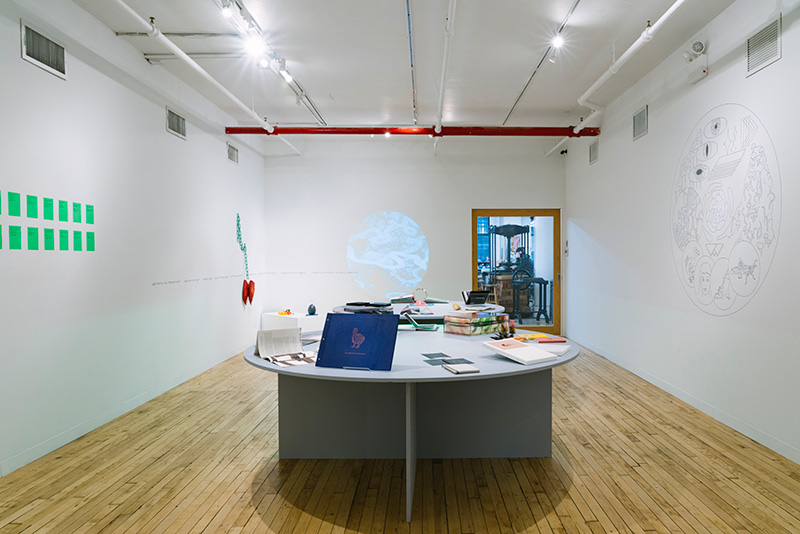 Installation view, Interspecies Futures, curated by Oscar Salgeuro. Photographer: Sean Davidson, 2021
Installation view, Interspecies Futures, curated by Oscar Salgeuro. Photographer: Sean Davidson, 2021
Apr 16–Jun 26, 2021
Interspecies Futures
Center for Book Arts, New York
Curated by Oscar Salgeuro
Immortality via jellyfish?
De-extinct dodos?
Synthetic tiger genitalia?
An interspecies history in two timestamps: from a 45,000-year-old cave painting of a wild pig in Indonesia to Elon Musk inserting a Neuralink chip into the brain of Gertrude the pig.
As we begin the third decade of the 21st century at the pace of COVID-19, an interspecies-transmitted virus, we realize that our anthropocentric fantasies may be more vulnerable than previously imagined. With genetic manipulation becoming exponentially more sophisticated and the capitalocene fueling planetary ecological collapse, how do we define and reinvent our relationship with nature and the other 99.99% of living beings moving forward?
Interspecies Futures [IF] is the first survey of bookworks by leading international practitioners from the contemporary fields of bio-art and speculative design who have turned to the book as a tool for the proposal of alternative human-nonhuman scenarios.
Informed by methods from conceptual art, posthumanism, biotechnology (CRISPR), and emerging interfaces (AI, VR, 3D printing), these artists produce documents that defy the borders between fiction and reality. In their hands field guides, lost diaries, investigative dossiers, lab journals, corporate catalogues become portals into multiple interspecies possibilities.
[IF] introduces practices that cover a large range of positions toward the nonhuman. Some of the books propose new eco-conscious alternatives, as in Non Flowers, 2021 by Thomas Pausz (FR/IS). Other books imply trans-species dreams such as the 2046 diaries of a scientist in Aurelia Immortal, 2017 by Javier Viver (ES). Some works pose new dilemmas, as in Dodo in the Room, 2019 by Ege Kokel (TU/AT), which predicts a wave of de-extinction pets. Some of the futures imagined are collaborative, like the sonic experiments in Transversal is a Loop, 2019 by Saša Spa?al (SI). We even find proposals for post COVID-19 realities, as in Kuang-Yi Ku (TW) whose Tiger Penis Project, 2018, imagines the end of wildlife trade in Chinese medicine via lab-grown animal parts; or Noam Youngrak Son (KR), whose Becoming a Bat, 2021, appeals to solidarity with virus-carrying species via a book designed to be perceived primarily by nonhumans.
In addition, the show will mark the official debut of four new artist books, as well as an exclusive interview with Thomas Thwaites, author of the controversial speculative performance project GoatMan, as well as with Alexandra Daisy Ginsberg, whose biodesign work has infiltrated the covers of various scientific journals. Finally [IF] will present a special spotlight into the publishing experiments of visionary scientist-artist Dougal Dixon, the father of Speculative Zoology, who will contribute some reflections and never-before-seen artwork and annotations of his latest masterpiece: Greenworld.
An Eagle Returns, part of the show, TONIGHT THE AIR IS WARM
24th Feb 2021
 An Eagle Returns, 2021
An Eagle Returns, 2021
Triptych, 49cm x 27cm each
Installation View, TONIGHT THE AIR IS WARM at Kristinh Jellegjerde, London. Image courtesy of Kristinh Jellegjerde.
26 FEBRUARY - 27 MARCH 2021
London, Kristinh Jellegjerde Gallery
Press Release : Tonight the Air is Warm brings together a collection of vibrant and diverse photography, print and video works by nine established, mid-career and emerging artists from Southeast Asia. Curated by Tolla Duke Sloane, the show will occupy both the main and speakeasy space at Kristin Hjellegjerde’s London Bridge gallery, providing audiences the opportunity to fully immerse themselves in the region’s artistic landscape. From the tropical gothic to the surrealism of dreams and folklore, and the reimagining of historical narratives, the artists’ reflect on universal issues relating to identity and belonging, whilst also providing heightened and imaginative insights into the cultural specifics of their geographical locations.
...Also based in Singapore, Robert Zhao Renhui’s cerebral practice is preoccupied with the natural world and human intervention. In an ongoing series, he inserts a piece of human detritus into the jungle and then sets up a camera trap to record nature’s interactions. The resulting images are typically dark and closely-cropped with an intimate, voyeuristic quality that places the viewer in an almost uncomfortable position as an outsider looking in...
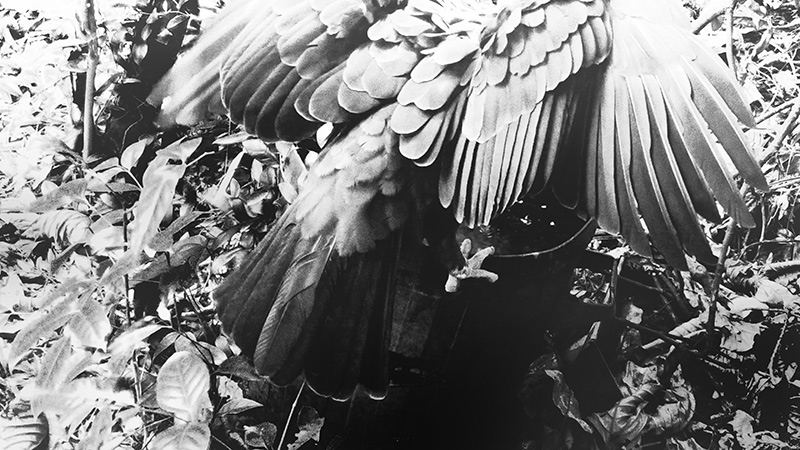
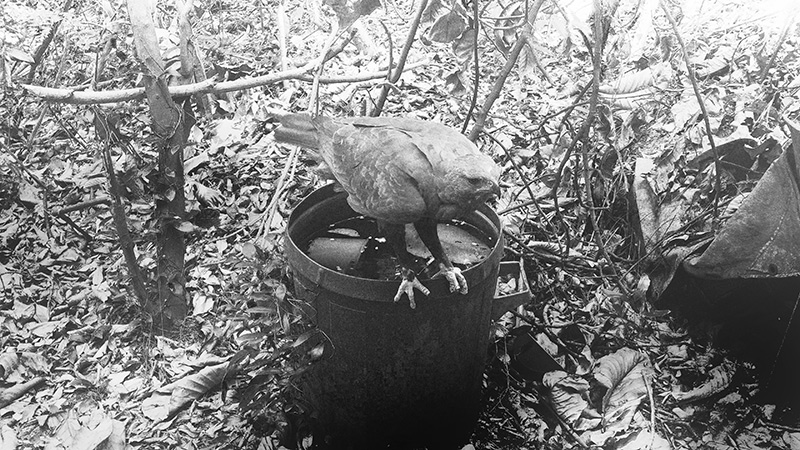
More information on the exhibition, click here.
Trying to Remember a Tree IV, It Takes Time, part of the show, Re-written: The World Ahead of Us
20th Jan 2021
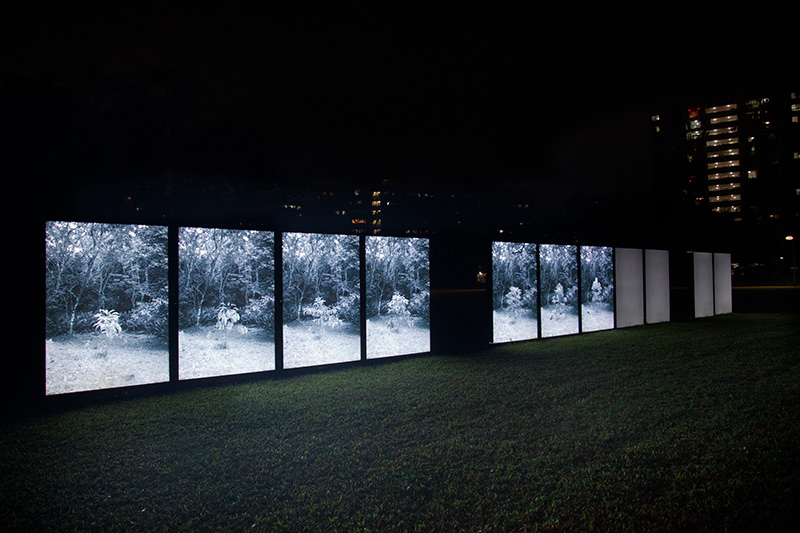 Installation View, Trying to Remember a Tree IV, It Takes Time, 2021.
Installation View, Trying to Remember a Tree IV, It Takes Time, 2021.
22 January – 6 June 2021
Jurong Lake Garden
Re-written: The World Ahead of Us
A brand new commission by the Public Art Trust and its most ambitious ever, RE-WRITTEN presents 14 text-based public artworks by Singapore artists, some of which are inspired by local writers and literary works, contemplating the multitude of changes - from the minute to the tremendous - experienced in our daily lives since the onset of COVID-19. Distributed across eight parks spanning east to west, the artworks resemble visual poetry unfurling across the island, awaiting discovery. The physical presentation will also be accompanied by a virtual engagement component, which seeks to offer new entry points in learning about and experiencing public art in a world transformed.

A time based public art work that unveils the growth of a tree over a period of a year.
It Takes Time is a site-specific artwork that follows the growth of a single tree for a period of 12 months. The artist will select a tree to document from the park where the artwork is situated. The installation comprises a series of 12 light boxes. Every month, an image of the tree, as it grows, will be installed on the light box and revealed to the public. At the end of the year, the series, depicting the growth of a single tree in a year, will be revealed across 12 light boxes.
At the back of the light boxes will be a display of the text, “IT TAKES TIME”. The statement can refer to vegetative growth or more general ideas of change, evolution and recovery—transformations that require patience and close attention. The general message is that by paying closer attention to the environment and noticing small, subtle changes, we can become more deeply connected with the world. This work celebrates the small changes and documents them in a way that engages and uplifts park visitors. Each time, they may notice the illumination of a new light box, signifying a continuous process of growth and change, which is the hopeful message of this artwork. Nature has gone on before, is going on and will go on.
More information on the exhibition, click here.
More information on the work, click here.
THE POND, part of the exhibition, In The Forest, Even the Air Breathes@ GameC, Bergamo, Italy
2nd October 2020
The Pond, 2 channel view (out of 4)
Dimensions Variable
4 Channel HD video with sound. Photographs.
1.10.20—14.2.21
IN THE FOREST, EVEN THE AIR BREATHES
The GAMeC presents In The Forest, Even The Air Breathes, a project by the Indian curator Abhijan Toto nominated winner of the tenth edition of the Premio Lorenzo Bonaldi per l’Arte – EnterPrize in June 2019.
The jury—headed by Lorenzo Giusti, Director of the GAMeC, and made up of Caroline Bourgeois, art conservationist, Pinault Collection, Venice; Nicola Ricciardi, former Artistic Director, OGR, Turin; and Li Zhenhua, independent curator, Berlin/Zurich—decided to award the Prize to Abhijan Toto’s project, nominated by Sebastian Cichocki, Head Curator of the Museum of Modern Art of Warsaw, for the way in which he managed to develop a theoretical reflection around nature, viewed here as a new form of transcultural cosmology, with an experimental and collective curatorial approach.
In The Forest, Even The Air Breathes draws on the research relative to the “Forest Curriculum”: a philosophy of the Earth which promotes the need for a localized cosmo-political image of our current ecological era. A vision that offers an alternative to the principle of “planetarity” intrinsic to the concept of the Anthropocene, to which the idea is generally associated of a universality of the Western model of the “human,” one which has historically favored the exploitation and impoverishment of any territories considered peripheral by this outlook.
In particular, the exhibition focuses on the cosmological systems of Zomia, the forest belt that stretches from North-East India, through the Chittagong Hill Tracts of Bangladesh, the state of Shan, the Isan heartland in Thailand, the tropical forests of the Malay Peninsula and into the Cordilleras of the Philippines
The exhibition—split into three sections that bring together the works of seven international artists—sets out to imagine what forms of politics and pedagogy might be invented in order to make man’s relationship with the lands he lives on more intimate.
The projects of the artists thus investigate the relationship between human and non-human worlds within various contexts and landscapes of Zomia.
Nguyen Trinh Thi and Robert Zhao Renhui, in coming to terms with places in which complex narratives have been swallowed up or canceled, rethink the principle of observation in order to devise new models of investigation with a view to identifying new relations of colonialism as well as natural, human, and identitary histories.
Investigating stories of war and ongoing occupations throughout the region, Sung Tieu, Karl Castro, and Joydeb Roaja examine the link between the military-industrial-forestry system and popular resistance movements. Their works focus on the links between stories of violence, be it perpetrated by imperialist, neocolonial, or postcolonial nation states, and on the interplay between the violence itself and nature.
Focusing on the relationship between tales of the spirit and the world of humans, and on how they become codependent, the works of Khvay Samnang and Soe Yu Nwe present personal and political visions of the existence between worlds. Their works focus on the ability to change form, central to the construction of identity in Zomia, where even the spirits need to mutate in the face of the political reality, while borders that harden into nations can instead transform once more in the magical space of the forest, where the notion of state dissolves among the leaves.
More information on the exhibition, click here.
More information on the work, click here.
Evidence of Things Not Seen @ HE Art Museum, Guangzhou, China
1st October 2020
 Evidence of Things Not Seen, 2019 - Ongoing, Film Still
Evidence of Things Not Seen, 2019 - Ongoing, Film Still
7 Channel Video, HD, Sound, Dimensions Variable.
Commissioned by the HE Art Museum, Guangzhou.
Evidence of Things Not Seen, Video Shorts/Trailer
This is a story of a man who has decided to stop to growth of his construction business for the birds.
As one of the largest urbanized areas in the world, the urbanization of the Pearl River Delta is growing and expanding incredibly fast. When I first arrived in Shunde, Guangzhou I was worried because I could not see or hear any birds for the first hour. I was wondering where have all the birds gone? In recent years, birds have been used as indicators of any changes that might be in the environment. By looking closely at the types of birds and the number of birds, we can receive information from the environment.
I was surprised to find a private sanctuary for birds in the middle of the city. Sadly, this has also become one of the ways in which wild birds can survive in an urbanised city. When someone decides that birds should have a space to live in.
I was introduced to Mr Xian, who is also known as the Bird Uncle of Shunde. Mr Xian rented a land of 180 hectares to grow bamboo for his construction business in 1998. He uses the bamboo to create scaffolding for construction sites. When migratory birds started to build their homes in his bamboo forest, Mr Xian decided to stop harvesting the bamboo and create a wet bamboo forest for the birds. He dug a moat around the bamboo forest so that the birds could have a barrier from the city. He is also obsessed with observing the birds. He built several bird-watching hides in the sanctuary to observe the large numbers of birds around the bamboo forest. He keeps visitors out of the sanctuary as he believes that any human presence would disturb the birds. He continues to rent the space for the birds.
When I visited the bird sanctuary, it was the only place in the city that I could hear so many birds. As nobody has really surveyed the number and assemblage of birds in this forest, I volunteered to survey the forest with an ecologist. The approach of the work was to document the lives of these birds in this forest, as well as to tell a story of mutual co-existence and respect that Mr Xian has with the thousands of birds in his sanctuary. It is very much a work of trying to understand what the birds are trying to tell us as to understand what would compel Mr Xian to continually fund the preservation of this forest for the birds.
We installed a total of 20 remote sensing cameras in October 2019. An exhibition of the first year of videos/images will open on the 1st of October at HE Art Museum in Guangzhou.
We plan to document the birds as long as we can.
Commissioned by the HE Art Museum, for the exhibition, From The Mundane World.
Concept: Robert Zhao Renhui
Music: George Chua, Unveil from the Album, Evidence of Things Not Seen, 2006
Special Thanks : Feng Bo Yi, Shawshu, Xian Quanhui, Maiya, He Yanyu, Wu Zhenyu, Luo Junlang
Inspired by the album, Evidence of Things Not Seen by George Chua, 2006.
For more information on the exhibition, click here.
For more information on the work, click here.
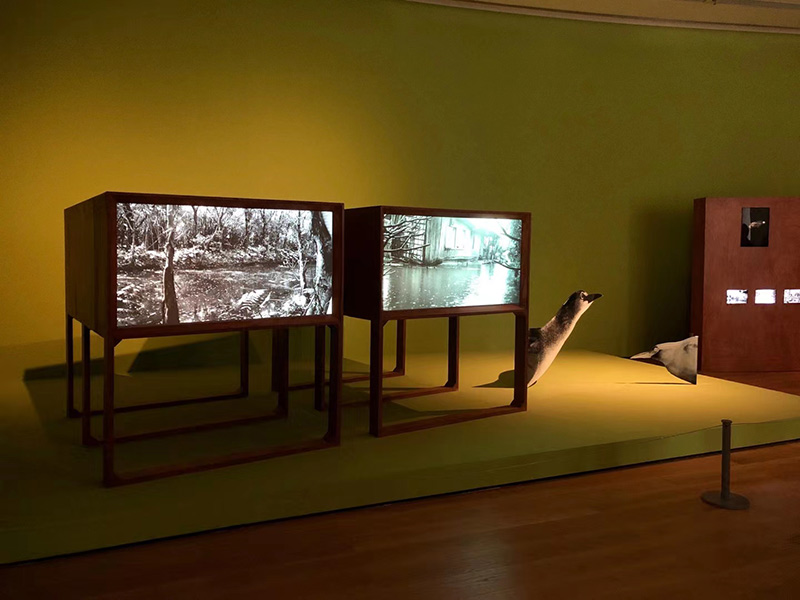
Installation View of Evidence of Things Not See, HE Art Museum, 2021
Evidence of Things Not Seen II @ Busan Biennale
5th Sept 2020
Installation view, Evidence of Things Not Seen, Busan Biennale 2020. 3 channel video, HD, sound. Image courtesy of Busan Biennale.
Robert ZHAO Renhui, Evidence of Things Not Seen, II,2020, Mixed media, variable dimensions, on-going project
Commissioned by Busan Biennale 2020
Special thanks: Jacob FABRICIUS, Pooluna CHUNG, JiYeon SEONG, Jihyun WOO, Bongnae CHO
Music: Coda by George CHUA from the album, Evidence of Things Not Seen, 2006
A Paulownian tree grows inside an abandoned house in Bongnae Dong, the port area of Busan. Unlike most of the trees in the vicinity, which are planted by the municipal government, this tree has grown organically, out of a seed in the rubble.
There is a human and architectural history of this site. When was the house built? Who lived in it? Why was it destroyed?
There is also a cultural and economic significance to this fast-growing species, it is one of the most important trees in China in terms of timber production. It is also found in Japan and Korea, and is used in furniture, decorative products and musical instruments. It is on the back of the 500 Yen Japanese coin. It goes by many names: empress tree; foxglove tree; karri tree; princess tree. It has a particular significance in Japanese tradition: In aristocratic families, when a girl was born, the family used to plant a Paulownia. When the girl got married, the family cut down the tree to make a beautiful chest for the daughter from the wood. In America, it was first imported as an ornamental plant that later became an invasive species. This is the history of the Paulownian Tree but it also tells us little of this very tree on the site in Bongnae Dong.
Based on initial observations and conservations, we know that someone once tried to kill the tree but failed. The tree persists. The tree also houses thousands of insects. Ants, beetles and moths. A single sparrow comes often in the afternoon to feed on the insects. It comes without fail, almost at 2pm every alternate day.
One of my abiding interests as an artist is in non-human actors in human environments, and the unseen relationships between the natural and the manmade. Using remote sensing and time-lapse cameras, I will document the life of this tree a year, capturing its changes in different weathers, its inhabitants and visitors, and other phenomena that are unforeseen. When the video plays out, a sense of “tree” or “plant” time is evoked, a deeper, slow one than time seen and felt on a human scale.
The videos are updated throughout the course of the Biennale.
For more information on the Biennale, click here.
Virtual viewing of Biennale, click here.
More information on the work, click here.
Evidence of Things Not Seen II Shorts/Trailer
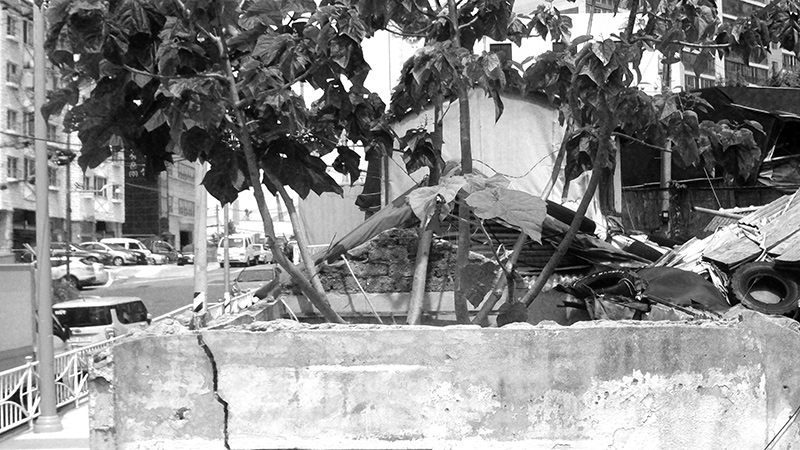 A Paulownian Tree grows inside an abandoned house. The only tree in the city that is not grown by the municipal government. The artist surveryed the tree for a year.
A Paulownian Tree grows inside an abandoned house. The only tree in the city that is not grown by the municipal government. The artist surveryed the tree for a year.
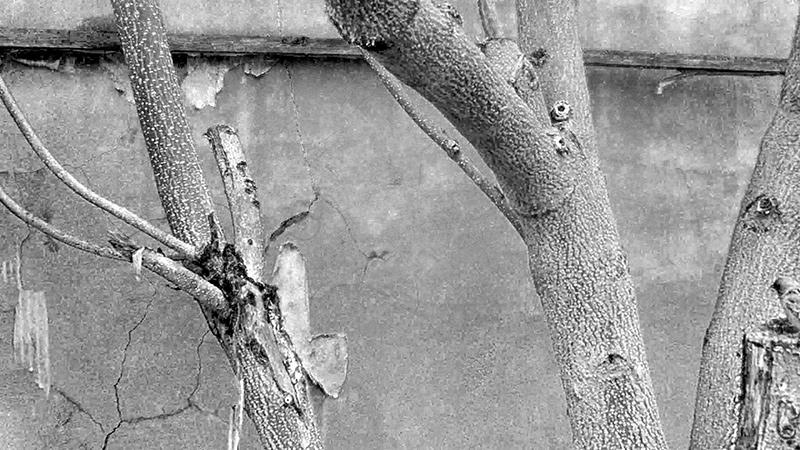 A sparrow visits the tree everyday at 2pm.
A sparrow visits the tree everyday at 2pm.
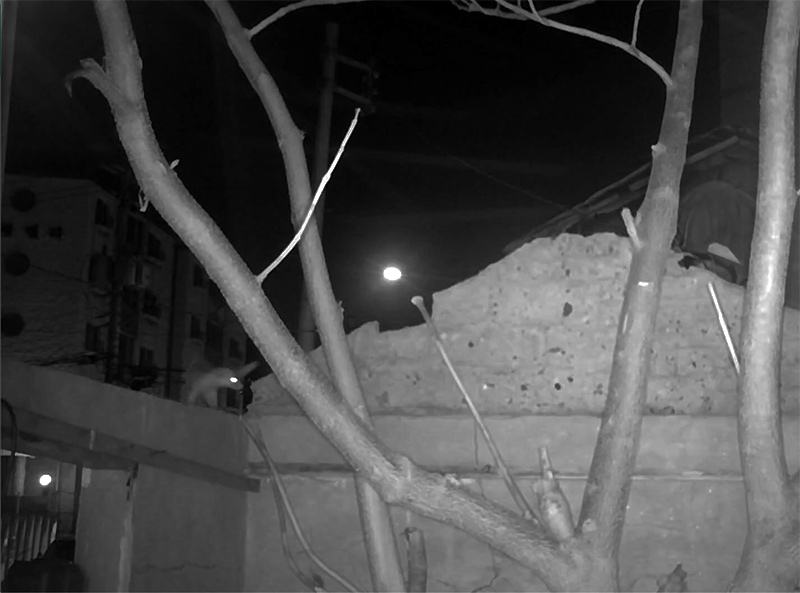 A weasel feeds at the tree once a week in the dead of the night.
A weasel feeds at the tree once a week in the dead of the night.
Exhibition On Art Books vol.01: A Multidirectional South @ Jiazazhi, China
28th June 2020
Installation view. New Forest, A History of Cows. Jiazazhi, China. image courtesy of Jiazazhi.
New Forest, A History of Cows and Singapore, Very Old Trees are featured in the exhibition 'A Multidirectional South' at Jiazazhi's exhibition space in Ningbo, China.
More information on New Forest, A History of Cows, click here.
More information on Singapore, Very Old Tree, click here.
More information on the show, click here.
Christmas Island, Naturally at UCCA, Meditations in an Emergency
20th May 2020
Installation view. Christmas Island, Naturally. Meditations in an Emergency, UCCA. Image courtesy UCCA, 2020.
“Meditations in an Emergency” is the first exhibition to open in 2020 at UCCA Beijing, bringing together 26 Chinese and international artists reflecting on the role of art during a time of crisis.
From May 21 to August 30, 2020, UCCA Center for Contemporary Art presents the group exhibition “Meditations in an Emergency.” The exhibition emerges in the wake of the pandemic which has created the first truly global moment of the twenty-first century. As it marks UCCA’s reopening after the longest closure in its history, since late January, the exhibition looks to art as a source of solace, reflection, and solidarity. Structured in five sections—focused on everyday life, the body and biopolitics, the human/animal dichotomy, migration and borders, and the information landscape—the exhibition includes works by 26 artists. These engage with the currents that have led to our present circumstances, and what futures we might find in the aftermath. The exhibition takes its title from an anthology of poetry by Frank O’Hara (1926-1966), better known during his short life as a curator at New York’s Museum of Modern Art. As O’Hara wrote in one of the included poems, “In times of crisis, we must all decide again and again whom we love.”
Participating artists include Lawrence Abu Hamdan (b. 1985, Amman), Musquiqui Chihying (b. 1985, Taipei), Forensic Architecture (est. 2010, London), Han Bing (b. 1986, Shandong province), Christopher K. Ho (b. 1974, Hong Kong), Joyce Ho (b. 1983, Taipei), Hsu Chia-Wei (b. 1983, Taichung), Hu Rui (b. 1990, Liupanshui, China), Pierre Huyghe (b, 1962, Paris), Jiang Zhuyun (b. 1984, Hangzhou), Oliver Laric (b, 1981, Innsbruck, Austria), Amiko Li (b. 1993, Shanghai), Li Liao (b. 1982, Honghu, China), Lu Lei (b. 1972, Jiangsu province), Shana Moulton (b. 1976, Oakhurst, USA), Qiu Anxiong (b. 1972, Sichuan province), Mika Rottenberg (b. 1976, Buenos Aires), Angela Su (b. Hong Kong), Wolfgang Tillmans (b. 1968, Remscheid, Germany), Yi Xin Tong (b. 1988, Lushan, China), Wang Bing (b. 1967, Xi’an), Yang Fudong (b. 1971, Beijing), Zhang Hui (b, 1967, Heilongjiang province), Zhang Peili (b. 1957, Hangzhou), Robert Zhao Renhui (b. 1983, Singapore), and Payne Zhu (b, 1990, Shanghai).
“Meditations in an Emergency” is curated by the UCCA exhibitions team: Guo Xi, Luan Shixuan, Ara Qiu, Lin Luqi, Duffy Du, and Neil Zhang.
Like art institutions all over the world, in an unpredictable year UCCA has learned to prioritize adaptability and flexibility in light of changing conditions. Previously planned exhibitions for the spring and summer have, regrettably, been rescheduled for later in the year or farther in the future. “Meditations in an Emergency” marks an adjustment to new realities, coming together in a world demarcated by new logistical restrictions. Despite these parameters, the exhibition also offers UCCA an opportunity to think nimbly, allowing our curatorial team to re-focus on regional context and urgent artistic currents. It juxtaposes emerging artists with more established figures from China and abroad, and engages with pressing concerns that previously lurked beneath the surface. The works mostly predate January 2020, but have taken on new significance in this changed world.
The first section, “The Fragile Everyday,” examines the practice of everyday life. It includes Zhang Hui’s paintings of masked nurses and Shana Moulton’s eccentric, isolated pseudo-sitcom Whispering Pines ∞. Both date to 2018, yet will be instantly recognizable to anyone who has recently found themselves glued to news updates or practicing social distancing. The next section, “Vital Signs,” gestures towards the potential new biopolitics which may arise from the current moment, yet Wang Bing’s delicate documentary portrait of illness and aging in Mrs. Fang (2017) and Li Liao’s investigations of contemporary beauty standards and “gym bodies” speak to physical anxieties that are already well-cemented. “Beyond Animality” coalesces out of stark reminders of the connectivity and thin boundaries between human and animal, with Oliver Laric’s shape-shifting animations and Robert Zhao Renhui’s studies of environmental destruction questioning longstanding ideas of human exceptionalism. As borders have slammed shut to a degree not seen for decades, “Othered Movements” addresses how global flows of people and commodities have become at once taken for granted and contested, through works such as Mika Rottenberg’s surreal parable of international capitalism, NoNoseKnows (50 Kilos variant) (2015), and Christopher K. Ho’s installation CX 888 (2018), which restages a diasporic journey. The final section, “Out of Focus” features works including Yang Fudong’s blurry pairings of Nietzsche quotes and photographic prints, and Wolfgang Tillman’s reflection on time and history through the medium of collected news data, cutting through media noise to ponder the ultimate accessibility of cold hard facts.
By reopening with “Meditations in an Emergency,” UCCA is proud to serve our community as we best know how, while also humbled by and deeply appreciative of the sacrifices that have been made by many around the world. Special measures to ensure the safety of all museum guests will be in place throughout the duration of the exhibition, and free entry will be granted to medical professionals. We hope that viewers may find comfort and joy in the familiar experience of visiting a museum, while also reflecting upon the experience we have all shared, the fascinating complexity of our planet, and the common challenges faced by all humanity.
More information on the exhibiton, click here.
More information on the series, clicke here.
New Forest 1, A History of Cows
16th March 2020
The Last Cow in Singapore on Coney Island, one week before it died, 2016
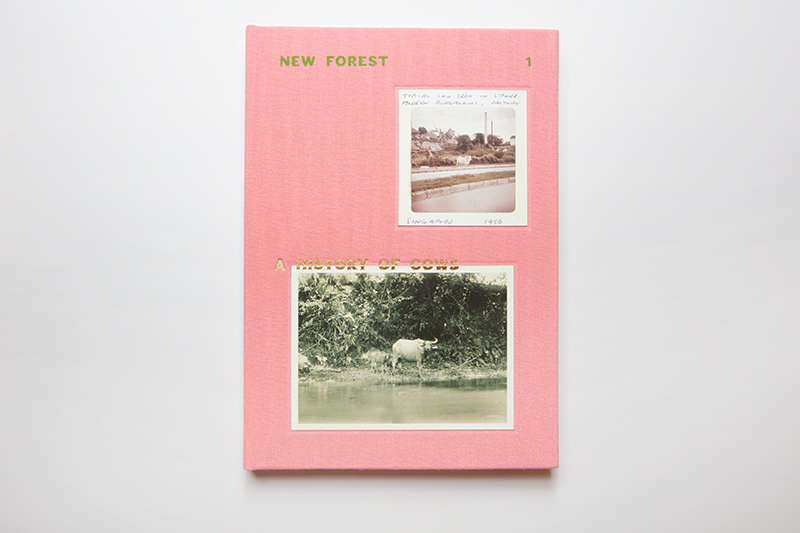
New Forest is a new series of books looking at secondary tropical forest ecologies and histories. It is published by The Institute of Critical Zoologists.
The first volume is dedicated to the last cow in Singapore, which died in 2016.
The book contains images of the cow just before it passed away.
In 1935, a herd of feral cattle was spotted roaming Singapore. Since then, alleged sightings have been rare. Reports came mainly from Japanese soldiers in World War II and occasionally from local residents. If these reports are true, these cows were confined to the areas of Tampines, Punggol, Sembawang and Pulau Ubin. In 2016, a cow was discovered on Coney Island but died shortly after.
Some believe that wild cows still roam Singapore.
Conceived by The Institute of Critical Zoologists (ICZ) between 2014 and 2019, this book features images of cows in Singapore from the 1890s to 2016 from ICZ's archive.
Designed by H55 in Singapore
Published in 2020 by Robert Zhao Renhui
Edition of 1000
72 pages, 48 images. Hard Cover.
14.5cm x 20.1cm x 1.5cm (Thick)
ISBN: 978-981-14-4877-5
For information of the work, click here.
For information of the book, click here.
Purchase book here via Paypal
Shipping to Singapore https://tinyurl.com/v95fcpt
Shipping to Asia https://tinyurl.com/qwf5gze
Shipping to Rest of the World https://tinyurl.com/v9vnk93
Purchase book here via DBSPayLah for Singapore customers only.

For delivery to Singapore, please make a payment of $45 with the message "A History of Cows" and email your delivery name and address to info@criticalzoologists.org & robertys@gmail.com
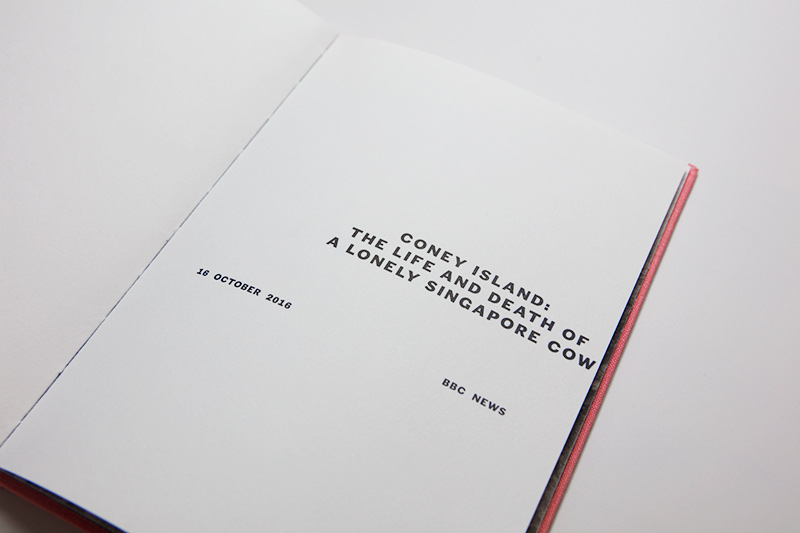
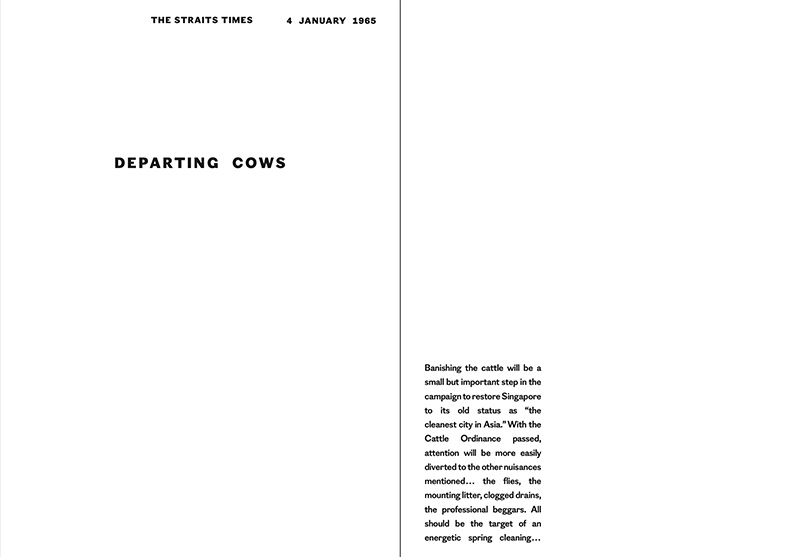

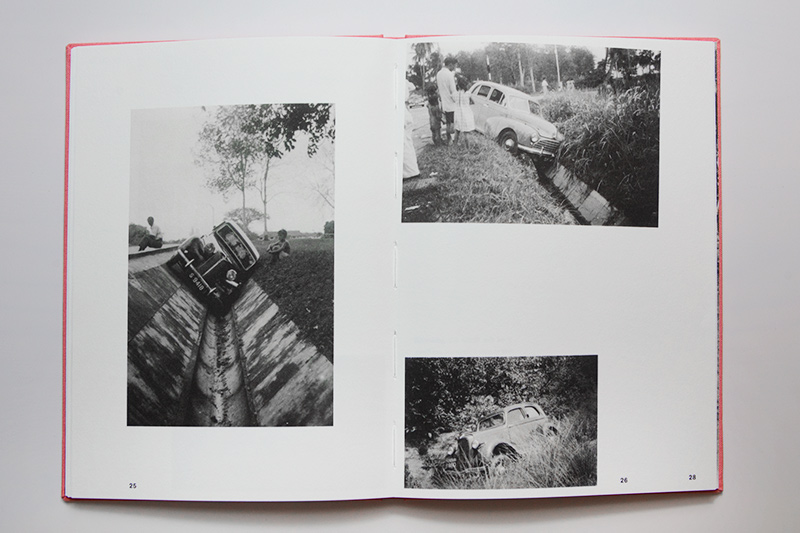
Singapore, very old tree, 2nd edition
15th March 2020
We are pleased to announce the release of our 2nd edition of this box set, Singapore, very old tree.
Inside the box, you get a booklet containing the stories of the 30 trees in the project, 30 postcards of the trees, a map of trees of interest in Singapore and poster of one of the trees.
Designed by gideon-jamie in Singapore
Published in 2020 by Robert Zhao Renhui
Edition of 1000
Booklet:10.6cm x 15.6cm x 0.5cm (Thick), 76 pages, soft cover, 30 images, 2C (black and silver) offset lithography on kraft paper
Postcards: 30 pieces, 10.6cm x 15.6cm each, Maple Stucco 320gsm with spot UV
Map: 7.7cm x 15.6cm (folded), 59.4cm x 15.6cm (opened)
Poster: 10.6cm x 15cm (folded), 60cm x 42cm (opened), 2C (black and silver) offset lithography on kraft paper
ISBN: 978-981-14-4946-8
Purchase book here via Paypal
Shipping to Singapore https://tinyurl.com/sjb4p8v
Shipping to Asia https://tinyurl.com/rud74gt
Shipping to Rest of the World https://tinyurl.com/sjwjb3e
Note: The box which houses the contents will be the same packaging used for shipping. There will be no added packaging. The box set was designed to be shipped, reducing the need for more packaging during transit.
Purchase book here via DBSPayLah for Singapore customers only.

For delivery to Singapore, please make a payment of $45 with "Singapore, very old tree" as a message and email your delivery name and address to info@criticalzoologists.org & robertys@gmail.com
For more information of the box set, click here.
More information on the project, click here.
A Guide to the Flora and Fauna of the World part of the exhibition Art Is Still Here: A Hypothetical Show for a Closed Museum
13th Feb 2020

World Godlfish Queen from the series A Guide to the Flora and Fauna of the World
111cm x 74cm
Archival Digital Print mounted on Aluminium
13th Feb 2020 - Ongoing
Press Release : Here at M WOODS we recognize that the current health emergency in China has affected our communities and has forced many of our museums, institutions and galleries to close, leaving a space in which the arts can comment and reflect.
As a public museum, we ask how we then experience art during times of institutional closure: what are the forms that art and art museums must take when galleries become inaccessible to the public?
In light of this, M WOODS will present ‘Art Is Still Here: A Hypothetical Show for a Closed Museum’, an online exhibition of moments and happenings – contributions of artworks, videos, photographs, words, poems, instructions and thoughts – by artists and thinkers around the theme of ecology, nature, extinction, isolation and kinship, curated by our Artistic Director and Chief Curator Victor Wang.
Conceived as a long-term visual project that will virtually occupy both M WOODS museum locations (798 and Hutong), this experimental exhibition will unfold over a period of several weeks: different galleries of the museum will be open virtually, with accompanying artworks presented online through the museum’s online platforms – Weibo, WeChat, Instagram and Facebook – throughout the duration of the show.
In the context of Mainland China, social media has now become a very powerful tool in sharing information and connecting communities both locally and internationally during the quarantine period. With no end date set for this project, the timeframe is contingent on the opening of our museums and public institutions, and therefore artists will continuously be invited to participate.
Through this activity we hope to continue our mission of working with artists to provide art for the public, making it accessible at all times and in all circumstances.
More information on the exhibition, click here.
More information on the work, click here.
The Lines We Draw, ShanghART Gallery, Singapore
15th Jan 2020
The Lines We Draw
Installation view, ShanghART Singapore, 2020
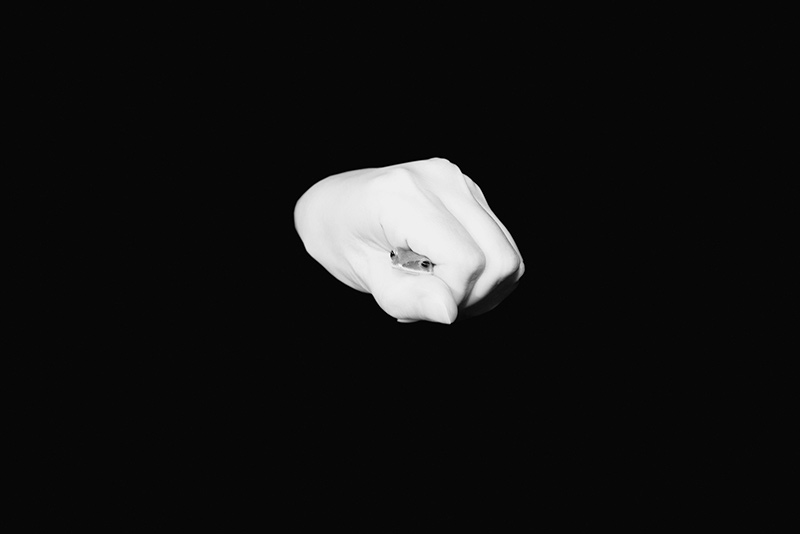
Opening: 15 January 2020, 6pm – 8pm
Duration: 15 January – 15 April 2020
Singapore, December 2019 – ShanghART Singapore is pleased to present a solo exhibition by Robert Zhao Renhui, The Lines We Draw. Bringing together recent works spanning photography, video and installation, this exhibition explores migration and extinction in the natural world. Drawing from narratives from Dandong and Taiwan, China and Singapore, Zhao’s work spotlights situations of ecological interest: from the migrations of godwits and great knots over the skies of the Yalu River estuary to the eradication measures against invasive spotted tree frogs in Taipei.
The exhibition is split into three parts — the first part is titled Disturbances, comprising images and objects that explore various taxonomies humankind has imposed on nature, such as native and invasive, noxious and useful. The work includes images of the spotted tree frog, an invasive species in Taipei crowding out the native white-lipped frog. These were created when “Remove Every Frog” Zhao joined a group of volunteers in Taipei who meet regularly on night hunts to capture invasive spotted tree frogs.
The second section, The Lines We Draw, is a series of large-scale lightboxes depicting bird migration in Yalu River. Located between China and North Korea, the Yalu river serves as a border; a politically charged space both on and above ground. For the migratory godwits and great knots, the river carries another meaning; it is a checkpoint in their annual journey that spans across the globe from Alaska to New Zealand. During migration season in 2019, Zhao and a local researcher visited the mouth of the Yalu River to document the phenomenon.
The last section of the exhibition is titled A Monument to Thresholds and explores extinctions and conservation efforts to prevent them. Gathering objects and narratives from different parts of the world, this section attests to the ambiguities of ecological conservation, and the extreme measures preventing species wipeout.
Zhao is particularly interested in threshold states, as both migration and extinction involve the crossing of boundaries. Exploring the spaces between invasives and natives, foreign and local, life and death, his works embrace a multitudinal perspective on the world. Although his images are drawn from specific locales, they are not constrained by their geographies. They remain mysterious, inviting contemplation without closing off interpretative possibilities, allowing for a position that is perpetually changing and unfolding.
In humankind’s pursuit for objectivity and order, whether within the field of science or politics, they have drawn lines across landscapes, communities, and disciplines. Zhao’s practice scrutinises the scientific method by infusing it with the aesthetic sensitivity and poetics of his images. In light of the ongoing Anthropocene extinction, the beauty in Zhao’s works is fraught with tension and complexities; beneath the familiarity of animals and cabinets of curiosities lies the negotiation between humankind’s understandings of existence and the latter’s perpetual changeability. Zhao problematises the safety of anthropocentric knowledge through representations of the other; reflecting on the lines and logics demonstrated by beings other than ourselves.
For more information on the exhibition, click here.
For more information on the work, click here.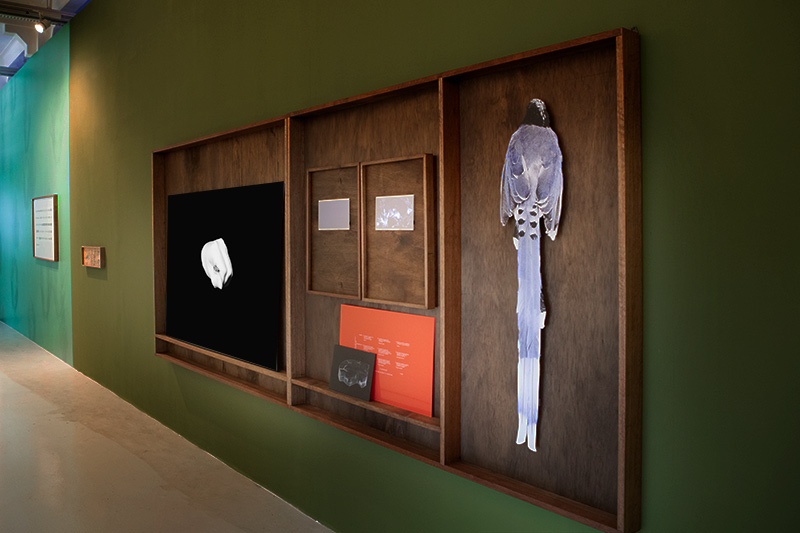
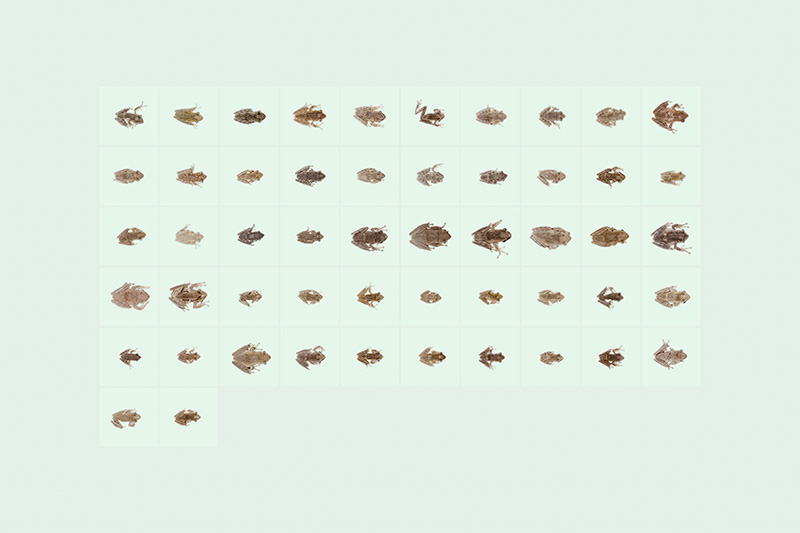
Queens Own Hill and Its Environs, Singapore Biennale 2019
22nd November 2019
Queens Own Hill and Its Environs
Installation view, Singapore Biennale 2019
Singapore Biennale 2019
Every Step in the Right Direction
November 22, 2019–March 22, 2020
The Singapore Art Museum (SAM) announces the title of the sixth edition of the Singapore Biennale: Every Step in the Right Direction. Through this title, Singapore Biennale 2019 (SB2019) will explore curatorial and artistic themes common to our human conditions and the catalytic role ‘hope’ plays in pushing for change. SB2019 will pivot on Southeast Asia, and from there, extend to the rest of the world. The international contemporary art exhibition is organised by SAM and commissioned by the National Arts Council, Singapore.
SB2019 Title: Every Step in the Right Direction
Helmed by Patrick Flores as SB2019 Artistic Director, and with a curatorial team of six members from Singapore, Southeast Asia and beyond, Singapore Biennale 2019: Every Step in the Right Direction focuses on the imperative of making choices and taking the steps to consider current conditions and the human endeavour for change and betterment.
Patrick Flores, Artistic Director of SB2019 explains, “It may be said that the world is troubled. To sense such a state of flux is to acknowledge the situation and begin to face it. For Singapore Biennale 2019: we ask – what is the possibility of art, the artist, and the audience in light of this trouble? What is the responsibility of the artwork, its making, and its experience in the prospects of future action? As we believe, every effort to change the world for the better matters. SB2019 puts its faith squarely in the potential of art and its understanding to rework the world, expressed in the Biennale title: Every Step in the Right Direction.”
For more information on the Singapore Biennale, click here.
=====
Queen’s Own Hill and its Environs, 2019
Photography, video and found objects in display cabinet with artist-led tours
240 x 500 x 120 cm
Collection of the Artist
Singapore Biennale 2019 commission
For over a year, Robert Zhao Renhui ventured into the forested areas surrounding Gillman Barracks to observe and study its significance. Taking its title from the former name of the area, Queen’s Own Hill and its Environs comprises a cabinet of curiosities with more than 100 components featuring videos, photography and found objects. Collectively, they chronicle the history of the land as well as its changing function as plantation, military barracks and illegal immigrant squat, before finally being reclaimed by nature and becoming the secondary forest it is today. A series of artist-led tours into this forest will also be held in conjunction with the exhibition. - Curator, John Tung, Singapore Biennale 2019
For more information on this work, click here.


2219 Futures imagined
21st November 2019
The Bizarre Honour
Installation view, Art Science Museum
The Bizarre Honour as part of the exhibition, 2219: Futures Imagined
23 NOV 2019 – 5 APR 2020
For more information of the exhibition, click here.
2219: Futures Imagined is a thought-provoking journey into possible future worlds created through a series of immersive installations, meditative spaces, films, paintings and sculptures. Step into, and be part of, what could well become our everyday lives 200 years from now. Inspired by the work of Singaporean writer and poet Alvin Pang, 2219: Futures Imagined marks this year’s Singapore Bicentennial by looking two centuries into the future. While we cannot be entirely sure what is to come, each section of this exhibition hinges on the scientific certainty that changes in our climate will require us all to adapt. This massive global transformation will act as a backdrop, upon which Singapore’s daily life, communities, cultures and traditions will evolve and change. Neither a utopian or dystopian view of the distant future and resisting the clichés of science fiction, this exhibition focuses on small, human-scale acts of innovation and contemplation.
The exhibition asks for visitors to reflect on what kind of future they want for Singapore, and what they are prepared to do to bring that future into being. Full list of artists featured: Alvin Pang (Singapore), John Akomfrah (UK), Sarah Choo Jing (Singapore), Johann Fauzi (Singapore), Hafiz Ozman (Singapore), Superflux (UK), WOHA Architects (Singapore), Debbie Ding (Singapore), Robert Zhao Renhui (Singapore) Finbarr Fallon (Singapore), Donna Ong (Singapore), Lisa Park (USA/Korea), Fyerool Darma (Singapore), Gordon Cheung (UK), Rimini Protokoll (Germany), Bao Songyu (Singapore), Shan Hur (Korea), Larry Achiampong (UK), Zarina Muhammad (Singapore), Amanda Heng (Singapore), Yanyun Chen (Singapore), Priyageetha Dia (Singapore), Adeline Kueh (Singapore), Joshua Ip (Singapore), Clara Chow (Singapore), Rachel Heng (Singapore), Judith Huang (Singapore), Pomeroy Studio (Singapore) and Tristan Jakob-Hoff (New Zealand/UK)
ACT II: Home
In the decades after 2019, triumphs and challenges were experienced across the world and on every continent, as ecological, social and political changes unfolded. By the middle of the 21st century, cities had become more homogeneous. Issues were no longer bordered and contained by imaginary national lines — what was experienced in one location had repercussions across the oceans and around the world.
At home, daily life evolved significantly. Living spaces became more self-sustaining as the environment became less able to provide essentials such as food and clean water. Interior design considerations and treasured possessions were put aside to make space for food production in the home.
Whilst the world of the mid-21st century differed greatly from the decades that preceded it, in Singapore, the familiarity of public housing, shared communal spaces, a fascination with nature and a continued interest in local issues remained. Being highly adaptable, many Singaporeans were able to make the necessary adjustments needed to survive on a changing planet.
For more information on The Bizarre Honour, click here.
Observe, Experiemnt, Archive @ Sunderland Museum and Winter Gardens
7th November 2019
A Guide to the Flora and Fauna of the World, 2013-2019
Installation view
15 November 2019 – 5 January 2020
Special Exhibitions Gallery, Sunderland Museum and Winter Garden
Observe Experiment Archive explores the parallels between photography and scientific methods such as observation, experimentation and archiving. The exhibition considers how contemporary photographic artists can respond to both scientific innovation and historical collections, their work transforming our world through light and lens. It delves into the age-old sense of wonder we feel when faced with the complex nature of our ever-changing world and the ongoing struggle to learn more. The exhibition also considers the power of human inventiveness in meeting global challenges.
Observe Experiment Archive features photography by Mandy Barker, Tessa Bunney, Liza Dracup, Sophie Ingleby, Helen McGhie, Maria McKinney, Robert Zhao Renhui and Penelope Umbrico. Curated by NEPN.
For more information on the exhibition, click here.
The installation includes new commissioned works from the collection of the Sunderland Museum and Winter Gardens.
Supported by the NEPN.
For more information on the series of work, click here.
The last passenger pigeon, 2019
Effect, Orange County Art Museum
24th September 2019
The Fruits of Creation; Japanese Beetles, Varroa Mites, Apple Maggots, Pecan Weevil, White Pine Weevil, 2019
450 insect traps from America
Dimensions Variable
100 Archival Digital Print coated with insect pheromones, 21cm x 30cm each
1 Archival Digital Print, 111cm x 74cm
Up to 200 pheromones are available for farmers to lure, trap and detect pests that might potentially destroy their crops. In these 100 yellow panels, 100 different insect pheromones have been applied to the surface of the photographs. Insect traps are yellow because insects are drawn to this citrusy colour. It is believed yellow is a fly's favourite colour.
Robert Zhao Renhui’s debut museum exhibition in the United States features two bodies of work that highlight the ubiquitous presence of flies and butterflies in our environment. Inspired by scientific methods of categorizing fly types, Zhao Renhui appropriates scientific tools to explore the boundaries, systems, and methods humans use to control fly populations, stemming from a dismissive attitude that belies their necessity. While the fly is seen as a nuisance, the Monarch Butterfly, on the other hand, is seen as a beautiful creature; it is a symbol of transformation.
In Effects, suspended fly traps and lures reflect Zhao Renhui’s fascination with the countless devices and methodologies invented by humans to exterminate insects. His investigation of fly extermination methods continues with one hundred different fly pheromones applied to photographic panels in a warm yellow hue that references the color of commercially produced flytraps. In He Counts The Stars And Calls Them All By Name, a large photographic lexicon documenting 4,784 specimens from a single family of flies (the Hover fly), Zhao Renhui draws the viewer’s attention to their ubiquitous presence in our ecosystem despite their near invisibility in human consciousness.
Zhao Renhui’s work exposes the overlooked contradictions, assumptions, and tensions inherent in our relationship with nature. Rendering the unseen visible, and the ignored critical, this multidisciplinary exhibition amplifies the intersections of insect and human, and natural and urbanized environments.
Effect, Curated by John Silvis
Orange County Art Museum, LA, USA
21/9/19 - 15/3/20
For more information on the series of work, click here.
For more information on the the exhibition, click here.
A Guide to the Flora and Fauna of the World at Intersect -Technology, Belief, and the Environment, Fotofest Houston
11th September 2019
This exhibition features work by artists who explore the relationships between technology, faith, and biological life and the contradictions that arise when these subjects come into close contact through mass-media, in social and political life, and in cultural philosophy. The featured artists are Chow and Lin, Lau Wai, Robert Zhao Renhui, Giljung Yoon, and Hanjong Yoon.
Thematically, the artists of INTERSECT explore the overlapping subjects of technology, belief, and the environment. Invoked directly and indirectly, through photography, video, and installation, the artists examine issues surrounding value in nature, science, religion, the built environment, and constructed identity.
Programs in conjunction with the exhibition in Houston include public artist talks, lectures, and workshops, as well as visits to area classrooms to conduct student workshops with the FotoFest learning program.
Exhibition organized by Steven Evans.
Part of Fotofest Festival, Houston
SEPTEMBER 11 - NOVEMBER 9, 2019
SILVER STREET STUDIOS
For more information on the the exhibition, click here.
The Time Tree (Trying to Remember a Tree IV)
12th September 2019
The Time Tree, Installation view at Fort Canning Park, 2019
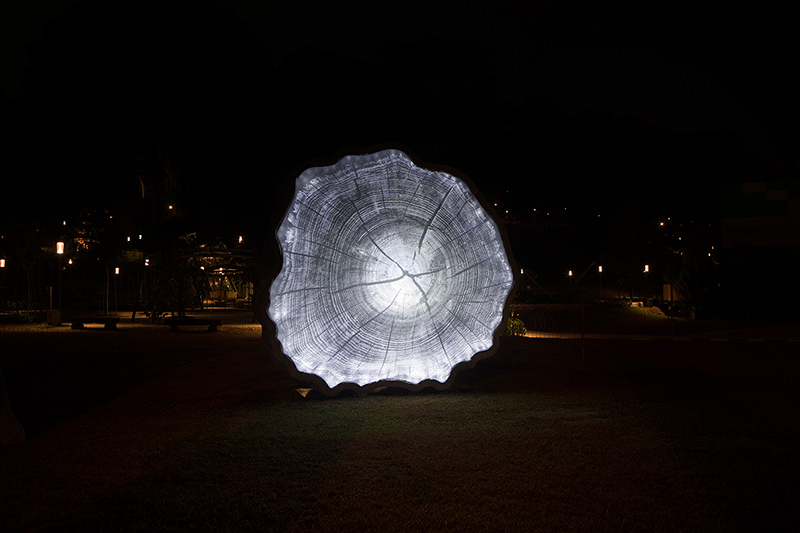 Installation view at night, The Time Tree, 2019
Installation view at night, The Time Tree, 2019
Modelled after the dimensions of the Changi Tree - what is believed to be Singapore's tallest recorded tree, The Time Tree imagines what a tree older than 200 years might look like.
Reflecting on Singapore's pre-modern history and the plurality of narratives, it draws attention to a longer, more meditative concept of history - one that is measured in the life of botany as opposed to human markers such as founding dates. The form of a stump is deliberate, embodying power, vulnerabilty, regeneration, and infinite possibilities.
At night, the tree is illuminated with light emanating through the gaps and cracks, adding to a sense of mystery and unknowability. The Time Tree is one of the largest public artworks in Singapore created using 3D printing technology.
The Time Tree is currently on view at Fort Canning Park until October 2019, after which it will travel to Jurong Lake Gardens from November to December 2019, then to Raffles Place Park in January 2020.
The work is a commission by the National Arts Council's Public Art Trust in commemoration of the Singapore Bicentennial in 2019.
For more information on the series of work, click here.
For more information on the National Arts Council's Public Art Trust, click here.
New Forest
6th September 2019
Spotted Tree Frog Survey, Taipei, 2019
 Installation View, Mind Set Art Centre. Image courtesy of MSAC, Taipei.
Installation View, Mind Set Art Centre. Image courtesy of MSAC, Taipei.
7th Sept 2019 - 12th October 2019
Mind Set Art Centre
Mind Set Art Center
7F, No.180, Sec. 1, Heping E. Rd., Da'an Dist., Taipei City 106, Taiwan
Gallery hours: Tuesday-Saturday (Closed on Sunday & Monday) 11:00-18:00
T +886-2-23656008?F +886-2-23656028
info@art-msac.com
Since the 1950s, global changes such as deforestation and urbanisation have affected animals and plants in different ways. Sometimes they suffer through human development, and sometimes humans produce situations that allow novel organisms to thrive. Due to a dramatic increase in travel and trade, animals and plants have also crossed into new territories, creating new ecological categories of ‘invasive’ and ‘native’ species. Most conservation efforts are aimed at destroying the former and protecting the latter, though increasingly, more ecologists are conceding that these categories are fluid and unstable. New Forest exposes a variety of collisions; between nature and the city, invasives and natives. Sometimes these result in violent encounters: competition, predation and extinctions. Other times these interactions result in a new, precarious balance, and a destabilising of categories of foreign and local, noxious and useful.
The images in this show are drawn from Singapore and Taiwan. In Singapore, the artist has spent the last year documenting a small secondary forest where migrant humans and animals have created a new wilderness. Using infrared cameras placed around an abandoned base camp, he captured vagabond species that have come to drink from pails, creating strange, otherworldly tableaux. The images from Taipei are underscored by violence. They come from various “extermination drives” the artist took part in, including a frog survey in Taipei where he captured the invasive Spotted Tree Frog with volunteers. Other pictures explore narratives about failed or futile eradication efforts, such as a jar of Brown Anoles in a Taipei research institute. In Chiayi, the government paid villagers to capture these invasive creatures, but their population has not been significantly reduced.
For more information on the series of work, click here.
For more information on the exhibition, click here.
The Lines We Draw - Yalu River Art Museum
31st August 2019
Memorial to Great Knots (China, Alaska, New Zealand)
750cm x 250cm x 10cm
Lightbox
2019
31st August 2019 - 31st December 2020
Yalu River Art Museum
No.11 Moon Island Street,
Dandong, China
Liaoning Province
This solo exhibition for Robert Zhao Renhui at the Yalu River Art Museum explores the relationship between man and nature through his usual scientific method. He uses an artist’s sensitivity, the methods of photography and computer editing, and the temporal and spatial visions of bird migrations in the project, which he presents with large images. For the artist and the exhibition, piercing through the dusty skies to discover the limitless dynamism of their migration is not a simple survey or objective record of bird species in nature; it is a visual presentation that conveys warnings and foreknowledge of ecological destruction using the methods of reconstruction and displacement. Thus, the show reflects the multi-faceted reactions that we and Zhao have to everything about the present and future, but it also shows his anxiety about the natural environment and human ecological crisis, and it suggests a kind of vigilant tension. Perhaps deeper social issues are concealed behind these images, which means that the Yalu River Art Museum can show Zhao’s composed insight and expression, revealing to the viewer humanity’s existential crisis on psychological and conscious levels... - Curator Feng Boyi
Background Information on Dan Dong Wetlands
The wetlands in Yalu River, Dan Dong is an important bird migratory site for the godwit and great knot. These birds migrate between New Zealand, China, North Korea and Alaska every year. The migratory flight of the godwit is the longest nonstop migration of any bird in the world. The stop in China and North Korea is an important refueling stop for these birds. As more wetlands and coasts in South Korea and China become concretised, the wetlands in Yalu River remains one of the last sanctuaries for these birds in the world.
For more information on the series of work, click here.
For more information on the exhibition, click here. (Mandarin Only)
Yalu River Art Museum is an art museum that is situated between the border of North Korea and China (Dan Dong).
More information on the Museum, click here.
Pulau Pejantan, - An Opera for Animals, Rockbund Art Museum, Shanghai
24th June 2019
Installation view of An Opera for Animals, 2019, Rockbund Art Museum. Courtesy of Rockbund Art Museum
Jun 22 – Aug 25
Rockbund Art Museum
20 Huqiu Road, Huangpu District
Shanghai, China
We are pleased to present An Opera for Animals at the Rockbund Art Museum (RAM). Taking over all five floors of this historical building in the heart of Shanghai, the Opera will join a series of groundbreaking exhibitions that RAM has been staging since its inception in 2010. Together with their critical educational programme, these have shaped RAM into one of the most respected contemporary art museums in East Asia. “Opera” has been used as the name to describe various traditions of performance, social arrangement, entertainment, and spiritual work from around the world. Many of these are ancient and radically different from each other but are nevertheless classified as regional variants of the (relatively young) Western model. But more than being yet another example of lingering colonial taxonomy, this brings into discussion the status of opera as the highest art form, reflecting the European colonial project. There is an almost perfect chronological overlap between the golden age of Western opera and Europe’s occupation of most of the world, at the end of the 19th century and beginning of the 20th. There are, as well, the obvious cases of operas built on exotic desire like Turandot and Madama Butterfly or the case of Aida, commissioned for the inauguration of the Suez Canal. But there is more to this than just chronological coincidence...
For more information on the exhibition, click here.
Christmas Island, Naturally, - An Opera for Animals, Para Site, Hongkong
25th March 2019
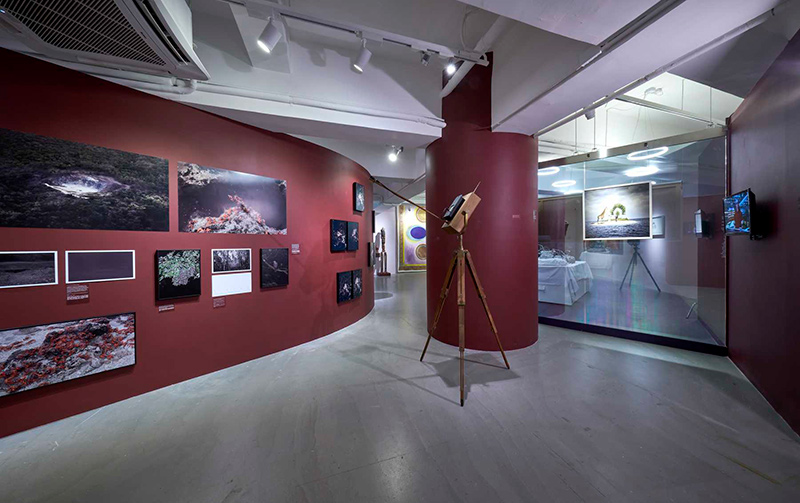 Installation View, Christmas Island, Naturally at Para Site, Hongkong. Image courtesy of Para Site Hongkong
Installation View, Christmas Island, Naturally at Para Site, Hongkong. Image courtesy of Para Site Hongkong
An Opera for Animals
March 23–June 9, 2019
Opening reception: March 22, 7–9pm
Para Site
677 King’s Road
G/F & 22/F, Wing Wah Industrial Building
Hong Kong
Curated by Cosmin Costinas and Claire Shea
Kenojuak Ashevak, Shuvinai Ashoona, Firelei Baez, Julie Buffalohead, Lee Bul, Chen Qiulin, Ali Cherri, Clara Cheung, Narcisa Chindoy, Lok Chitrakar, Chto Delat, Cui Jie, Juan Davila, Ticio Escobar, Jes Fan, Sofia Ferrer, Fifita Family, Chitra Ganesh, Beatriz González, Ho Tzu Nyen, Vivian Ho, Saodat Ismailova, Ilya and Emilia Kabakov, Alexander Kluge, Lawrence Lek, Candice Lin, Euan Macdonald, David Medalla, Barayuwa Munu?gurr, Ciprian Mure?an, Adam Nankervis, Kelly Nipper, Gabriel Pareyon, Gary Ross Pastrana, Tim Pitsiulak, Gala Porras Kim, Christoph Schlingensief, Simon Soon, Angela Su, Tao Hui, Wang Wei, Ming Wong, Haegue Yang, Yang Shen, Yee I-Lann, Samson Young, Robert Zhao Renhui
"Opera" has been used as the name to describe various traditions of performance, social arrangement, entertainment, and spiritual work from around the world. Many of these are ancient and radically different from each other but are nevertheless classified as regional variants of the (relatively young) Western model. But more than being yet another example of lingering colonial taxonomy, this brings into discussion the status of opera as the highest art form, reflecting the European colonial project. There is an almost perfect chronological overlap between the golden age of Western opera and Europe’s occupation of most of the world, at the end of the 19th century and beginning of the 20th. There are, as well, the obvious cases of operas built on exotic desire like Turandot and Madama Butterfly or the case of Aida, commissioned for the inauguration of the Suez Canal. But there is more to this than just chronological coincidence.
The scale of ambition needed to imagine the absolute art form that opera was, aiming to organise every aspect and implication of the viewer’s experience, is intimately connected to that moment of absolute hubris when Europe imagined that it could dominate and reorganise the entire world. But European opera was not only a form of bourgeois entertainment, even one that was celebrating the glory of imperial conquest. These total spectacles, held in some of the grandest buildings erected in this time period—in the symbolic urban position previously occupied by cathedrals—with society neatly organised by class facing the elaborate scene on the stage, were in many ways quasi-religious experiences, where European glory was not just a subject of the performance but a collectively lived ecstatic apotheosis.
This was happening as Europe was priding itself on its modern rationality, seeing itself in opposition to the "animist" world of the peoples it was occupying at the same time. The modern view, deeply connected to the colonial project, also changed the physical, emotional, and symbolic relationship between humans and animals, elevating the status of humans, in a view radically different from many indigenous systems of knowledge and value. But European opera contained the clues exposing this charade, for it was far from its official claim of a secular spectacle, amusing a modern society. The phantoms, monsters, and sacred animals of European Empires have always haunted these opera houses, where they were sacrificed, channeled, and embodied within the great shrines of modernity.
An Opera for Animals is nevertheless interested in how these complexities are still alive, even after the demise of the colonial era and of Western opera as a fully living art form. As a parallel discussion, it includes less discussed connections between European classical music and other music systems. More extensively, the exhibition looks at different acts of staging that have been crucial to our imagination of modernity. The conflicts of staging, controlling, hiding, and repressing that occur within the operatic space are at the very core of our contemporary reality, defined by constructed and "alternative" truths, digital parallel worlds, self-staging of personal identities, and the increasingly palpable promise of a new technological turn in the field of intelligence. As such, the exhibition understands opera and related issues such as "staging" and "operatic environment" broadly, as terms describing the synthetic landscapes imagined and generated in our world today. Equally, the animal spirit connects the still very present ancient beliefs with a highly futuristic fear of new forms of irrationality and intelligence colonising our future. The world of technology continues to draw influence from the unique characteristics of certain animal species, enforcing this connection.
This exhibition explores the way in which the future is now projected less as the rational thinking commonly remembered from the post-war era - advanced machinery, design, and social forms - but once more as a place of amorphous fear, of animals that might take over in artificial landscapes. The future it seems, will again be an opera for animals.
An Opera for Animals at Para Site, Hong Kong (March 23-June 9, 2019) is a prelude to a partnership with Rockbund Art Museum, Shanghai. Between June 22-August 25, 2019 at Rockbund Art Museum, and September-December 2020 at Para Site, the two institutions will develop and present together two related exhibitions.
Para Site Art Space is financially supported by the Art Development Matching Grants Scheme of the Government of the Hong Kong Special Administrative Region
A Guide to the Flora and Fauna of the World, - Quasi-Nature — Bio Art, Borderline and Laboratory
24th March 2019
Installation view of “Quasi-Nature: Bio Art, Borderline and Laboratory” at Hyundai Motorstudio Beijing, 2019. All images copyright the artists; courtesy Hyundai Motorstudio Beijing.
Curator: Jo Wei
22.03.19 - 16.06.19
Hyundai Motorstudio Beijing is pleased to announce the opening of Hyundai Blue Prize 2018 Award Exhibition “Quasi Nature—Bio Art, Borderline and Laboratory”, which will be presented from March 22 to June 16 at Hyundai Motorstudio Beijing at 798 Art Zone. In 2018, Jo Wei received the 2nd Hyundai Blue Prize for Creativity owing to her curatorial proposal of this exhibition. Revolving around the theme of the Prize "Future Humanity", the exhibition will present a thought-provoking and profound international topic to the audience. The exhibition coincides with the vision of Hyundai Motor Company and attempts to address such profound concepts as the biology and the earth, society and the environment, existence and extinction from a global perspective in simple language. Meanwhile, it also predicts infinite combinations of art and technology in the future.
The notion Quasi-Object aims to break the dualism of subject and object, society and nature, etc. The movement bio art that combing art, culture and biology fits this concept, and explores the Hybridization of life, species and nature. The exhibition is thus systemically divided into three parts. Through bioethics, technological boundaries, self-awareness, etc., the first part explores the current rapid development of technology especially biotechnology, and its influence on the concept of "human" and social structure. The second part adopts a non-anthropocentric perspective to explore how human beings should get along with the earth and other species. While the third part is more about a new type of art production—the lab as the generator of surprises. Is there such a way of working that does not happen in the artist studio, nor in the public space, but in an environment completely unfamiliar to the artist? The survey on the International labs with art residency might indicate the possibility of the new paradigm shift in Chinese art scene.
For more information on the exhibition, click here.
Exhibition review on Art Asia Pacific, click here.
Trying to Remember a Tree III, The World Will Surely Collapse
31st Dec 2018
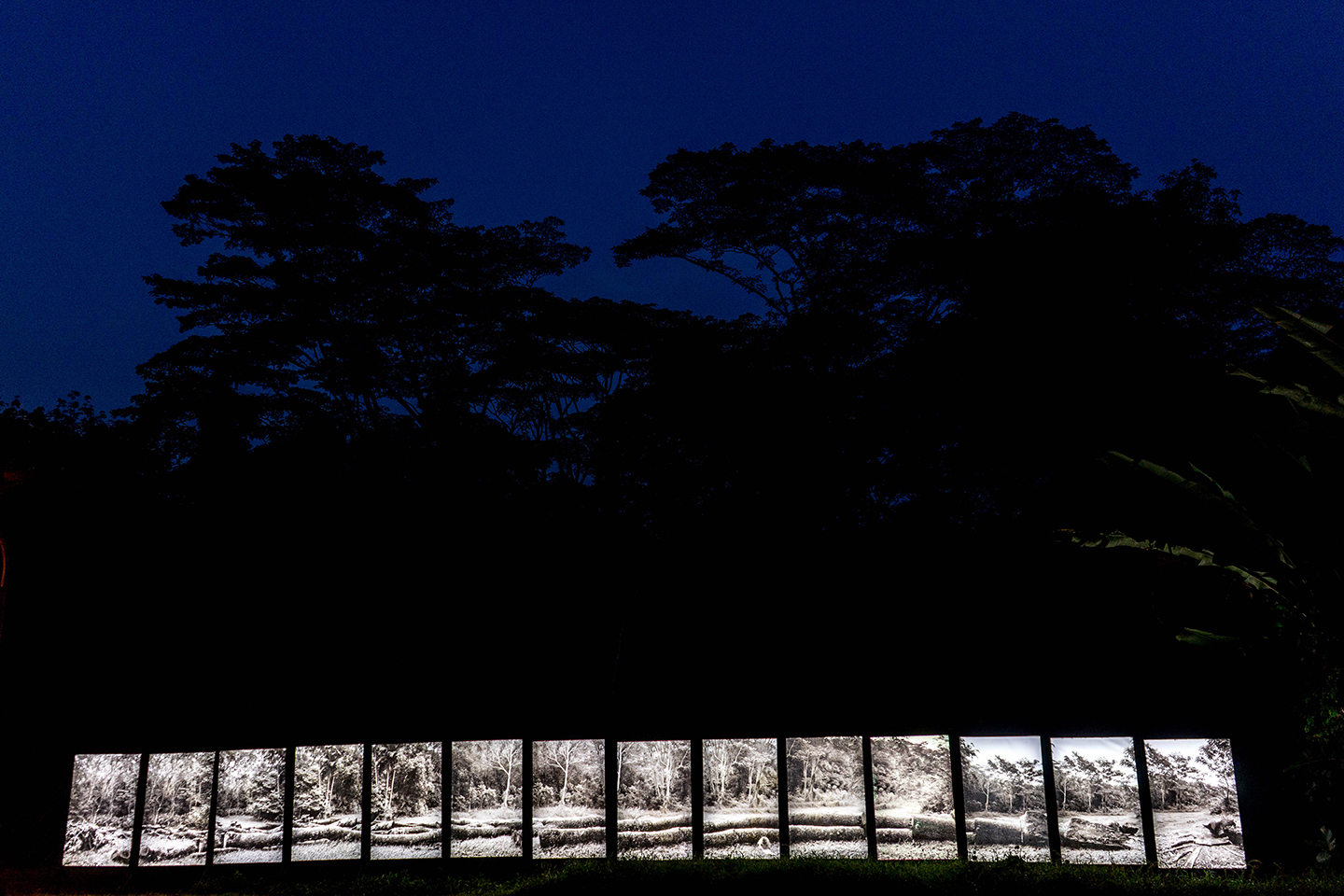 Installation view, Gillman Barracks.
Installation view, Gillman Barracks.
Trying to Remember A Tree (iii) – The World Will Surely Collapse-
Close on Jan. 1, 2019 for New Year
Special outdoor installation project in conjunction with Art After Dark
Date: 09.21, 2018 - 06.23, 2019
Singapore, September 2018 – ShanghART Singapore is pleased to show Trying to Remember a Tree (iii) – The world will surely collapse, a special outdoor light box installation by Singaporean artist Robert Zhao Renhui, presented in conjunction with Gillman Barracks’ 6th Anniversary x Art After Dark. The work is a series of 14 near life-size photographs, featuring a very old and large tree that collapsed near the artist’s home. In Singapore, trees are cut in sections to make their removal easier. The physical cuts by which the tree is sectioned echo but do not exactly correspond to how Zhao has edited and sequenced the images, suggesting that there might be different ways of “managing” nature, whether via park authorities or art. Placed in a natural environment with the forest serving as its backdrop, the lush greenery of Gillman Barrack’s forest and the bleakness of the monochrome artwork form a stark contrast, provoking viewers to reflect on the state of the natural environment in the present day.
This work was first presented at JIWA: Jakarta Biennale (2017), supported by the National Arts Council of Singapore and ShanghART Gallery.
For more information on the installation at Gillman Barracks and ShanghART, click here.
For more information on the work, click here.
When Worlds Collide, Post-Nature -- A Museum as an Ecosystem
19th Dec 2018
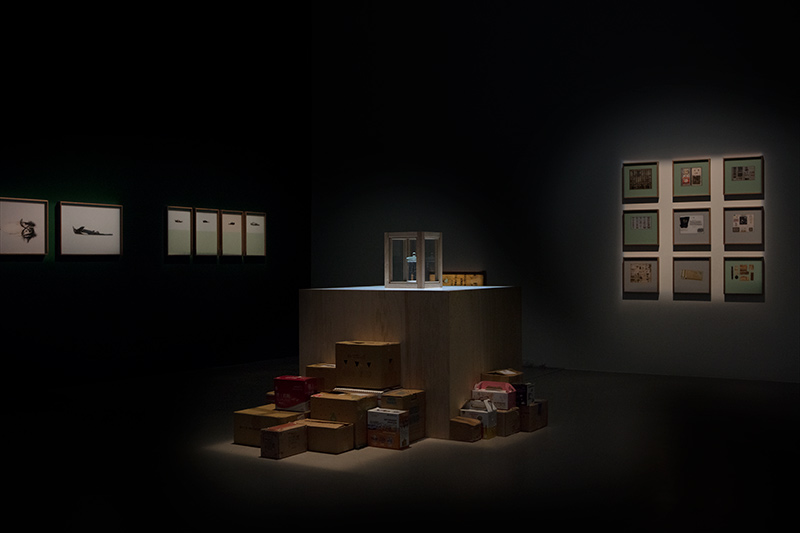 When Worlds Collide, 2018, Taipei Biennale.
When Worlds Collide, 2018, Taipei Biennale.
This installation presents research on animal and insect specimens from different countries alongside historical and contemporary narratives of human invasion, and considers the position of humans as foreign species.
For this work, Zhao began his research in Taiwan, investigating a series of species removal plans: first, the artist discovered a local reward scheme for capturing invasive lizard species, which led in 2015 to over 220,000 lizards being caught in Chiayi, south Taiwan, alone. On the west coast of Taiwan, meanwhile, the African sacred ibis (Threskiornis aethiopicus) has recently arrived and is forcing out native birds, so experts are designing a nest removal plan. Finally, volunteers at Taipei Zoo are capturing Spot-legged Tree Frogs (Polypedates megacephalus) twice a week at night, and feeding them to zoo animals. These controls are entirely due to the belief that imported plants and animals threaten the species that we consider native, however the movement of species, and their categorisation, is largely a human consequence.
In addition to exploring the migration of species, Zhao’s work investigates the number of wild birds injured or killed on a weekly basis due to human action in both Taipei and Greece. Through studying x-rays from research institutions in Greece, and specimens collected by the Biodiversity Research Museum in Taiwan’s Academia Sinica, the artist has looked into the specific causes for these deaths and injuries, which include shooting, previous veterinary surgeries, and collisions with buildings or cars. Presented alongside this evidence is material on pests collated by the late German insect expert, Herbert Weidner. Viewing Weidner’s research in the context of urban ecology, which defines pests as existing in a state of unease due to the endangerment of their ecosystem, Zhao invites a rethinking of the commonly assumed hierarchies between humans and their fellow non-human beings.
For more information, click here.
Post-Nature—A Museum as an Ecosystem takes its title as a starting point to examine the ever-changing and osmotic nature of an ecosystem, and to explore how this can be reflected in artistic and institutional practice. Through this perspective, the biennial seeks to address the urgent environmental conversations of the 21st century—spurred by a recognition that, with resources in short supply and climactic change fast developing, such debate may not be possible at a later stage. This year’s co-curators, Francesco Manacorda and Mali Wu, assert that these ecological issues must be more intensively and publicly considered in the immediate present. To open this conversation to diverse local and international audiences, Post-Nature—A Museum as an Ecosystem takes on an interdisciplinary and participatory form. Here, the biennial acts as fresh attempt to develop ecological consciousness as a consistent and common way of thinking, rather than simply addressing ecological issues inside a museum.
Dates: 2018/11/17 - 2019/03/10
Venue: Taipei Fine Arts Museum
 Spotted Tree Frogs (Polypedates megacephalus) collected in a single night by the artist and volunteers
Spotted Tree Frogs (Polypedates megacephalus) collected in a single night by the artist and volunteers
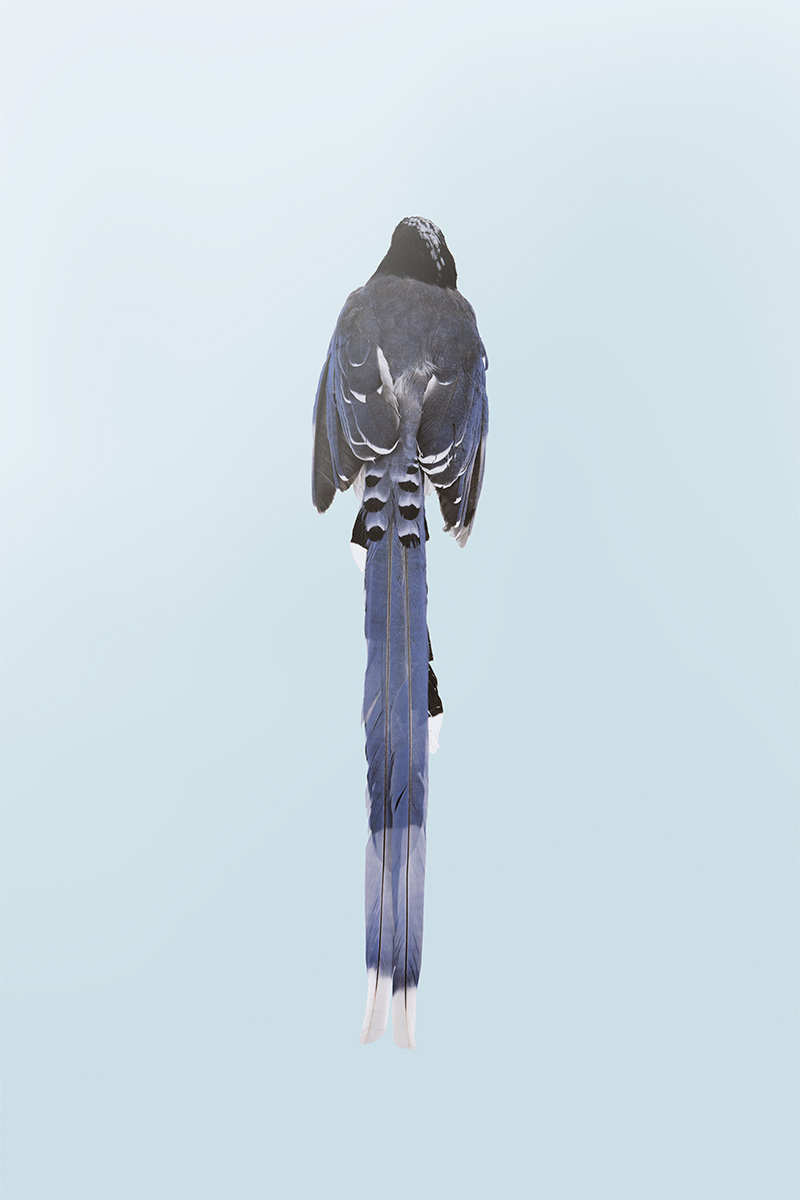 A hybrid of the Chinese Blue Magpie (Urocissa erythroryncha) and Taiwan Blue Magpie (Urocissa caerulea)
A hybrid of the Chinese Blue Magpie (Urocissa erythroryncha) and Taiwan Blue Magpie (Urocissa caerulea)
My Forest Is Not Your Garden, Asia Pacific Triennial, 2018
18th Dec 2018
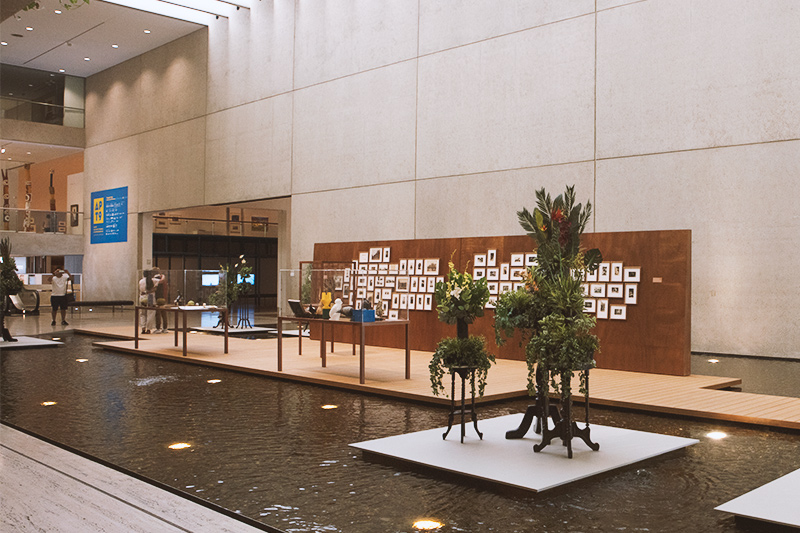 My Forest is not your Garden, Installation View, QAGOMA, APT9.
My Forest is not your Garden, Installation View, QAGOMA, APT9.
"Among other APT9 artists whose work is inspired by the natural world, several share the common theme of humanity as an integral part of the Earth’s ecosystem, including Singapore’s Donna Ong and Robert Zhao Renhui, Malaysian collective Pangrok Sulap, and Martha Atienza and Nona Garcia, who both work in the Philippines.
The collaborative installation by Ong and Zhao, My forest is not your garden 2015–18, offers the wonder of a museum diorama in the Queensland Art Gallery Watermall. Ong’s evocative arrangements of artificial flora and tropical exotica blend with Zhao’s archival-style display of a collection of authentic and fabricated objects that purportedly relate to Singapore’s natural history.9 Ong takes a critical perspective on how representations of the tropics in science, botany, art, illustration and gardens have influenced human relations with nature. Zhao performs his speculative scientific investigations of relations between humans and animals through the creative framework of the ‘Institute of Critical Zoologists’, playing with forms of knowledge such as the zoological gaze and natural history research projects.10 These artists encourage us to understand that the lens through which we see the natural world has simultaneously reshaped it."
For more information, click here.
24 NOV 2018 – 28 APR 2019
QAGOMA | FREE
The hugely ambitious APT series returns to QAGOMA this summer, bringing significant art from across the Asia Pacific to Brisbane. Overflowing with colour and life, this free contemporary art exhibition presents a unique mix of creativity and cross-cultural insight.
Discover more than 400 artworks by over 80 individuals, collectives and groups that capture the energy of new art being created in Asia, the Pacific and Australia.
Alongside the exhibition are 3 thought-provoking film programs, 8 hands on activities for kids and 5 months of ongoing programs and special events, including daily guided tours.
A Guide to the Flora and Fauna, Published by Steidl
17th Dec 2018
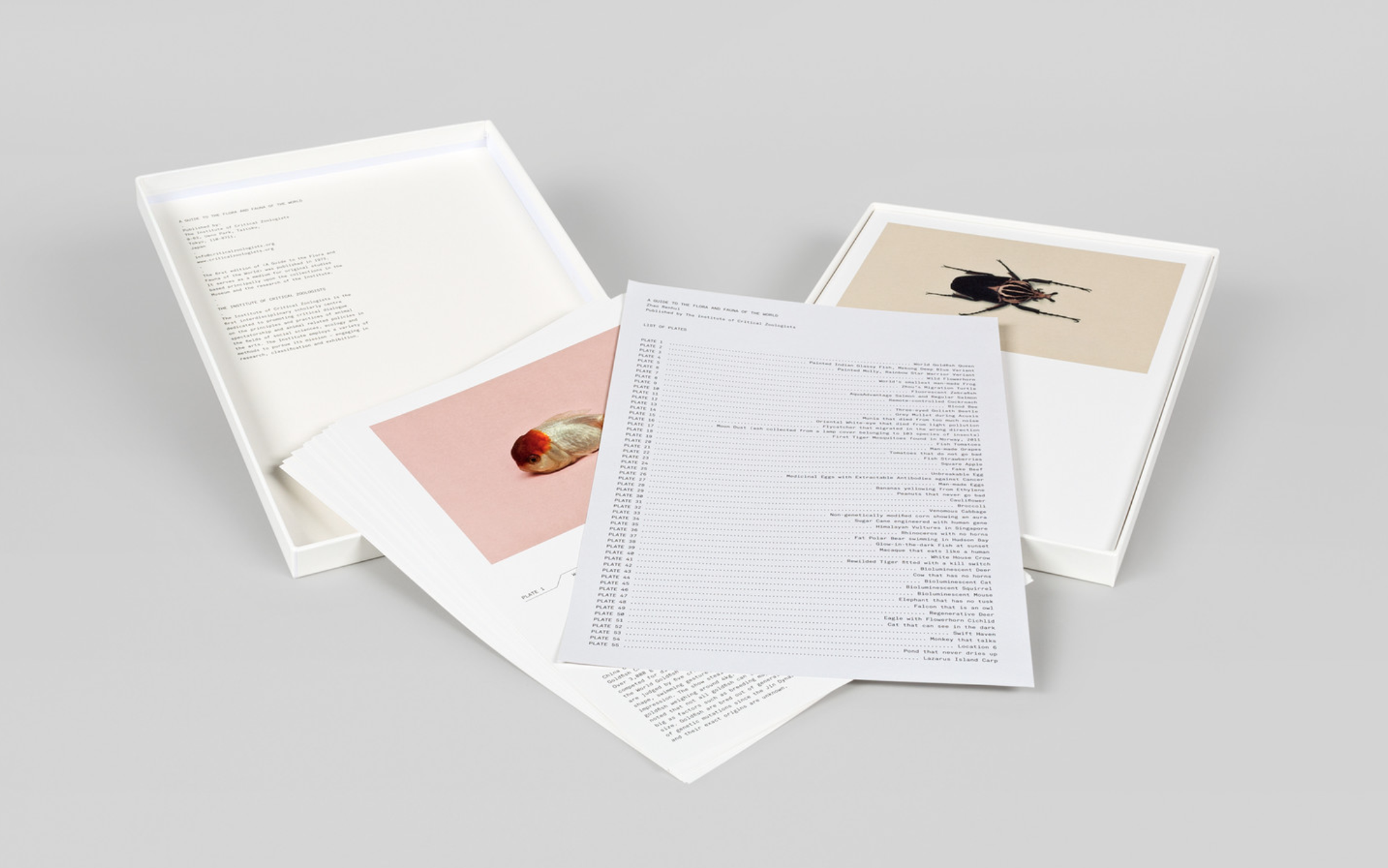 A Guide to the Flora and Fauna of the World, Published by Steidl.
A Guide to the Flora and Fauna of the World, Published by Steidl.
Image credit, Steidl.
A Guide to the Flora and Fauna @ Civilization The Way We Live Now, Book and Exhibition.
17th Dec 2018
Curated by William Ewing, Bartomeu Marí and Holly Roussell Perret-Gentil.
Civilization: The Way We Live Now is a major exhibition, featuring the work of 100 of the world’s finest photographers. It addresses and illuminates major aspects of our increasingly global 21st century civilization. It stresses the fact that contemporary civilization is an extremely complex collective enterprise. Never before in human history have so many people been so interconnected, and so dependent on one another. In science and art, at work and play, we increasingly live the collective life. The Olympic Games, the giant Airbus, CERN, MRI, the Trident Submarine, Wikipedia, the Academy Awards, the International Space Station, Viagra, the laptop computer and the smartphone... However we feel about any of them, none of these complex phenomena would have been possible without superlatively coordinated efforts involving highly educated, highly trained, highly motivated, highly connected people.
Though photography has always embraced investigations of the self, looking inward to existential questioning and individual poetics (what curator John Szarkowski called “mirrors”), it can also be said that many of the world’s greatest photographers deal with the real world (Szarkowski’s “windows”). Their work may revolve around the functional aspects of society and culture (home life, pleasure and leisure, travel, religion, the workplace, production and consumption); or revolve around its dysfunctional aspects (alienation, crime, pollution, social breakdown and war). Andreas Gursky’s supermakets and rock concerts, Edward Burtynsky’s oil fields, Raimond Wouda’s high school, Reiner Riedler’s families at leisure, Lauren Greenfield’s ostentatious displays of wealth – these are only a few of the many subjects covered by the exhibition. Obviously each category will feature the work of several artists. Whatever their particular focus, the photographers have chosen to depict, reveal, examine, critique and otherwise reflect upon our hyper- modern, technologically complex human ‘hive’, to adopt Tom Wolfe’s apt metaphor.
Taken as a whole, this exhibition takes stock of our civilization’s material and spiritual culture, ranging from the ordinary to the extraordinary, and from civilization’s great collective achievements and its ruinous collective failings, expressing thoughts and feelings in the richly nuanced language of photography. And though it features photography of the real world, it embraces different ways of dealing with it, from the ‘straight’ document to the mise en scene.
It must be stressed that this is decidedly not a didactic exhibition; images, not words, tell the story of civilization – i.e., the photographs do not illustrate a thesis – they are the thesis.
Civilization: The Way We Live Now focuses on shared human experience. We may have never been on a Dreamliner or attended the Academy Awards or met Paris Hilton, but we know all about them, whether we want to or not. Most of us have never come face with an Al Qaeda operative either, but we all have to take off our shoes at security. In his book Civilization (2011), the historian Niall Ferguson notes: “These days most people around the world dress in much the same way: the same jeans, the same sneakers, the same T-shirts... It is one of the greatest paradoxes of modern history that a system designed to offer infinite choice to the individual has ended up homogenizing humanity.” This strange paradox is at the heart of Civilization: The Way We Live Now.
Venue list
National Museum of Modern and Contemporary Art, Seoul, Korea
October 18 2018-February 17 2019
Ullens Center for Contemporary Art, Beijing
March 9, 2019-May 26, 2019
National Gallery of Victoria, Melbourne, Australia
September 20, 2019-February 2, 2020
Musée des Civilisations de l'Europe et de la Méditerranée (MUCEM), Marseille, France
January 16, 2021-April 16, 2021
The Institute of Critical Zoologists, 2nd Yinchuan Biennale, Starting from the desert - ecologies on the edge
21st June 2018
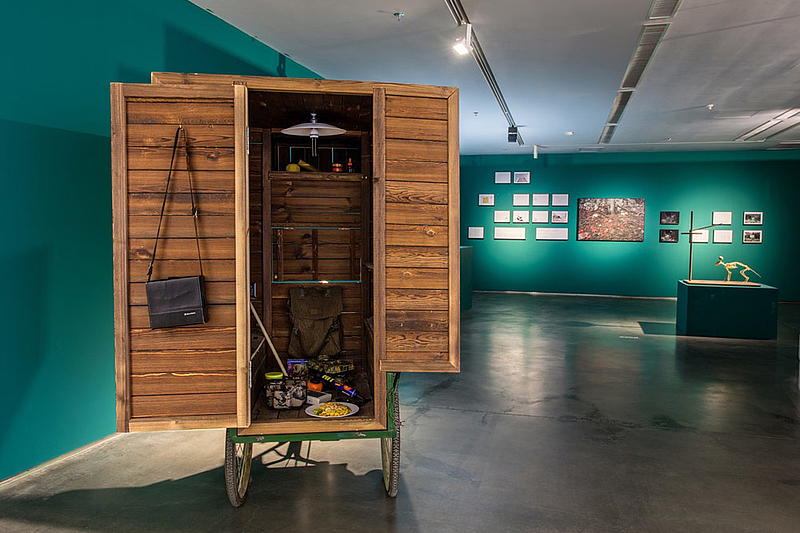 Installation view of 4 works at Yinchuan Biennale, 2018.
Installation view of 4 works at Yinchuan Biennale, 2018.
Image Credit, Yinchuan Biennale.
2nd Yinchuan Biennale, Starting from the desert-ecologies on the edge.
9 June - 19 September 2018
MOCA Yinchuan, China
Chief Curator: Marco Scotini
Curatorial team: Andris Brinkmanis, Paolo Caffoni, Zasha Colah, Lu Xinghua
Conceived with the aim of measuring itself against a specific geo-historic context, and proposed as a form of minor language within the biennale system, Starting from the Desert seeks to respond to contemporary urgencies (not only in China) by adopting an 'archaeological method'. Northwest China is still considered a remote corner, but one which, owing to the historic Silk Road, has been defined through time as a place of great flows, hybridizations and exchange of people, knowledge, languages, technologies, religions, animals, spices and goods.
In relation to the possibility of reducing the Eurasian continent to simple geo-economics, which could well be implied in current large-scale projects, the Second Yinchuan Biennale seeks to read the modalities of 'group-being' at the crossroad of heterogeneous components, as indispensable to a new ecology that intends to emancipate all forms of life. In the search for eco-logics as a new paradigm of transversal thought, the Second Yinchuan Biennale attempts not to reduce these elements to the subject matter, but to utilize them in order to question the limits of the exhibition format, and thus to eventually produce a new eco-model of exhibiting.
From the catalogue -
"The Institute of Critical Zoologists Founded by Robert Zhao Renhui (b. 1982, Singapore), The Institute ofCritical Zoologists pursues interdisciplinary research into the realms ofanimal studies, environmental politics, and aesthetics. Persistentlytwisting reality and 'ction, Zhao’s artistic practice addresses instances ofecological collapse, adaptation, and resilience focusing on the relationshipbetween humans and nature. He appropriates codes and conventions ofdocumentary photography and museum display to compose narrativesthat challenge conventional criteria of objectivity and scienti'c modes ofclassi'cations. In recent years, his work has developed into immersiveinstallations, such us The Bizarre Honour and The Nature Museum (both2017), that merge historical documentation and 'ctional storytellingundermining the very notion of truth.
The four works presented at the Yinchuan Biennale are selected from twodiscrete long-term research projects. Looking for Nature (2017) and Allthe Insects in a House (2017) are part of The Nature Museum, an eclecticcollection of artefacts, images, historical documents, natural specimens,and instruments for the study of nature that cast a critical gaze on thepredicament of our multi-species world. The other two works—3rdChristmas Island Conservation Plan (2016) and Memorial to the Last Caton Christmas Island (2016)—stem from Christmas Island, Naturally, theInstitute’s investigation of the escalating chain of events brought about bythe human presence on Christmas Island. As a result of the accidentalintroduction of invasive species, radical biocontrol measures, including theeradication of feral and stray cats, are being undertaken in an e5ort torestore the environment to a pre-disturbance state." [Anna Lovecchio]
Christmas Island, Naturally at Lod Fotofestiwal, Human Nature
20th June 2018
The Third Christmas Island Conservation Plan, Lodz Fotofestiwal
June 21st - July 1st
ART_INKUBATOR
Exhibitions, Festival office, BookOff Bookstore 21.06: 19.00-22.00; 22-1.07: 11.00-20.00
Playroom 22.06-1.07: 9.00-20.00
Format Cafe-club 21.06: 18.00-last customer; 22.06-1.07: 9.00-20.00
“Human Nature” is the title of the solo and joint exhibition programme that builds a narrative about the human relation with nature. The art projects of Mathieu Asselin, Claudius Schulze, Mandy Barker and Anouk Kruithof emphasize people’s devastating impact on the environment. Meanwhile, Dornith Doherty, Robert Zhao Renhui, Alberto Giuliani, Lena Dobrowolska & Teo Ormond-Skeaping document the initiatives aimed at counteracting the dynamic paradigm shift in the environment and its consequences, which are virtually impossible to predict. Those artists are neither the dreamers nor fatalists despite the fact that their projects propose certain solutions to the burning ecological issues which could be implemented in the foreseeable future. Instead, they choose to question the role, scope and purpose of the man-made system of environmental protection, which, among other things, seems contingent upon people’s willingness to cease treating nature instrumentally. The statement is perfectly illustrated by the works of art by Karolina Grzywnowicz, Joanna Rajkowska and Anna Zagrodzka presented on the exhibit entitled Inter-species Conservation curated by Aleksandra Jach that embraces the idea of nature as our equal partner. In this case, the eponymous conservation, viewed in terms of process, correlation and change, refers not only to landscape, but also man-made objects.
A majority of artists based their projects on an extensive research, consulted scientific journals, articles and archives, collaborated with experts in various fields, as well as participated in the science expeditions. They’re all actively engaged in disseminating their findings concerning the plight of the Anthropocene.
CURATORS: Marta Szyma?ska, Franek Ammer, Agata Zubrzycka, Justyna Kociszewska and Krzysztof Candrowicz.
The Institute of Critical Zoologists 'All the documents' at PhotoESPANA
1st June 2018
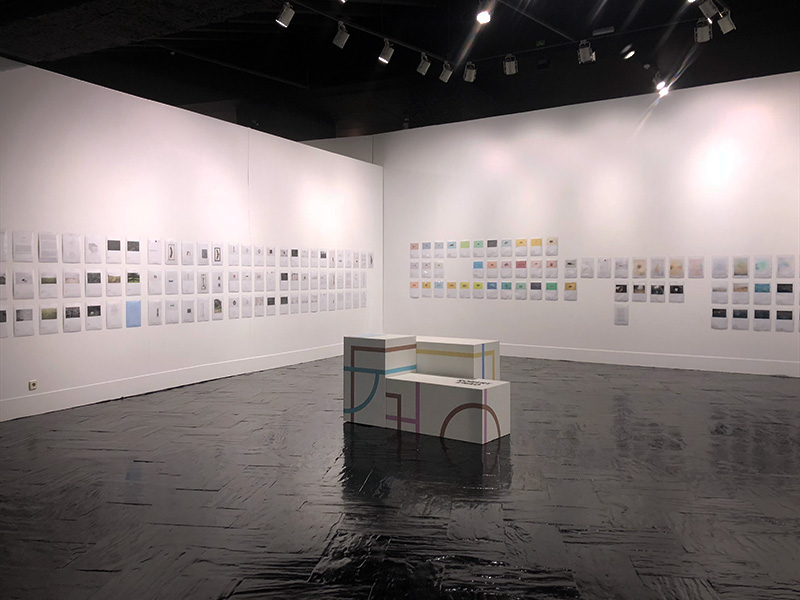 Installation View at PhotoEspana.
Installation View at PhotoEspana.
Great World Final
06.06.2018 — 07.29.2018 Cristina de Middel
Ayuntamiento de Madrid, Fernán Gómez.
Centro Cultural de la Villa y PHotoESPAÑA National Arts Council Singapore
Fernán Gómez. Centro Cultural de la Villa — Plaza de Colón, 4 28001 Madrid —
Mar-dom 10.00 - 21.00 h
Gratuita
METRO: Colón | Serrano. BICIMAD: Estación 10
Hicham Benohoud, Miguel Calderón, Ana Hell, Jason Fulford, Robert Zhao Renhui, Prue Stent & Honey Long.
A game is a voluntary act of rebellion against laws of nature and of customs. It is about creatively taking control of all the impositions that we are required to live by in this world with so few dimensions and so many obligations.
As years go by, games become more serious, they lose their liberating quality and transform into competition and strategy. That is if they don´t disappear entirely.
This exhibition adopts the structure of an adult game in which the objective is always to be «the best», the champion, in a face-off between territories adhering to the ancient practices inherited from the Pleistocene.
Here, six representatives from six continents demonstrate their skill in the art of not taking these laws of nature and conventions too seriously, showing how games are able to place all things visible where they belong: on the edge of the precipice.
For more information, click here.
The Nature Museum, Fast Forward Festival (Athens, Greece)
1st May 2018
Katerina Zavakou. Image courtesy of the Artist.
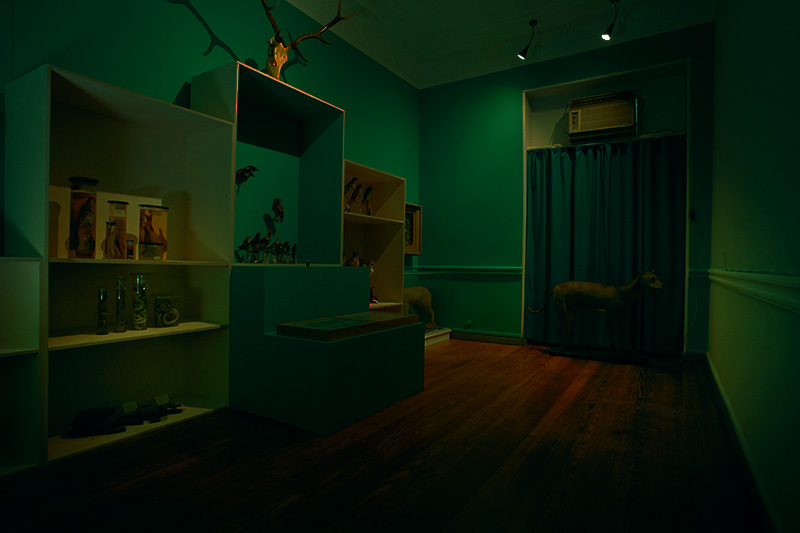
Installation View, The Nature Museum, Athens
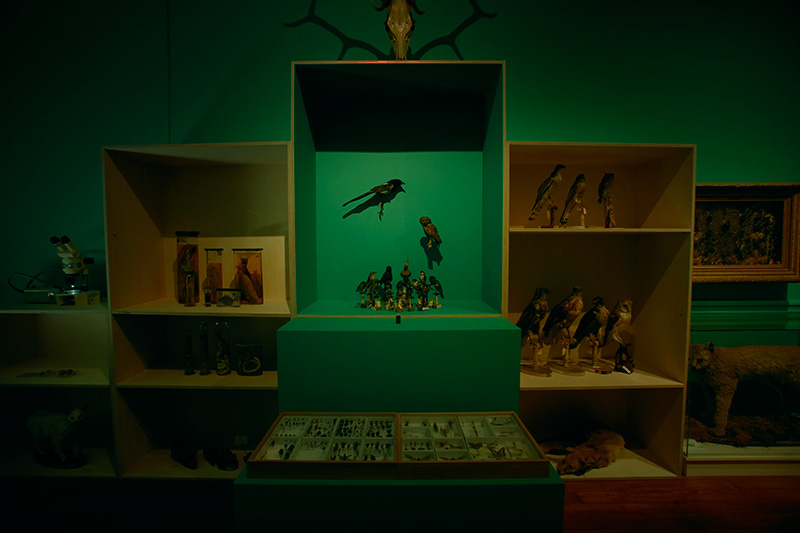
Installation View, The Nature Museum, Athens
2-16 MAY 2018
Mon-Fri: 16:00-21:00
Sat-Sun: 10:00-11:00 & 14:00-18:00
Guided Tours: 5, 6, 12, 13 & 16 May
(See below the programme of the tours)
Address: 15, Derigny St
Guided tours will take place on the following days and hours: Saturday 5 and Sunday 6 May: 11:30 and 18:30 (in English) 12:45 and 19:45 (in Greek) Saturday 12 and Sunday 13 May: 11:30 and 18:30 (in English) 12:45 and 19:45 (in Greek) Wednesday 16 May: 20:00 (in Greek)
Guided tours in English with Robert Zhao Renhui and writer & dramaturg Joel Tan Guided tours in Greek with visual artist Katerina Zavakou
Duration: 45 minutes
The Nature Museum is a fascinating exploration of the Athenian natural history. Α bewildering universe of photographs, natural specimens, taxidermy, and documents in an old house in the centre of the city. Stories of Athens's missing rivers, the invasive Tree of Heaven, the nesting habits of monk parrots, and animals living on the edge of survival, are woven together to expose a surprising layer of reality that exists, ignored, but in plain sight in the heart of the city. The Nature Museum takes you on a journey through photographs, artworks and historical documents, narrating myriad stories of Athens's little-known biodiversity and aggressive urbanization. The installation, curated by the visual artist Katerina Zavakou (Athens) in collaboration with Robert Zhao Renhui and the Institute of Critical Zoologists (Singapore) is derived from the personal collection of Athenian collector and amateur natural historian, Giorgos Charonidis, who spent almost 50 years chronicling the natural world in Athens. The collection reveals a hidden world of natural riches within the city, bringing to light the dramatic violence and loss lingering within the urban environment. The installation is fleshed out by a guided tour and lecture performance, created in collaboration with playwright Joel Tan. At the heart of Athens' encounters with nature lies a deep story of violence and survival: rivers disappear while urbanized roads emerge, and wildlife bears the brunt of social and spiritual crises. Employing the Institute’s full range of investigative methodologies, the artefacts on display include archival images and historical texts, research papers, documentary photography and installation, all focused on the ways communities have interacted with nature in different time periods and geographical regions. In tracking these encounters and their histories, using methods drawn from historical knowledge-production to contemporary urban ecology, this show unites multiple strands of knowledge into a single museological encounter.
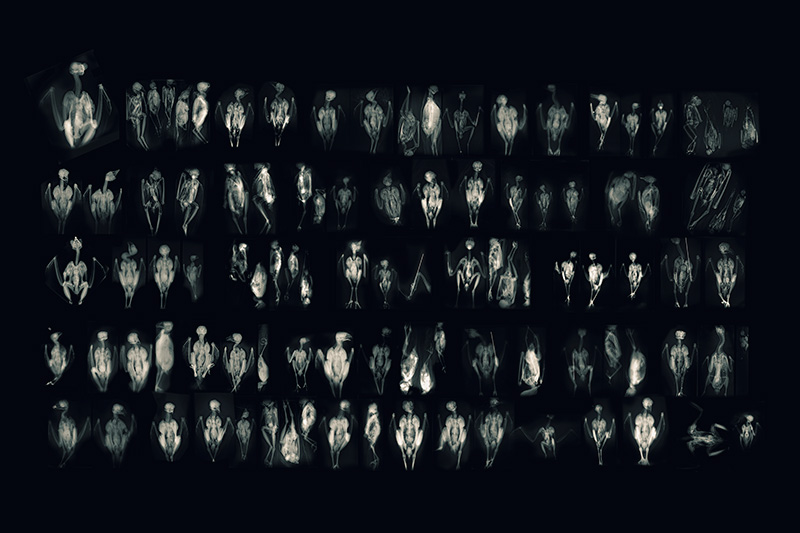
The birds of Athens, Light Box, 3m x 2m, 2018.
In Athens, Greece, people who encounter injured birds can take them to ANIMA, a non-profit wildlife protection centre, to be rehabilitated. In 2018, the ICZ collaborated with ANIMA to exhibit a selection of X-rays of dead or injured birds for the exhibition The Nature Museum. Some of the birds have broken wings, an indication that they have collided with a building or a vehicle. The long metal splinter that is visible in some of the birds are inserted by vets to help the birds heal their broken wings. In some birds, there are also white spots, which are bullets. These birds have been shot.
For more information, click here.
For more information about the project, click here.
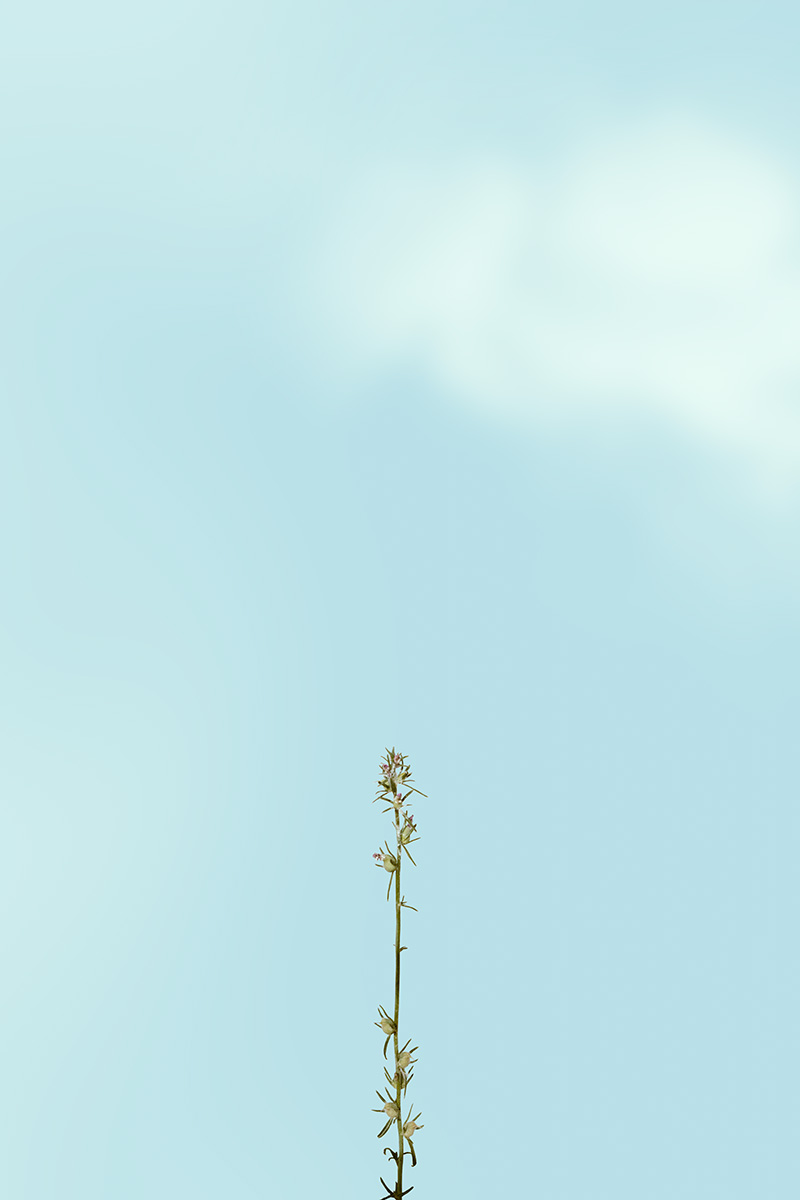
Micromeria Acropolitana
The Secret of the Acropolis, c.1960-2017 Photographs and Postcards, collection of Giorgos Charonidis
Botanical prints and photographs of the location of Micromeria Acropolitana, a rare plant that only grows on the Acropolis, and formerly believed extinct.
Final Report of the Christmas Island Expert Working Group at NTU Centre of Contemporary Art Singapore
1st March 2018
Since the establishment of the first human settlements in the late 19th century, the ecosystem of Christmas Island—a small volcanic outcrop in the Indian Ocean which was transferred from Singapore to Australia in 1958—underwent dramatic changes. Along with human settlers, several non-indigenous species alighted on the island disrupting the endemic biodiversity that had thrived undisturbed thanks to geographical remoteness and almost nil human interference. The accidental introduction of invasive species severely impacted a fragile ecosystem, imperilling the island’s wildlife and causing the extinction of a number of native species. As a result, extreme biocontrol strategies are currently being undertaken in an attempt to restore the island’s biodiversity.
In the past two years, The Institute of Critical Zoologists has been researching the escalating chain of events brought about by the human presence on Christmas Island gathering a varied collection of research materials that merge factual and fictional elements. By surveying the impact of human beings on an endemic habitat, Final Report of the Christmas Island Expert Working Group maps out lines of invasion and retreat, it investigates dynamics of connectedness and isolation triggering reflections on states of vulnerability and conditions of survival in the age of globalisation.
Curated by Anna Lovecchio, Curator, Residencies
Launch and Artist Talk by Robert Zhao Renhui (Singapore) Friday, 2 March, 7.30 – 9.00pm The Single Screen, Block 43 Malan Road
For more information, click here.
For more infomration on the project, click here.
The Institute of Critical Zoologists, GENDA #2, Animals as permenent followers
19th Jan 2018
Genda is a magazine intersecting Western and Eastern culture. Two sets of editorial staff – one in Italy and one in China – first identify a common theme which is then elaborated through the misunderstandings and complicities at the base of every concrete exchange. Issue zero of Genda is dedicated to the concept of landscape as abandon; it is the vision of what remains at the end of a road, at the moment a path is interrupted or when an action leads to a willed for, pursued, constructed and, at times, serially planned impasse. Seemingly different and far-off worlds and cultures observe and copy one another, modifying themselves without being mutually accountable. Genda is born from a misunderstanding: it is the Western mangling of the popular Chinese Zhenda – ‘Really?’; it is also the name of the preferred flower of Hindu rites and celebrations. Genda is a container of accidental, compressed, distant yet dangerously similar material. Its symmetrical structure separates the two spheres which are then recomposed and redistributed through the binding. Clashes and confluences result from the apparent remoteness of approaching worlds. Genda is an independent and interdisciplinary object. It proves the presence of things and the existence of occurrences, it is about experience. Every edition of Genda contains proofs, manifestations of the impact of the world on the authors. The text forms part of this and thus both language and translation are considered. Genda has a title, it seeks out the conditions for triggering new questions. Its contents are apparitions; their original order is recomposed in the pages where an incidental and unexpected factor – of which the authors are aware – exists.
For more information, click here.
The Institute of Critical Zoologists, Propeller Magazine, #1 - Mancha
19th Dec 2017
Propeller was born to promote the space given to photographic expression, but above all to think about the limits of its aesthetics, aiming at sharing original content. In addition to the publication of portfolios and visual essays by authors recognized by the public, at Propeller we’re focused on sharing new prespectives, that somehow potentiate a critical approach to the field of photography.
With each issue, Propeller embraces the challenge posed by one of the many paradigms of photographic aesthetics, inviting a diverse set of authors to jointly prepare a singular proposal on the theme in question. To this end, Propeller also hopes to be a space of critical mass creation, sharing essays, visual poetry and other disruptive works.
With a semiannual periodicity, Propeller is a project by HÉLICE‘s team – Duarte Amaral Netto, João Paulo Serafim, Rodrigo Tavarela Peixoto and Valter Ventura – coordinated by Sofia Silva.
For more information, click here.
Looking for Nature at Art Review Asia Xian Chang, West Bund Art Fair
9th Nov 2017
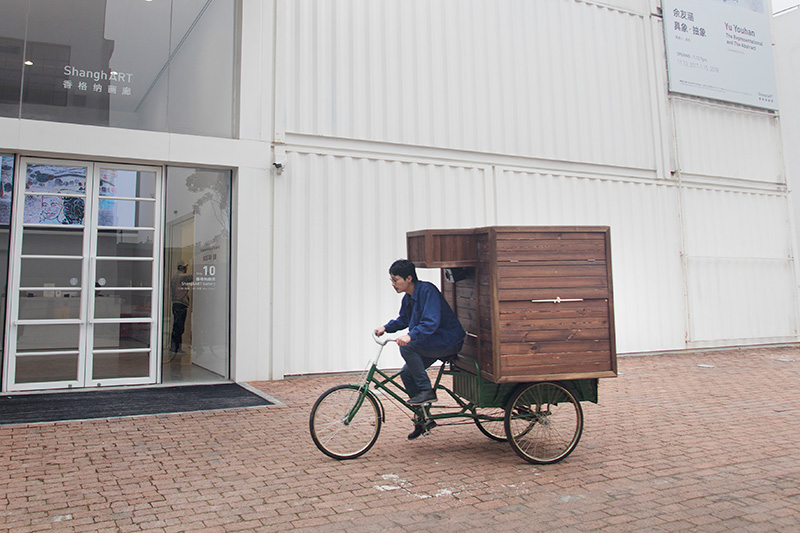

Special Exhibition Programme at West Bund Art & Design
10–12 November 2017
West Bund Art Center
Shanghai
Supported by ShanghART Gallery.
Part of the 4th West Bund Art & Design, ArtReview Asia Xiàn Ch?ng is a special exhibition programme curated by the internationally renowned contemporary art magazine ArtReview Asia. Projects in ArtReview Asia Xiàn Ch?ng, by artists from around the world, occupy spaces inside the fair venue and along the bank of West Bund. This year, 29 invited artists from 16 countries will present 32 works – 13 of which are new.
Works on show in this year’s ArtReview Asia Xiàn Ch?ng range from sculpture and painting to site-specific installation, moving image and performance. Eleven of them are located outdoors. They can be found at the plaza in front of West Bund Art Center’s main entrance, along the riverside on Longteng Road, and at CAMP3399, a public park opposite the Long Museum. The works, connect various areas of in the greater West Bund area, creating a metropolis of art for the West Bund area.
For more information, click here.
The Institute of Critical Zoologists in Disappearing Legacies: The World as Forest
5th Nov 2017
 The Cacao Moth from the Series, The More We Get Together (II), 2018
The Cacao Moth from the Series, The More We Get Together (II), 2018
The More We Get Together (II), 2018 was first created for the exhibition cycle Disappearing Legacies: The World as Forest (Germany, 2017/18). It was developed as part of a research residency funded by the Goethe-Institut Singapore enabling visits to the collections of the Centre for Natural History (CeNak) of the University of Hamburg. With thanks to entomologist Dr Martin Husemann, CeNak. For more information, click here.
First iteration of the three-part exhibition cycle
10 November 2017 – 29 March 2018 Centrum für Naturkunde (CeNak) Zoologisches Museum Hamburg Bundesstrasse 52 D-20146 Hamburg
Opening: 26 April 2018, 19h00 Tieranatomisches Theater (TA T) Raum für forschende Ausstellungspraxis Humboldt-Universität zu Berlin Philippstraße 12/13 10115 Berlin
Opening: 19 October 2018, 19h00 Zentralmagazin Naturwissenschaftlicher Sammlungen Martin-Luther-Universität Halle/Wittenberg Domplatz 4 D-06108 Halle/Saale
One-hundred and sixty years ago, Alfred Russel Wallace deciphered the principle of species evolution during research trips to South America and Southeast Asia. From 10 November 2017 to 29 March 2018, the special exhibition Verschwindende Vermächtnisse: Die Welt als Wald [Disappearing Legacies: The World as a Forest] confronts the destruction of these tropical habitats in the context of the Anthropocene and mass extinction.
The concept of the project is unique—a hybrid between a historical thematic presentation and a major exhibition of contemporary art, transforming the Zoological Museum im Centrum für Naturkunde (CeNak), University of Hamburg, into a threatened (rain)forest habitat. The centerpiece of the intervention is the presentation of 13 contemporary works of art—including eight new commissions—by Maria Thereza Alves, Ursula Biemann, Bik Van der Pol, Shannon Lee Castleman, Revital Cohen & Tuur van Balen, Mark Dion, Radjawali Irendra / Akademi Drone Indonesia, Armin Linke with Giulia Bruno and Giuseppe Ielasi, Barbara Marcel, Julian Oliver & Crystelle V?, Robert Zhao Renhui / The Institute of Critical Zoologists, SHIMURAbros und autonoma / Paulo Tavares.
Some of the works have a direct relation to the University of Hamburg’s collections. Through on-site visits, the artist Robert Zhao Renhui from Singapore, for instance, has further developed his ongoing exploration of our ambiguous relationship with insects by selecting a series of objects from CeNak’s Entomology Collection for his room-size installation. And it was a visit to the Mammalogy Collection that inspired the artist duo Bik Van der Pol to engage in a deeper examination of the phenomenon of nature as a replica situated between reality and fiction.
Other artistic works were developed through journeys to Brazil and Indonesia. Spending time on Borneo, Java, and Sumatra, photographer and filmmaker Armin Linke—together with his colleague Giulia Bruno and exhibition curators Anna-Sophie Springer and Etienne Turpin—conducted numerous interviews with local residents, plantation workers, small land holders, environmentalists, government officials, and scientists. The result is a cinematic document that reflects the speed with which Indonesia is currently transforming into a palm-oil nation amid giant peat fires. In her museum installation, Maria Thereza Alves lends the word to 33 Indigenous clan chiefs, whom she accompanied for one month last summer in Brazil while participating in a workshop on Indigenous agroforestry and resource conservation. Revital Cohen & Tuur van Balen look inward and examine taxidermy birds with piercing X-ray vision, while the automated multimedia installation Extinction Gong by Julian Oliver & Crystelle V? translates the IUCN Red List of Endangered Species into an eerie and percussive rhythm in realtime.
The exhibition is extended by a series of curatorial assemblages, which include specimens from the CeNak’s zoological collections and the botanical collections of the Herbarium Hamburgense that were selected in dialogue with the respective institutions’ scientific curators: skulls, animal skins, spirit specimens, herbarium sheets, and numerous cases of colorful pinned insects.
Another special highlight is the 3D digital rendering of a Sumatran rhino skull, produced in collaboration with YXLON International, a Hamburg-based high-resolution industrial CT-scanner developer, and a special data visualization software from Volume Graphics. Other media include exclusive screenings of one of Sir David Attenborough’s earliest BBC documentaries and a selection of videos from the ornithologist Ed Scholes (Cornell Lab of Ornithology) and wildlife photographer Tim Laman’s ambitious Bird-of-Paradise Project.
Together, the artistic positions and curatorial assemblages presented in the exhibition Verschwindende Vermächtnisse: Die Welt als Wald renounce a romantic image of untouched nature, and instead critically inquire into the legacies resulting from the relentless destruction of highly complex ecosystems.
Alongside the exhibition, CeNak offers a variegated event program comprising of guided tours, lectures, screenings, and other evening events. Entry is free.
10 November 2017 – 29 March 2018 Opening: 9 November 2017, 18h00
Centrum für Naturkunde (CeNak) Zoologisches Museum Hamburg Bundesstrasse 52 D-20146 Hamburg
Contact: +49 40 42 838 2276 info-cenak@uni-hamburg.de
More info on the project at CeNak, or read an interview with the curators.
Verschwindende Vermächtnisse: Die Welt als Wald is a three-part project by Anna-Sophie Springer and Etienne Turpin. The travelling exhibition is realized by Centrum für Naturkunde, University of Hamburg, where it will be on view from 10 November 2017 until 29 March 2018. In 2018, adapted iterations will be presented at the project partners, Tieranatomische Theater (TA T), Humboldt University Berlin, and the Zentralmagazin Naturwissenschaftlicher Sammlungen, Martin-Luther-Universität Halle-Wittenberg, Halle/Saale. The exhibition cycle is a cooperation with the Schering Stiftung and the Goethe-Institut. Ursula Biemann’s participation is supported by Pro Helvetia. The project is funded by the German Federal Cultural Foundation.
More information, click here.
The World Will Surely Collapse, Jakarta Biennale 'Jiwa'
3rd Nov 2017
Installation View of The World Will Surely Collapse, Jakarta Biennale 2017
OPENING: 4 NOVEMBER 2017, 19:00, Gudang Sarinah Ekosistem
EXHIBITION: 5 November 2017 – 10 December 2017
OPENS EVERYDAY 11.00 – 19.00
An old tree collapsed near the artist's residential estate in Singapore after a storm. The tree was cut into sections by park authority officials and quickly removed. This is in marked contrast to what happens when a tree falls in a forest. The fallen tree begins a cycle of succession where insects and other plant life feed on the rotting trunk. In a city, a tree loses its value the moment it falls. There is no place for a dead tree.
The physical cuts by which the tree is sectioned echo but do not exactly correspond to how the artist has edited and sequenced the images, suggesting that there might be different ways to "managing" nature, whether via park authorities or art.

The Institute of Critical Zoologists, Research Residency at NTU-CCA, Singapore
10th Oct 2017

Since 2013, The Institute of Critical Zoologits has been collecting old photographs of Singapore, focusing specifically on images that capture the city’s landscape and elements related to her natural history. The project for his residency, provisionally titled The Museum of Disappearance, sets out to unravel the dormant narratives embedded in the photographs in order to shed a different light onto the complex history of our relationship with nature. Further expanding on his interest in the interaction between humans and the natural environment, he plans to conduct extensive fieldwork in the backwoods behind his studio, a patch of secondary forest stretching from Malan Road to Henderson Road, documenting its trees and natural habitat.
The Nature Museum, Hugo Boss Asia Art Award at the Rockbund Art Museum
25th Sept 2017
 Installation View, The Nature Museum at Rockbund Art Museum. Image credit, Rockbund Art Museum.
Installation View, The Nature Museum at Rockbund Art Museum. Image credit, Rockbund Art Museum.
Hugo Boss Asia Art Award
27 October 2017 - 11th Feb 2018
Rockbund Art Museum
HUGO BOSS ASIA ART: Award for Emerging Asian Artists opened early today at Rockbund Art Museum (RAM) in Shanghai, presenting artworks by the four finalist artists: Li Ming (China), Tao Hui (China), Yu Ji (China), Robert Zhao Renhui (Singapore). Following the success of the first and second editions in 2013 and 2015 respectively, HUGO BOSS ASIA ART AWARD for Emerging Asian Artists is well regarded as a very high-profile award that honors emerging contemporary artists in the early stages of their artistic creation and exhibition practices.
The exhibition is open to the public from October 27, 2017 to February 11, 2018. The show will present newly commissioned works as well as existing artworks by the four finalists, through which the audience will partake in the artists’ vision of what contemporary art holds in terms of promising potential and new directions.
The HUGO BOSS ASIA AWARD, — which is made up of the award selection process, the exhibition of the finalist artists and the on-going public and educational programs — has served as a platform for young talented artists throughout Asia, and is committed to exploring and presenting different artistic and social contexts in present-day Greater China and Southeast Asia. “The HUGO BOSS ASIA AWARD has taken a wonderful development. We are very enthusiastic about the 2017 show and the inspiring works of the nominated artists,” says Dr. Hjördis Kettenbach, Head of Cultural Affairs, HUGO BOSS AG. As Larys Frogier, the Director of Rockbund Art Museum and Chair of the HUGO BOSS ASIA ART jury elaborates, “With brilliant and often unexpected uses of video, sculpture, installation and performance, the four artists unfold through the Museum new forms of narratives and exciting jumps or twists from cultural contexts to subjective fantasies, from historical references to new contemporary social topics, from documentary displays to fictional experiences. The very unique proposals made by each of the artists demonstrate how fresh, meaningful and decisive are their contribution to invigorate the contemporary art scenes in China and Asia.”
Robert Zhao Renhui has unique artistic concepts and practices - his works lie between the documentary and the fictional, creating invisible substances by melding observation and imagination. The Institute of Critical Zoologists (ICZ) is a fictional scientific organization and program created by the artist that is devoted to natural history, visual arts and ecology. By entering the field of art though the construction of scientific discourses and images, he expresses his concerns about the relationship between humanity and nature as well as how human’s attitudes and opinions influence our own cognition of the natural world. This time, he builds up an environment relevant to a Malayan Island of nature, history and society. The exhibition space is transformed into an independent hall of a natural history museum, where there will be the installations covering the objects, materials, antiques, books and etc. that he collected during his visits to various zoos over the past ten years. Echoing the history of the museum building as the former Royal Asiatic Society building, these installations will trigger viewers’ adventurous experiences when observing and exploring the multiple narrative forms. Meanwhile, several other representative works are on show. The composition of photographs, documentary images and documents resulted from his individual interruption reminds people to reconsider the relationships between community, individuals and nature in a tumultuous society where the violent interaction between human and nature transpires.
Christmas island, Naturally, M50 ShanghART, Shanghai
2nd Sept 2017
Opening?2017/09/03 15:00-18:00 Duration?2017/09/03 – 2017/11/19?Wed.-Sun. 10:00-17:00, Mon. Tues. & Thur. Closed? Address?ShanghART M50, Bldg 16, 50 Moganshan Rd., Putuo District, Shanghai, China 200060
Contact?press@shanghartgallery.com | www.shanghartgallery.com
ShanghART M50 is pleased to present a solo show by acclaimed Singaporean artist and photographer Robert Zhao Renhui, titled “Christmas Island, Naturally”. The exhibition will be on view from 3 September through 19 November. The series of works which were initially commissioned for 2016 Sydney Biennale will be exhibited in China for the first time.
Under his Institute of Critical Zoologists (ICZ), devoted to a “critical approach toward the zoological gaze, or how humans view animals” and to “advance unconventional, even radical, means of understanding human and animal relations,” the artist’s multi-disciplinary approach appropriates scientific language, tools, methods and even apparatus, juxtaposed with fabulist storytelling. His works inhabit an uncanny space between reality and fantasy, often exposing overlooked contradictions, assumptions, and tensions inherent in man’s relationship with nature. Blending fact and fiction, truth and artifice, the artist invites viewers to contemplate upon the image and information being presented, a reflexive gesture that proves to be particularly pertinent in an image-saturated world of “fake news.” And sometimes, as the artist demonstrates, truth is in fact stranger than fiction.
The Nature Museum
26th Aug 2017
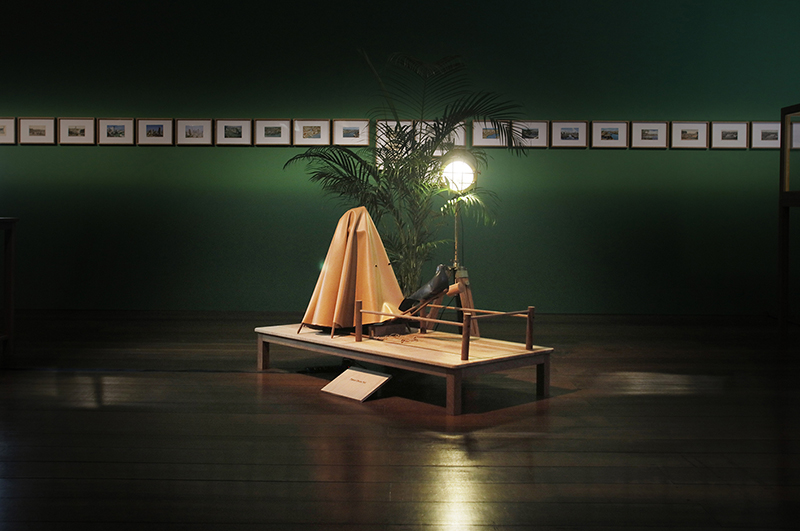 Installation View, The Nature Museum at 72-13.
Installation View, The Nature Museum at 72-13.
Exhibition only: 1 - 9 Sep Mon-Sun: Noon - 11pm (on performance nights, exhibition is closed between 6pm-10pm)
Performance: 31 Aug, 1, 2, 5, 6, 7 Sep 8pm 1h, no intermission
The Nature Museum is a fascinating exploration of Singapore’s natural history through historical and fantastical narratives created by the Institute of Critical Zoologists (ICZ).
An immersive museological setting by Robert Zhao of ICZ, The Nature Museum takes you on a journey through photographs, artworks and historical documents both found and fabricated. Get lost in another time as you wander around the artful arrangements of books, posters and images captivatingly displayed on Victorian shelves and vitrines, accompanied by antiquated caption texts.
Artist and photographer Zhao has become known for his layered narratives blending historical documentation and imaginative storytelling that provide thought-provoking commentary on natural as well as social issues. The installation is fleshed out by a guided tour and lecture performance, created in collaboration with playwright Joel Tan, weaving together myriad stories of our island’s rich flora and fauna, its little-known agriculture and aggressive landscaping, fully revealing the extent of Singapore’s ‘Garden City’ moniker.
Underneath bubbles a deeper story of violence and control, hidden in much of Singapore’s encounters with nature: forests recede while manicured greenery emerges. Rediscover the meaning behind images of the plantations and jungles of our past and ponder the implications of the clash between Nature and urban development on our tiny island.
In ICZ’s inimitable style, The Nature Museum meshes past and future in an arresting work that will astonish all who are curious about the world around us.
Commissioned by Singapore International Festival of Arts (SIFA).'
72-13 is located at 72-13 Mohamed Sultan Road, Singapore 239007
Christmas Island, Naturally in the 7th Moscow International Biennale of Contemporary Art
23rd Aug 2017
19th Sept 2017- 21st Jan 2018
Tretyakov Gallery, Moscow, Russia
Clouds//Forests
Concept by Yuko Hasegawa
7th Moscow International Biennale of Contemporary Art entitled Clouds//Forests is a proposition at a time of crisis to instigate the establishment of new relationships in our world. This proposition will be proposed by the artists and creators called ”Creative Tribes”, who gather in different sites all over the world, do not feel restricted to the notion of nation state and also surmount the dichotomy between globalism and localism.
Since ancient times, tribes sharing common mediation functions (proxemics) have been established on the basis of shared environments: land, climate, and such corporeal conditions. They share certain knowledge, aesthetics and a lifestyle fostered by land/forest. If represented by the metaphor of a forest, they would resemble a collection of trees growing in a common environment.
Over the past three decades, such tribes have been leaving the forests and have started creating new assembly points in the Internet or “Cloud“ space. As the forests engender such clouds, many new media become such personal spaces imbued with the mechanisms of animism, thereby creating life in all manner of things in new technologies: from information to bacteria.
At the same time, a particularly young cloud tribe from the post-Internet generation (born and raised in the “Cloud” space) tends to return to the ground/the forest in order to explore another physical reality and seek cultural roots.
These two directions - one “from the Forests to Clouds” and the other “from the Clouds to Forests” - create a single circular eco-system. This circulation of the eco-system in the metaphors of Clouds and Forests unleashes a new wind of change to the existing system of art, society and the environment.
Art functions precisely as an enigmatic signpost, nourishing our sensory apparatus so that we can gain a better understanding of our human condition Clouds?Forests focuses on artists as a creative tribe transitioning, expanding and dissipating, from forest to cloud, rebuilding the subjectivity of spectators and showing that creativity is vital to the creation of new environmental spheres. Taking into account perceptions on the generation of new subjective environmental spheres, the curatorial criteria for this exhibition includes giving life to new technologies as well as exploring ways to obtain animistic artistic languages and connect cultural roots, and leveraging the rhizome-based organic system to traverse history, genres, and media.
The effects of an increasingly globalised capitalist order are at the root of the recent surge in nationalism and populism. In contrast, the new tribes at the heart of this exhibition represent examples of how we can calmly confront these same issues by generating alternative environmental spheres, compounding subjective spheres, and promoting peaceful co-existence.
For more information, click here.
A Guide to the Flora and Fauna of the World @ Human+, ArtScience Museum, Singapore
20th May 2017
 Three-eyed Goliath beetle, from the series, A Guide to the Flora and Fauna of the World, 2013
Three-eyed Goliath beetle, from the series, A Guide to the Flora and Fauna of the World, 2013
20th May - 15th October 2017
HUMAN+ THE FUTURE OF OUR SPECIES
Advances in genetic engineering, biotechnology and nanotechnology that not long ago seemed purely science fiction are now real. Cyborgs, superhumans and clones are alive amongst us today. What does it mean to be human now? What will it feel like to be a human a hundred years from now? Should we continue to embrace modifications to our minds, bodies and daily lives, or are there boundaries we shouldn’t overstep?
HUMAN+ The Future of Our Species explores the possible future paths of our species. It asks what it means to be human in a world of artificial intelligence, lifelike robots and genetic modification. It probes the social, ethical and environmental questions raised by using technology to modify ourselves. Will virtual reality be the new reality? What would happen if a robot knew what we wanted before we knew ourselves? How might we modify ourselves to adapt to an environment that we are drastically transforming? Is longevity a noble aspiration or a terrible threat for the planet?
A Guide to the Flora and Fauna of the World by Singaporean artist, Robert Zhao Renhui, seeks to document and reflect on the myriad ways in which human action and intervention are slowly altering the natural world.
The guide presents a catalogue of curious creatures and life-forms that have evolved in often unexpected ways to cope with the stresses and pressures of a changed world. Other organisms documented in the series are the results of human intervention, mutations engineered to serve various interests and purposes ranging from scientific research to the desire for ornamentation.
For more information, click here.
137 years, Research residency at musée du quai Branly - Jacques Chirac, Paris
20th March 2017
March - September 2017
Camping and Tramping in Malaya is a book that documents the journey of
Ambrose B. Rathborne when he travelled through the Malay Peninsula in 1880.
137 years later, The Institute of Critical Zoologists attempted to retrace his footsteps and search for the
animals he encountered during his journey.
The animals are still around, but in slightly different contexts.
The Bizarre Honour
13th Jan 2017
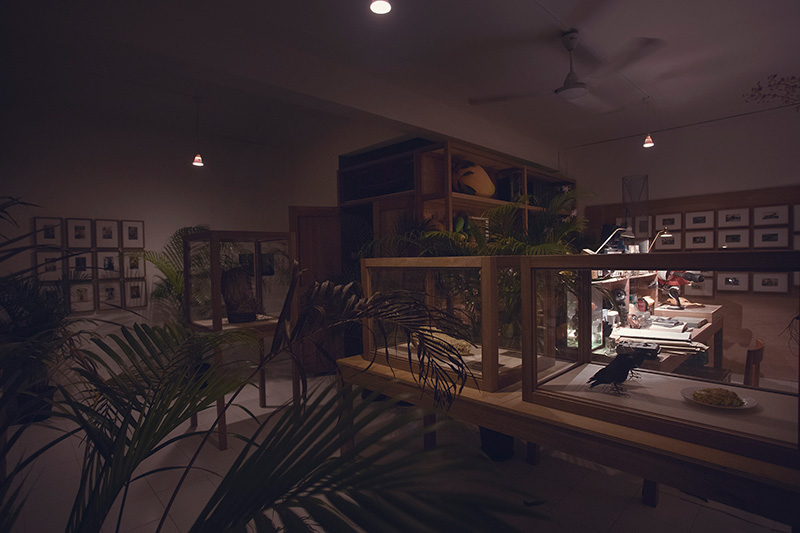 Installation view, The Bizarre Honour
Installation view, The Bizarre Honour
Jan 2017 - March 2017
"Step into a labyrinth-like museum of curiousities when a two-storey terrace house in Chip Bee Gardens opens as part of Singapore Art Week, set with animal traps, tropical field equipment, taxidermy and rare colonial photos. This is OH’s fictional institution, and with no guides, labels or explanations, you’re left to make meaning of artefacts within the living, breathing museum. The experience’s only open to two visitors at a time, so book ahead." - Time Out, Singapore
OH! Open House, in collaboration with the ICZ, is transforming a two-storey terraced house in Chip Bee Gardens into a maze-like museum of curiosities.
The Bizarre Honour – presented as an institution showcasing their eclectic collection in a newfound space – will unveil over 300 natural objects and artefacts dating from the colonial period to the contemporary times. Collected by the artists over a period of 15 years, the exhibits survey Singapore’s contentious relationship with its nature.
In a unique and highly private experience, only two visitors are allowed in the museum at any one point of time. From rare colonial photos, taxidermy and animal traps to tropical field equipment, visitors can expect a sensory treat while they immerse themselves in a living, breathing museum. Visitors should prepare themselves for spending 30 minutes in the museum where there are no guides, labels or explanations, and no distinction between art and artefacts. Visitors can only rely on a personal dossier – comprising memos, photographs and other classified information pertaining to exhibits and experiments – to unlock the mysteries of the museum and its exhibits.
Mr. Alan Oei, 40, co-founder and Artistic Director of OH! Open House, explains the concept of the museum: “The cultural airspace is dominated by the few blockbuster museums like Tate, MOMA, and now we’ve added the National Gallery of Singapore. So we want to ask if there is a space for a different kind of museum.”
We looked back at the Wunderkammer, Cabinet of Curiosities, and you see it was very artistic. It wasn’t about national representation or state narratives. They expressed something more human, more personal – curiosity and collecting.
There’s a wondrous relationship between art and Natural History – it’s about discovering uncharted worlds, and finding new relations between things, even things that may seem very mundane. Animal traps, for instance, reflect the local culture and myths. So a sparrow trap reflects the Singapore vernacular; it’s unique to us. Also, we have an entire collection of photographs taken by a British tourist in Singapore over a few decades. Each photograph by itself is very ordinary, but put together is an obsessive, fractured portrait of Singapore you’d never find in the history books,” he adds.
We’re working with a few artists to make our own version of a museum. We’re not revealing the names because we want the focus to be on the experience, not the ‘brand’ or the oeuvre. It’s just you and the exhibits, the live experiments – how do you make sense of things?”
You can purchase tickets to The Bizarre Honour at S$45 which includes a hand- assembled 80-page dossier.
For more information, click here.
To view the project, click here.
Christmas Island, Naturally @ ShanghART Singapore
11th Jan 2017
11 MAR 2017 - 08 MAY 2017
ShanghART Singapore is pleased to present a solo show by acclaimed Singapore artist and photographer Robert Zhao Renhui, titled “Christmas Island, Naturally” on view from 11 March through 8 May. The exhibition comprises works commissioned for and exhibited at the Sydney Biennale 2016 and marks the debut of these works in Singapore, as well as showcasing previously unexhibited works in the series.
The opening reception will be held Wednesday, 15 March 2017, from 6-9pm, including an artist’s talk and exhibition book launch.
Under his Institute of Critical Zoologists (ICZ), devoted to a “critical approach toward the zoological gaze, or how humans viewanimals” and to “advance unconventional, even radical, means of understanding human and animal relations,” the artist’s multi-disciplinary approach appropriates scientific language, tools, methods and even apparatus, juxtaposed with fabulist storytelling. His works inhabit an uncanny space between reality and fantasy, often exposing overlooked contradictions, assumptions, and tensions inherent in man’s relationship with nature. Blending fact and fiction, truth and artifice, the artist invites viewers to contemplate upon the image and information being presented, a reflexive gesture that proves to be particularly pertinent in an image-saturated world of “fake news.” And sometimes, as the artist demonstrates, truth is in fact stranger than fiction.
The artist conducted a research residency on Christmas Island between 2015-2016. A small volcanic outcrop in the Indian Ocean, the island’s geographic isolation has resulted in its endemic biodiversity. Once part of the Crown Colony of Singapore, the island is now an External Territory of Australia. Christmas Island is best known for its annual breeding migration of red land crabs from land to the sea, during which millions of bright red crustaceans overtake the island and all vehicular activity grinds to a halt. Phosphate mining, the island’s main industry, began in the late nineteenth century, and invasive species brought over by human settlers have tipped the scales of the island’s fragile ecological balance, driving multiple native species to extinction and threatening others. Conservation efforts include an island-wide culling of non-native cats, to which the island’s native fauna had fallen easy prey.
The artist’s study focuses on documenting the island’s imperiled and extinct species, and also examines the unintended consequences of man’s presence. The artist’s photographic series of the island’s strange creatures, natural phenomena and landmarks are accompanied by signature pseudo-scientific, tongue-in-cheek exposition and field notes. In addition, the artist references objects from the island for two installations on view. Memorial to the Christmas Island Pipistrelle (2016) is a solar-powered ultrasonic echolocator used to track the pipistrelle bat. Rendered meaningless due to the species’ extinction, the apparatus serves as silent, poignant reminder of the pipistrelle’s permanent absence. The elegant wooden form of Memorial to the Last Cat on Christmas Island (2016) belies its lethal function as a feral cat trap, indicated by its pointed installation together with a resin cat skeleton. “Christmas Island, Naturally” culminates in a speculative solution to remove all invasive species from the island once and for all, whereby humans, also proverbial “invasive species”, opt to leave the island in order to preserve its ecology. This imagined scenario unfolds via a fictive conservation conference program, “Life After Humans – Rewilding Island Ecosystems,” as well as extracts from scientific papers presented.
For more information, click here.
To view the project, click here.
The Natural History of an Island
20th October 2016
The oldest coconut tree in Singapore, 106 years old
The Natural History of an Island
An Affliate project of Singapore Biennale 2016.
Exhibition at DECK.
EXHIBITION DATES 26 November 2016 to 12 February 2017
As part of the exhibition with Ang Song Nian, The Photograph as Atlas
The Photograph as Atlas looks at photography’s role as a mirror of history that can be both objective and subjective at the same time. It explores the navigation and creation of history through photographs, and how – as much as they serve as a record of history – photographs may also be manipulated and navigated in new ways, proving that they are not as faithful as they seem to be.
In The Natural History of an Island, artist Robert Zhao Renhui looks at the natural history of Singapore in a 100-year frame, based on his collection of images of Singapore’s natural landscape from the 1900s. Using a self-made mobile expedition vehicle, the artist explores and maps out ‘natural’ spaces in tress in Singapore, uncovering historical narratives along the way. Investigating Singapore’s relationship with its natural landscapes through the years, The Natural History of an Island examines the various ways in which the landscape has been altered based on needs and desires from nature.
Chobi Mela IX International Festival of Photography
10th Jan 2017
A Guide to the Flora and Fauna of the World will be exhibited at this year's Chobi Mela International Festival of Photography, Transition.
For more information, click here.
Singapore, Very Old Tree
12th Dec 2016
Ageing gracefully through decades, trees create a sense of collective identity across generations. Against our changing landscape of modern skyscrapers and high-rise buildings, they stand steadfast as living memoirs of Singapore’s shared heritage.
At the bottom of the Glass Rotunda is the Singapore, Very Old Tree exhibition, inspired by an old postcard found in the National Archives of Singapore. The postcard depicts an unspecified tree dating back to the year 1904. Produced by renowned local photographer and artist Robert Zhao, this exhibition was first commissioned as part of the Singapore Memory Project and later exhibited as part of the nation’s SG50 celebrations. This permanent exhibition showcases 17 images of trees around Singapore and highlights the unique stories of each, providing an alternative perspective of Singapore’s history and the personal connections that Singaporeans have with our local trees.
Daily from 10am – 7pm Last admission at 6.15pm
National Museum of Singapore
For more information, click here.
To view the project, click here.
Each Blade of Grass Each Shrub Each Tree, Substation Gallery
5th May 2016
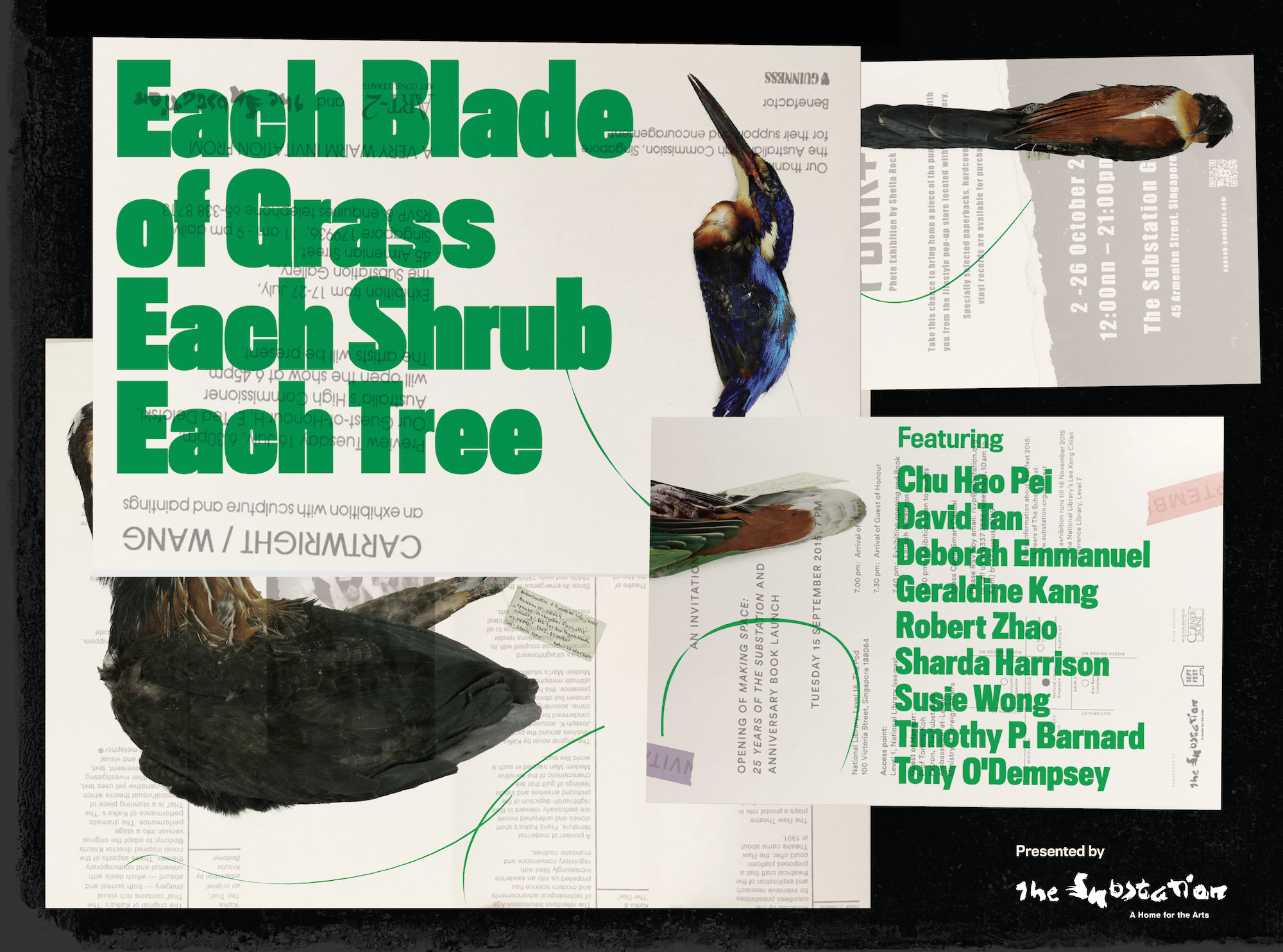
For more information, click here.
In 1963, a Mempat tree was planted by the nation’s Prime Minister. Planting has never been about trees; it’s a moment transformed into a photograph. Singapore has always shaped itself in, and after the image. Garden City is the clean and green image—think about those majestic trees that line our expressways as you emerge from Changi Airport. The Substation presents a programme of exhibition, performance and forum, through artists who resist constructed visions of nature as a singular, unchanging entity. They complicate our understanding of Nature and the Garden: from the edenic to the horrifying, from the sublime to fictions of representation. Nature, through their eyes, becomes speculative, autonomous but also charged with human trace.
Find out more about The Substation's new artistic directions in responding to MacRitchie Reservoir Cross Island Line discussions here.
The Substation Gallery, 45 Armenian Street Exhibition: 5 - 15 May 2016 (Open daily from 12PM to 8PM) Closed for a private performance and forum on 7 May from 1PM to 4PM.
Featuring Chu Hao Pei, David Tan, Deborah Emmanuel, Geraldine Kang, Robert Zhao, Sharda Harrison, Susie Wong, Timothy Barnard, and Tony O’Dempsey
New bookwork, Mynas
Christmas Island, Naturally - The 20th Biennale of Sydney, Carriageworks
An experiment in natural history investigation
8th March 2016
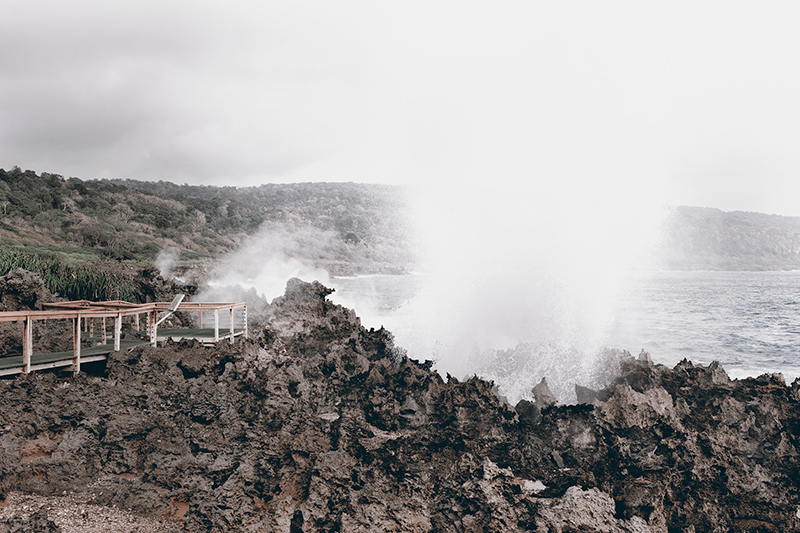 Christmas Island, Naturally, 2016
Christmas Island, Naturally, 2016
20th Biennale of Sydney
18th March - 5th June 2016
Carriageworks

This project looks at the ecology of Christmas Island. The nearly 150 years of human settlement have introduced a number of invasive species onto the island. Not only do these newcomers threaten some of the island’s most imperiled species, such as the Abbott’s Booby and Christmas Island Gecko, they have also caused the extinction of other species.
Christmas Island's ecology is considered to be unique due to its endemic flora and fauna and the presence of large populations of land crabs and seabirds, which are the most noticeable fauna on the island. The annual breeding migration of the red crabs is also a well known event. Researchers estimate that 40 million crabs live on the island now, and the number could have been twice that before invasive yellow crazy ants became a problem.
As a result of its unique biodiversity, exceptional endemism and the myriad of threats faced by invasive species, Christmas Island is a high-value conservation area currently gazetted as a strict nature reserve. In recognition of the island’s fragile ecosystems, the 3rd Christmas Island Conservation Plan called for the resettlement of human communities, which eventually led to a relocation of these communities to the Australian mainland. At present, a permit is needed for researchers intending to study biodiversity on the island, and the island remains indefinitely out of bounds to commercial tourism.
The artist, Robert Zhao Renhui undertook a research residency on Christmas Island between 2015-2016 and produced the book, 'Christmas Island, Naturally.' The book consists of 120 images and documents on the extinctions and conservation efforts on the island.
An installation of the project will take place at Carriageworks during the 20th Biennale of Sydney.
More about Christmas Island, Naturally - http://criticalzoologists.org/christmas
20th Biennale of Sydney - https://www.biennaleofsydney.com.au
Venue : Carriageworks - http://carriageworks.com.au/
Purchase book here.
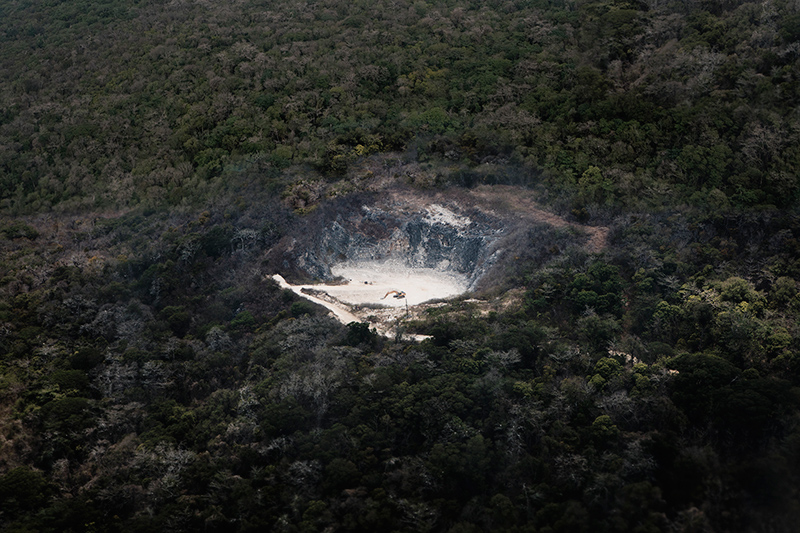
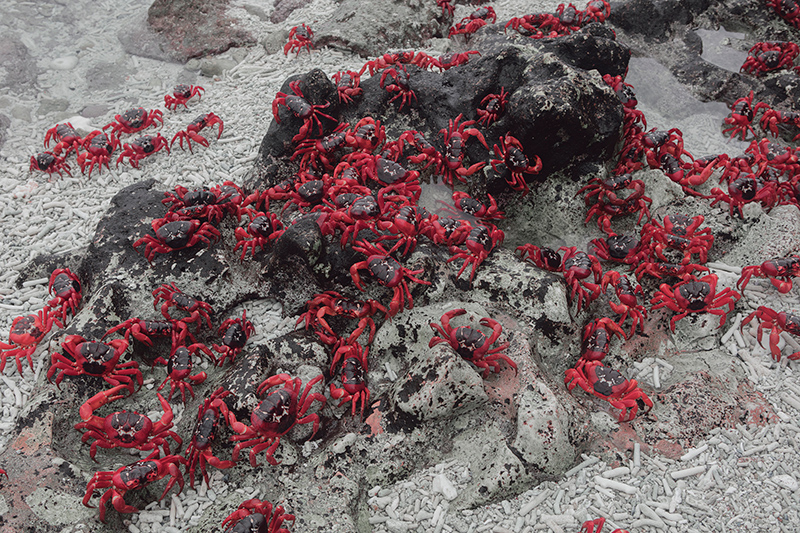
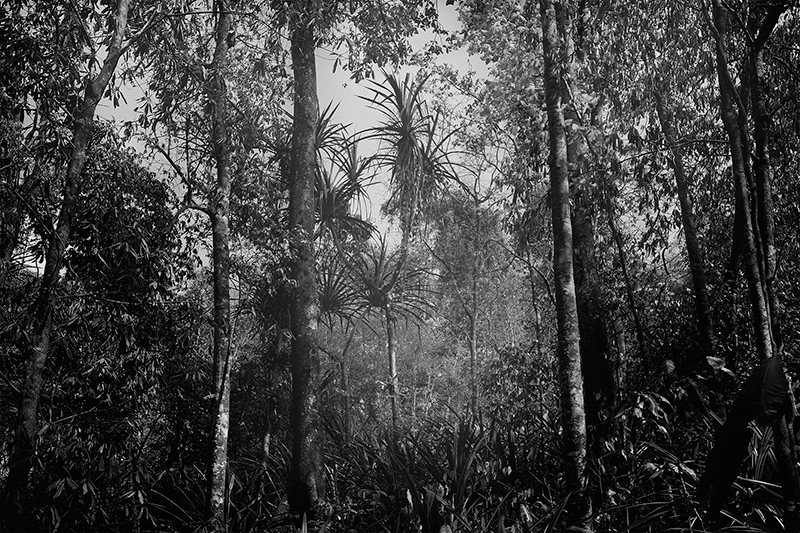 The last echolocation call of a tiny bat native to the island, the Christmas Island Pipistrelle (Pipistrellus murrayi), was recorded on this spot on 26th August 2009.
The last echolocation call of a tiny bat native to the island, the Christmas Island Pipistrelle (Pipistrellus murrayi), was recorded on this spot on 26th August 2009.
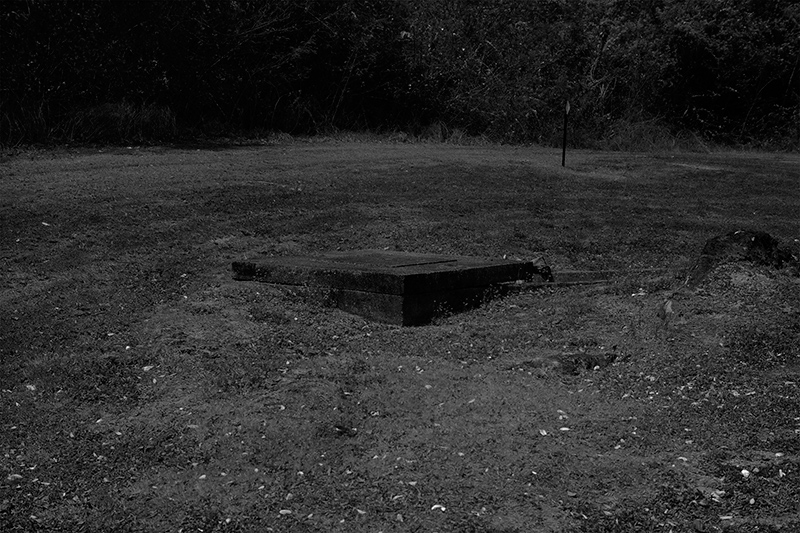 The last stray dog on Christmas Island was seen on this spot in 2012, shortly after the beginning of the Cat Eradication Program. There are currently no dogs on Christmas Island.
The last stray dog on Christmas Island was seen on this spot in 2012, shortly after the beginning of the Cat Eradication Program. There are currently no dogs on Christmas Island.
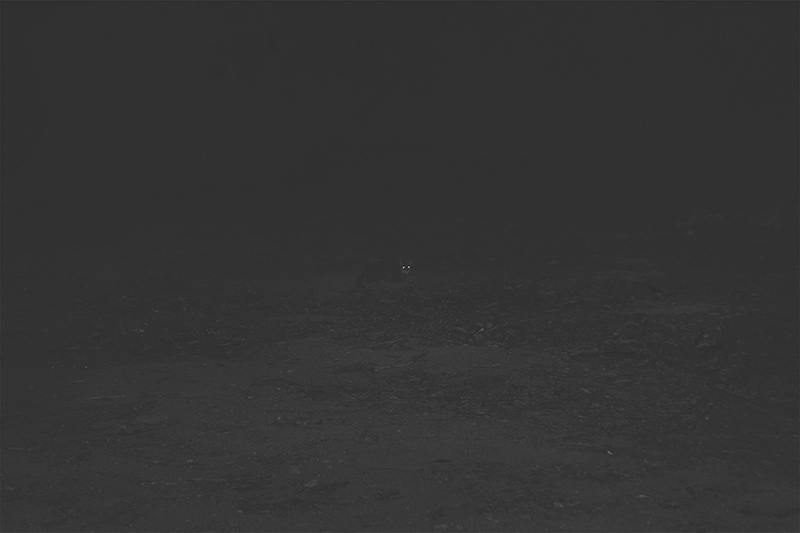 A widespread search in 2015, using automatic cameras, yielded only a rare glimpse of a single individual. A long time has passed without conclusive evidence of the cat’s survival, and sadly this domestic species must be considered ‘probably extinct’ on Christmas Island. The personal opinion of the authors, however, based mainly on the continued and increasing incidence of impressive sightings and the availability of apparently suitable prey, is that there is still a chance that this intriguing animal has survived to the present day.
A widespread search in 2015, using automatic cameras, yielded only a rare glimpse of a single individual. A long time has passed without conclusive evidence of the cat’s survival, and sadly this domestic species must be considered ‘probably extinct’ on Christmas Island. The personal opinion of the authors, however, based mainly on the continued and increasing incidence of impressive sightings and the availability of apparently suitable prey, is that there is still a chance that this intriguing animal has survived to the present day.
Q. Yong, G. Chia, 'Search for the Last Christmas Island Cat', 2015

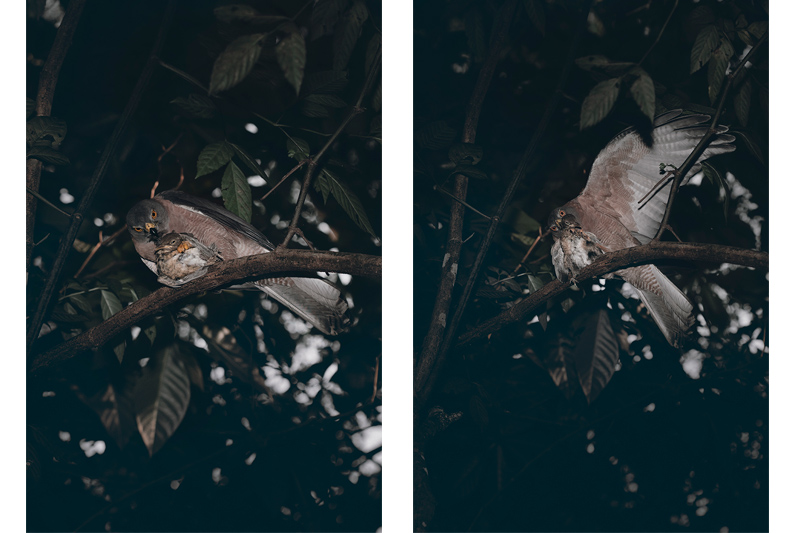
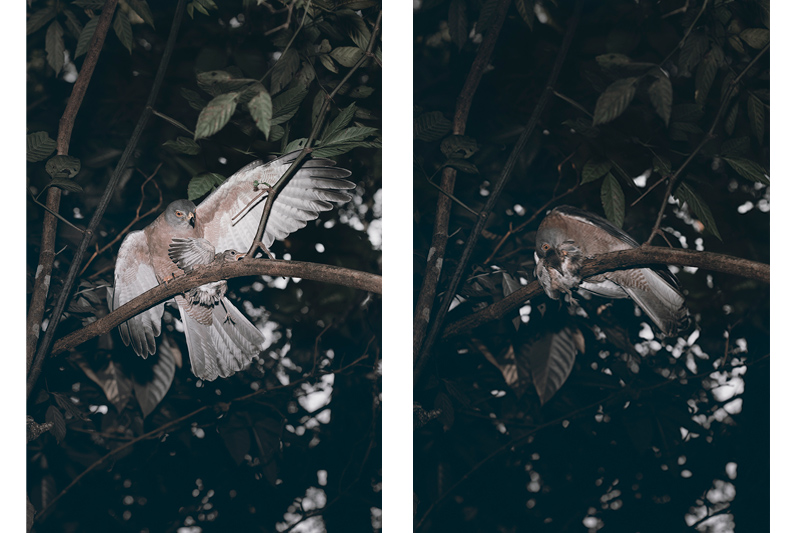
On numerous occasions, I noticed a Goshawk shadowing me in the forest as I searched for insects under fallen branches and logs. This particular individual was not shy at all - in fact, at some point I had clear views of it for as long as 20 minutes. I finally understood its peculiar behaviour when one day, I saw it swoop down to grab a thrush that flew out when I was traipsing through the vegetation during my insect hunt. It was using me as a proxy to flush potential prey.
R. Zhao, 'Field notes on the foraging ecology of the Christmas Island Goshawk (Accipiter fasciatus natalis)', Institute of Critical Zoologists, Journal No. 174, 2015
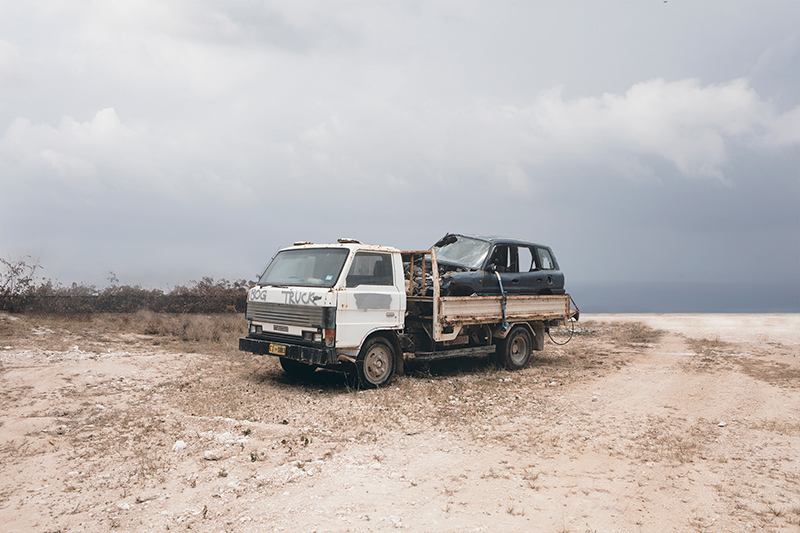 Following a recent research expedition to the Christmas Island Natural Reserve, an ecologist asked us to assess the impact of the 3rd Christmas Island Conservation Plan on populations of endemic animals. We replied that, although a quantitative assessment is dif cult and more research is needed to understand this phenomenon, the net ecological impact has been positive. After a long pause, the perplexed ecologist asked how it could be possible that a landscape invaded by exotics could produce positive ecological consequences. The answer was simple— humans have evacuated the island.
Following a recent research expedition to the Christmas Island Natural Reserve, an ecologist asked us to assess the impact of the 3rd Christmas Island Conservation Plan on populations of endemic animals. We replied that, although a quantitative assessment is dif cult and more research is needed to understand this phenomenon, the net ecological impact has been positive. After a long pause, the perplexed ecologist asked how it could be possible that a landscape invaded by exotics could produce positive ecological consequences. The answer was simple— humans have evacuated the island.
T. Satoshi, ‘Restoration and rewilding nature: freeing ecosystems from humans’, Unpublished
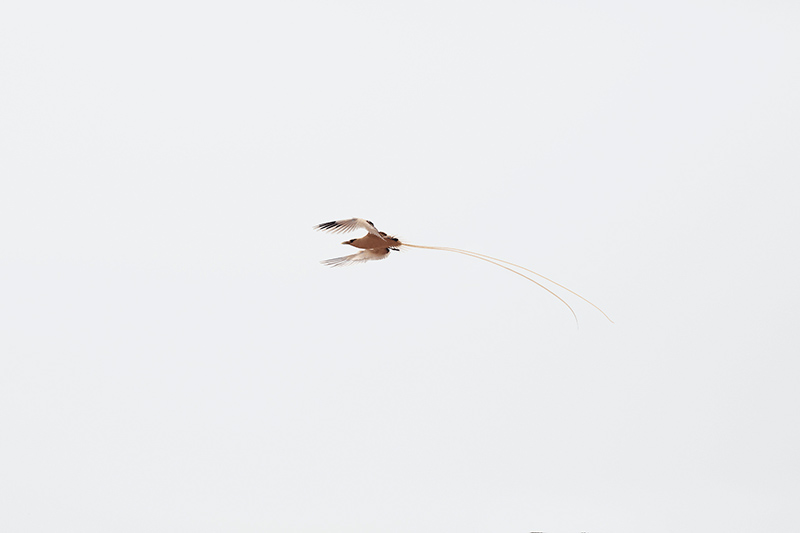
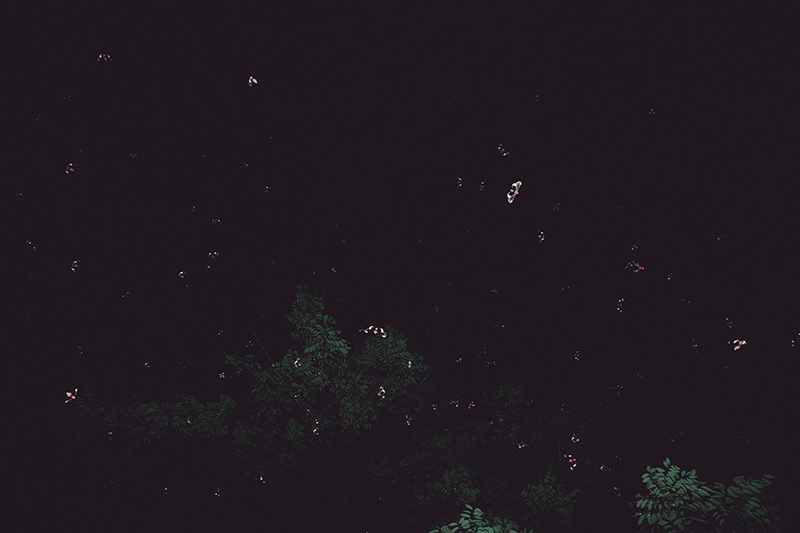
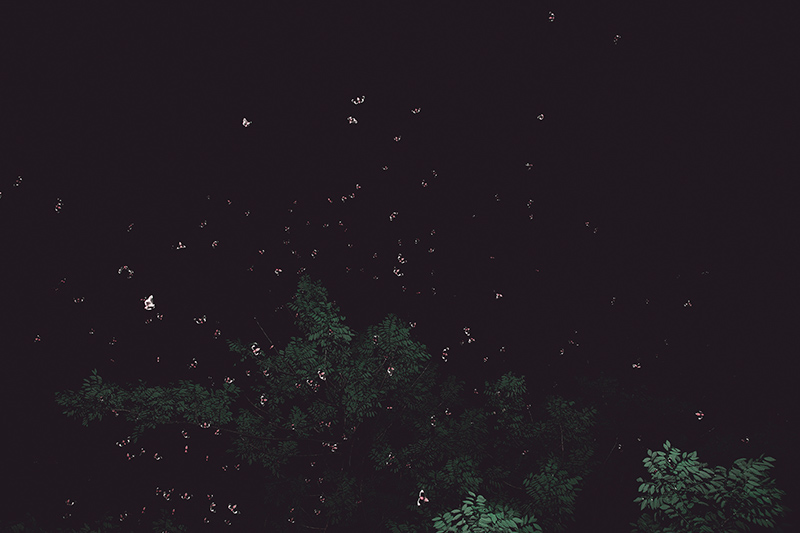
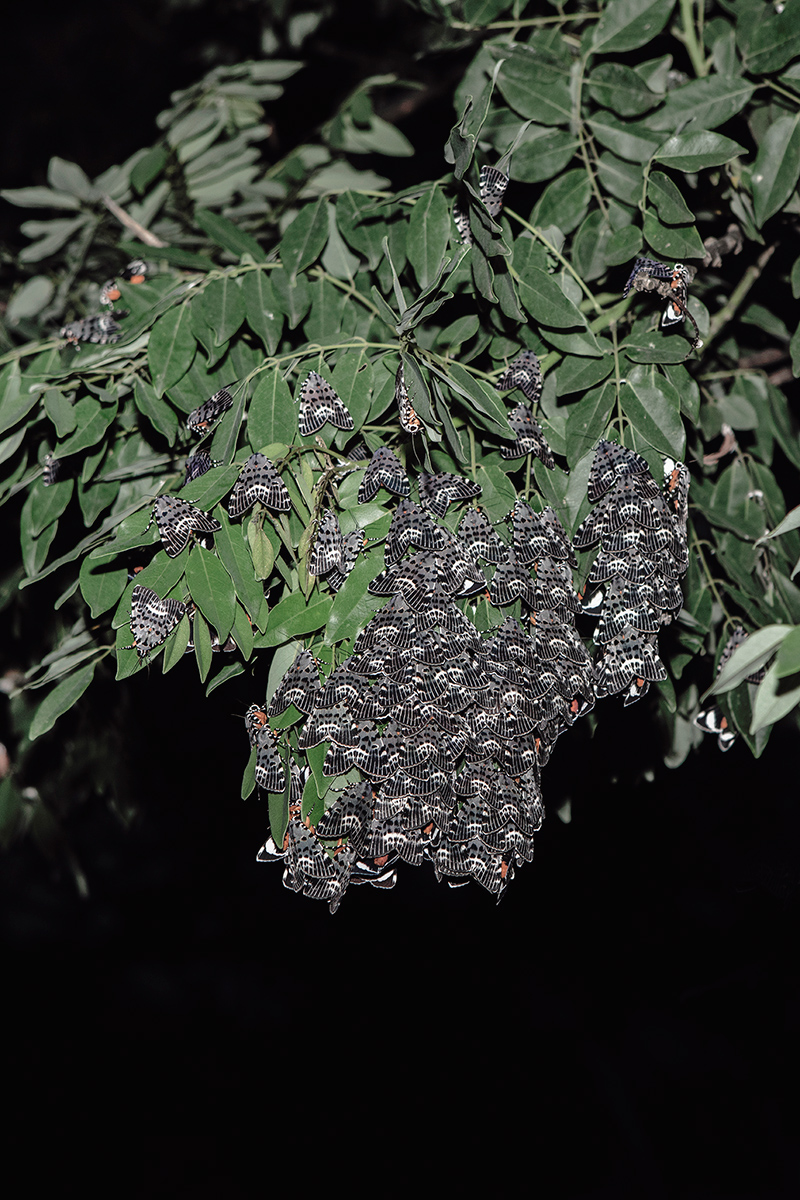
The Tree That Fell
7th September 2015
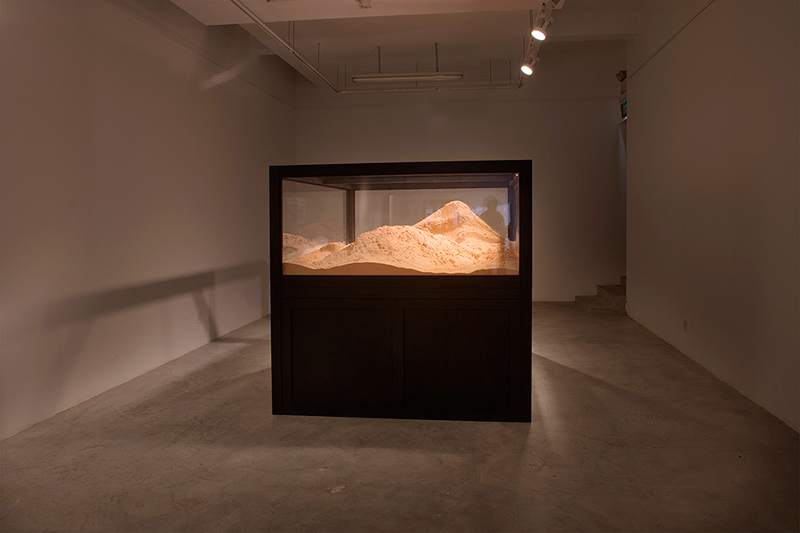 How To Make A Tree Disappear As Nature Intended II (2015)
How To Make A Tree Disappear As Nature Intended II (2015)
2mx2mx1.55m
Vitrine, 150kg of sawdust from The Substation Malayan Banyan tree.
The artist spent nine months sanding down each piece of trunk manually with sand paper. This pile of sawdust came from 200kg of wood.
The Tree That Fell
Robert Zhao Renhui | The Substation
Friday, 28 August, 2015 – Sunday, 27 Sepetember, 2015
12-8pm Daily
In 2014, I spent a few nights under one of the Banyan trees at the back of The Substation for a project. A few months later, all the trees there were chopped to make way for a new building, except for the largest one, which was uprooted and kept somewhere till it finds a new home. During the demolition, I salvaged some of the tree trucks and kept them, not really knowing what I would do with them.
A year later, I found that the trunks were mostly intact, and there were little insects and plants growing in them. Only one of the segments was reduced to an ashy powder by powderpost beetles.
I started thinking about the idea of disappearance in nature, and how long, without intervention, a tree takes to disappear. As an experiment, I started sanding all the wood down manually to see how long I can reduce it to dust.
It took me nine months.
Meanwhile, I know that the large Banyan tree will be transplanted in a few years time. It takes forever for a tree to disappear in the forest, but in Singapore, we can grow a 30-metre tree in just a few days. It is almost a miracle.
Slow disappearances and instant trees: Time is warped in the tree world in Singapore.
- Robert Zhao Renhui, incollaboration with The Substation for Septfest
The artist sanding down the trunks for How To Make A Tree Disappear As Nature Intended II (2015)
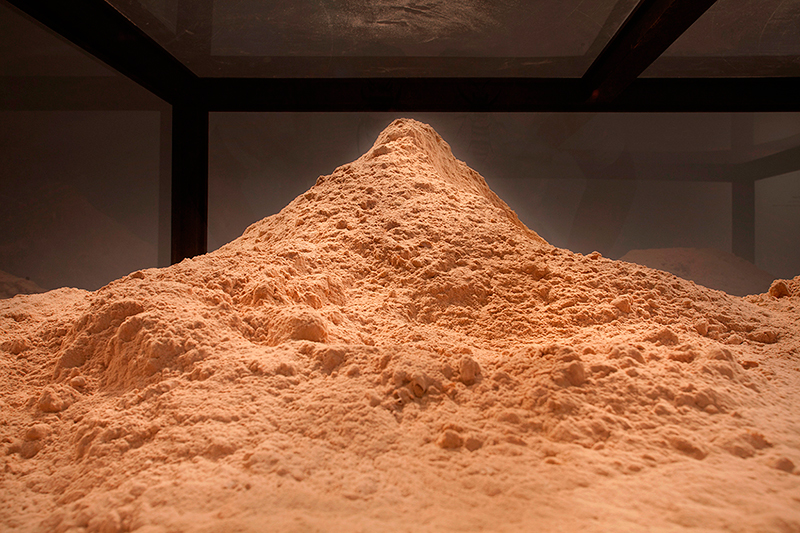 Detail of How To Make A Tree Disappear As Nature Intended II (2015)
Detail of How To Make A Tree Disappear As Nature Intended II (2015)
 How To Make A Tree Disappear As Nature Intended I (2015)
How To Make A Tree Disappear As Nature Intended I (2015)
4.25m x 0.6m x 1.55m
Vitrine, Substation banyan tree root, powderpost beetles, powder
The artist salvaged this long root from the Substation Banyan tree that was taken away to be transplanted. The inside of this branch is slowly being eaten by the larva of powderpost beetles, which spend months or years inside reducing the wood to fine powder. Their presence is only apparent when they emerge as adults, leaving behind pinhole-sized openings, often called "shot holes". If conditions are right, female beetles may lay their eggs and re-infest the wood, continuing the cycle for generations, and reducing the wood to a pile of dust.
What it is about when it is about nothing

Secret need for your existence ii, 2015
30x30x30cm
Resin, Gold-leaf, Diasec
What it is about when it is about nothing
Curated by Michael Lee
What it is about when it is about nothing is a group exhibition of works by 7 sets of artists curated by Michael Lee, which aims to broaden the discussions about Singapore art beyond the ongoing surge of thematic shows about Singapore identity, quirks and repressed histories. It aims firstly to explore the aesthetics of “nothing” in the context of an art scene anxious to assign something meaningful to artworks, and secondly to expand definitions of the “Singapore artist” beyond country of birth, nationality and base.
Artists : Perception3 (Regina De Rozario & Seah Sze Yunn), Ho Rui An, Robert Zhao, Jennis Li Cheng Tien, Homa Shojaie, Adeline Kueh and Michael Lee
25 September - 25 October 2015
Vernissage :
Friday, 25 September 2015
6 p.m. - 9 p.m.
Mizuma Gallery, Singapore
The Discovery Award, Rencontres d'Arles
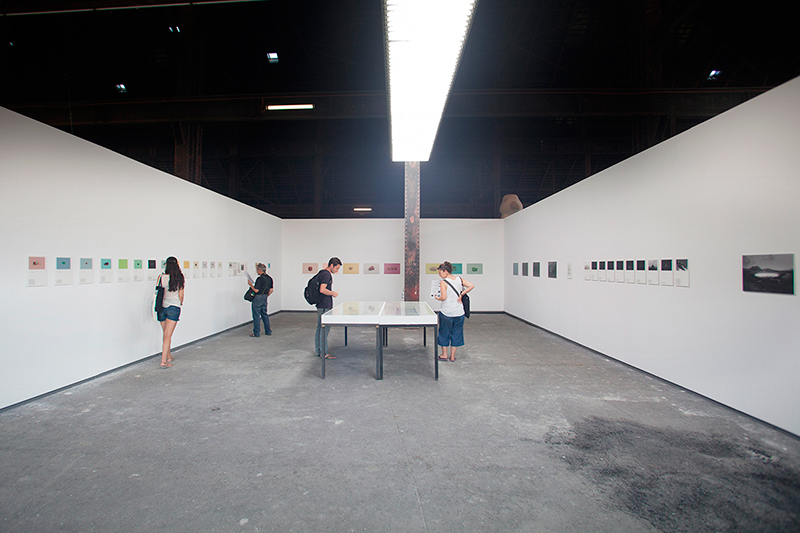 A Guide to the Flora and Fauna of the World, Installation View at Rencontres d'Arles, 2015
A Guide to the Flora and Fauna of the World, Installation View at Rencontres d'Arles, 2015
2015, Dimensions variable
Installation of documents and prints
A Guide to the Flora and Fauna of the World is nominated by Louise Clements (UK) to be part of the Discovery Award this year.
The Discovery Award is given to a photographer or an artist using photography whose work has recently been discovered or deserves to be. Every year since 2002, each of the five nominators invited by the Rencontres d’Arles has nominated two photographers, who exhibit their work in a solo show at the Parc des Ateliers.
Copies of the book available here
Singapore : http://tinyurl.com/mec8gry
Worldwide Shipping : http://tinyurl.com/k6x6g6e
6 July - 20 September
Pause, Photo Bangkok Festival
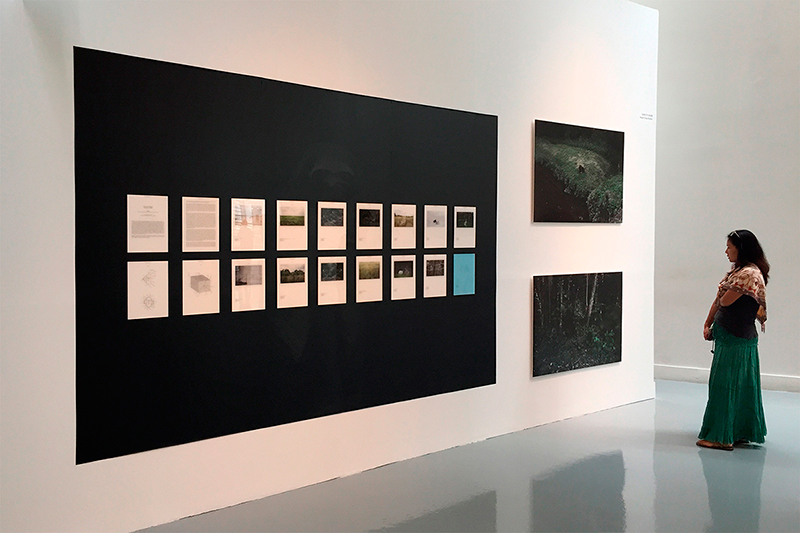 Installation view of The Blind of Pause at Bangkok Art Cultural Centre during Photo Bangkok festival 2015. Curated by Ark Fongsmut
Installation view of The Blind of Pause at Bangkok Art Cultural Centre during Photo Bangkok festival 2015. Curated by Ark Fongsmut
PAUSE, a contemporary photography exhibition, is a part of Photo Bangkok festival 2015 with the support of Bangkok Art Cultural Centre. The artists in the exhibition are Ang Song Nian, Bui Huu Phuoc, Jed Escueta, Kim Hak, May Co Naing, MES 56, Minstrel Kuik Ching Chieh, Naruebes Vadvaree, Nazaruddin Abdul Hamed, Phan Quang, Prateep Suthathongthai, Robert Zhao Renhui, Sophal Neak, Souliya Phoumivong and Yason Banal.
This contemporary photography exhibition, PAUSE, introduces a sketch or a collage of stories and issues of the region through the artists’ critical point of views without any conclusion. All exhibited artworks do not come from single disciplinary. They reflect visions and opinions that are re-contextualizing through photography in various medias in order to open our mind for new realities from our neighborhood.
- See more at: http://en.bacc.or.th/event/PAUSE.html#sthash.qIe70nl2.dpuf
Exhibition runs from July 30, 2015 to November 01, 2015
Bangkok Art Cultural Centre
Main Gallery 9th Floor
Opening hours: Wed-Sat 12 to 6 pm
Biel/Bienne Festival of Photography
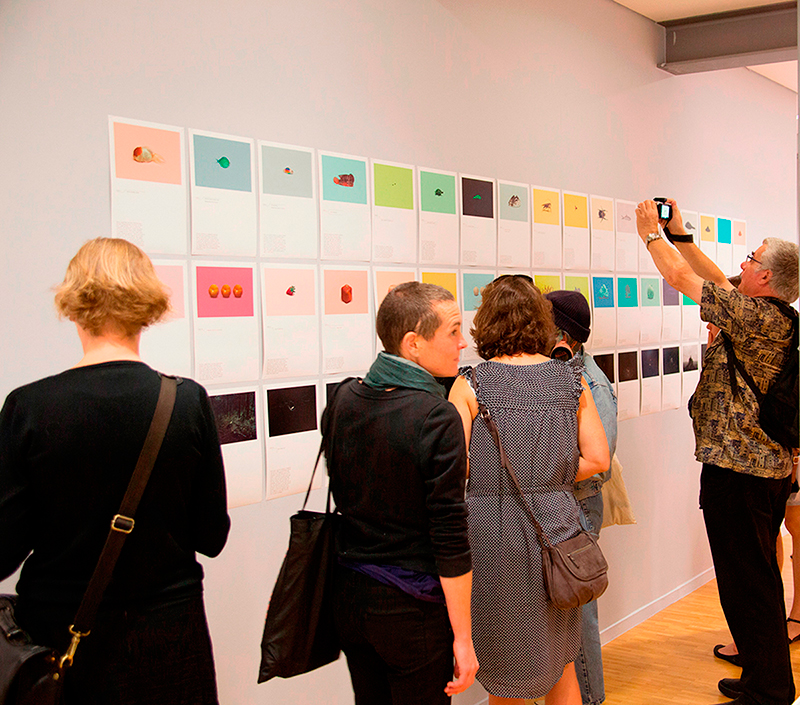 Installation view of A Guide to the Flora and Fauna of the World at Biel/Bienne Festival of Photography, 2015
Installation view of A Guide to the Flora and Fauna of the World at Biel/Bienne Festival of Photography, 2015
Biel/Bienne Festival of Photography
28.8-20.9.2015
Through the theme of adaptation, a subject that is of particular contemporary relevance, the 19th Biel/Bienne Festival of Photography will reveal trends in emerging Swiss and international photography. In their explorations of the remarkable ability of living things to adapt, the invited photographers record how human beings, animals, and even the landscape are transforming themselves in reaction to new conditions. In the 21st century, the challenges are mainly created by humans themselves. Confronted with entirely new situations, individuals, whether in isolation or as members of a group, seek ways to adapt, or sometimes to resist it.
The Festival has selected works of photography which engage closely with issues that raise questions for the future of our contemporary societies: intensive resource development, neocolonialism, demographics, economic needs, recent political changes, religion, genetic modification, climate change, new technologies, as well as the uses of the medium of photography itself. The photographers have aimed at finding subjects that reflect a present that is very near to us, from one end of the planet to the other: from Japan to the US, from Ukraine to Lesotho, and in Switzerland too. The images offer a panorama of the practice of photography now: documentary photos, humanistic projects and conceptual ones; photographs with a scientific or classificatory aim; projects that incorporate archival images or images found on the internet; and installations that take possession of the exhibition space.
Documents and images from A Guide to the Flora and Fauna of the World is on show at the Neues Museum Biel.
Biel/Bienne Festival of Photography, Switzerland
Flies Prefer Yellow
8th December 2014
 He counts the stars and call them all by name
He counts the stars and call them all by name
2.1m x 1.5m, Chromogenic Color Print, face mounted on Plexiglass, Framed
A family portrait photograph of 4784 flies from a single family of flies. Each fly is meticulously labelled with information of its provenance and some of these flies mimics/pretends to be other insects like bees and wasps to cheat predators.
Flies Prefer Yellow
Robert Zhao Renhui | Kadist Art Foundation
Resulting from his three-month residency at Kadist Art Foundation, Flies Prefer Yellow is the North American debut exhibition of Singapore-based artist, Robert Zhao Renhui (b. 1983). Featuring installation and photographic works, the exhibition explores boundaries, systems, neuroses, and control through the artist’s encounters with one of the most inconspicuous insect species on earth–flies. Despite their ubiquity and adaptability (more than 145,000 species exist), flies remain nearly invisible to many humans. This dismissive outlook is attributed less to visual perception, and more to a psychological predisposition towards the insect’s lack of purpose—a manufactured negligence that determines what we see and what we do not. Rendering the unseen visible, and the ignored critical, this multidisciplinary exhibition amplifies the intersections of insect and human, natural and urbanized environments, and entomology and art practice.
During his residency, Zhao made multiple visits to the Sacramento insect lab of Dr. Martin Hauser, Senior Insect Biosystematist at the California Department of Food and Agriculture (and longtime acquaintance of the artist’s). Inspired by Hauser’s scientific impulse towards exhaustive taxonomy, Zhao began observing and cataloguing insects. Ranging from beetle-tracking within the urban core of San Francisco, to collecting the various insect carcasses from his windshield during road trips, the artist began accumulating observations about the indigenous insects, and in particular, the flies he encountered. In addition to the flies themselves, Zhao’s curiosity extends to the various traps and methods humans use to rid themselves of the pests. The exhibition’s title, Flies Prefer Yellow, on the one hand refers to the artist’s affectionate imagination through its anthropopathic tone, implying a desire to be friendly with the insects. On the other hand, the preference is actually a statistical observation as most commercial flytraps are produced in the color yellow. Through the lens of flies, the exhibition invites critical reflection on human’s paradoxical relationships with animals and our organic world.
Through this collision with art, the insect world, long suppressed and diminished by the congestion and monumentality of urban life, is revealed in the full glory of its contradictions: the fly is both friend and foe, beautiful and repellant, known, yet never fully described. Through languages of humor, repetition, contradiction and juxtaposition, Zhao’s practice negotiates the process of image making and the proximity of vision that continue to blur lines between objective documentation and fictional narrative.
On the evening of the opening reception, November 19 6-9pm, Dr. Martin Hauser joined Zhao and Xiaoyu Weng in conversation within a pop-up laboratory of his scientific materials and specimens. Monica Martinez, of Don Bugito, served edible insect appetizers alongside a special insect cocktail by Helena Keeffe.
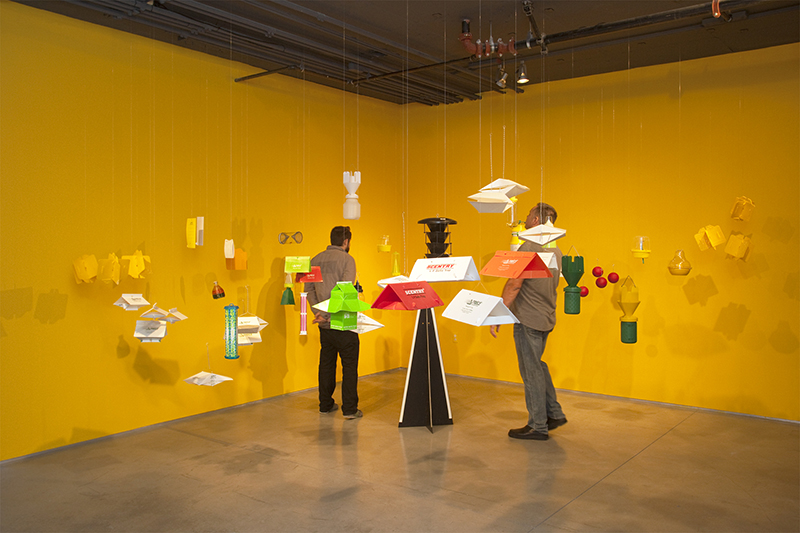 Bagworm, Graperoot Borer, Gypsy Moth, Japanese Beetle, Pepper Weevil, Apple Maggot, Blueberry Maggot, Walnut Husk Fly, Cherry Fruit Fly, Whitefly, Thrip, Flying Aphid, Fungus Gnat, Mushroom Fly, Corn Rootworm, Rose Chafer, San Jose Scale, Squash Vine Borer, Winter Moth, Sweet Potato Weevil, Stink Bug, Elm Bark Beetle, Fruit Fly, Mediterranean Fruit Fly, Medfly, Olive Fruit Fly, Carrot Rust Fly, White Pine Weevil, Pecan Weevil, Plum Curculio, Citrus Weevil, Black Cherry Fruit Fly, Apple Blotch Leafminer, Spruce Budworm, Whitemarked Tussock Moth, European Pine Shoot Moth, Black Cutworm, Armyworm, Beet Army Worm, Cabbage Looper, Nantucket Pinetip Moth, Southwestern Corn Borer, Bumblebees, Tarnished Plant Bug, Eastern Apple Sawfly, Mites, Pink Bollworm, Codling Moth, Redbanded Leafroller, Pecan Nut Casebearer, Blackheaded Fireworm, Bagworm, Oriental Beetle, Indian Meal Moth, Tobacco Budworm, Arthur's Sunflower Moth, Honey Bee, Leek Moth, Lima Bean Pod Borer, Old World Boll Worm, Potato Moth, Tomato Pinworm, Vine Mealybug, Soy Bean Looper
Bagworm, Graperoot Borer, Gypsy Moth, Japanese Beetle, Pepper Weevil, Apple Maggot, Blueberry Maggot, Walnut Husk Fly, Cherry Fruit Fly, Whitefly, Thrip, Flying Aphid, Fungus Gnat, Mushroom Fly, Corn Rootworm, Rose Chafer, San Jose Scale, Squash Vine Borer, Winter Moth, Sweet Potato Weevil, Stink Bug, Elm Bark Beetle, Fruit Fly, Mediterranean Fruit Fly, Medfly, Olive Fruit Fly, Carrot Rust Fly, White Pine Weevil, Pecan Weevil, Plum Curculio, Citrus Weevil, Black Cherry Fruit Fly, Apple Blotch Leafminer, Spruce Budworm, Whitemarked Tussock Moth, European Pine Shoot Moth, Black Cutworm, Armyworm, Beet Army Worm, Cabbage Looper, Nantucket Pinetip Moth, Southwestern Corn Borer, Bumblebees, Tarnished Plant Bug, Eastern Apple Sawfly, Mites, Pink Bollworm, Codling Moth, Redbanded Leafroller, Pecan Nut Casebearer, Blackheaded Fireworm, Bagworm, Oriental Beetle, Indian Meal Moth, Tobacco Budworm, Arthur's Sunflower Moth, Honey Bee, Leek Moth, Lima Bean Pod Borer, Old World Boll Worm, Potato Moth, Tomato Pinworm, Vine Mealybug, Soy Bean Looper
Installation of 69 Insect Traps, Dimensions Variable, 2014
The Nature Collector
ShanghART Gallery Shanghai is pleased to present Robert Zhao Renhui’s exhibition “The Nature Collector”, his first solo presentation in China.
Zhao is an emerging Singaporean visual artist whose practice includes photography, performance, video and installation. Austere and mysterious, his works explore the relationship between humans and the nature, and frequently appropriate on the language and processes of science.
For “The Nature Collector”, he unveils new works themed around the idea of animal traps. Traps are a source of fascination for Zhao, who sees them as elegant physical manifestations of humankind’s knowledge of a particular creature. To best lure an animal into your trap, you need intimate knowledge of that species, as well as its habits, preferences and weaknesses. Zhao’s images of traps, however, are open-ended and unexplained. They are landscapes inviting contemplation, and are possibly, ruses: Is the artist telling the truth? A splash of blue in jungle landscape is simply titled Bee Trap, and what appears to be a photograph of small red balls hanging in trees is called Apple Moth Trap.
Some works take on a hint of menace, touching on ideas of entrapment, punishment and sin. In Eskimo Wolf Trap Often Quoted in Sermons, a bloodied knife is stuck in a bed of snow. Behind, a text describes how a wolf, lured by rabbit’s blood on the knife, will lick the knife, cutting its own tongue, getting more excited by its own blood, till it eventually bleeds to death.
Zhao’s work also explores notions of boundaries, systems and control as human beings attempt to know and catalogue the natural world. In “He counts the stars and calls them all by name”, a large photograph shows 4784 insects meticulously arranged and labelled with information of their provenance. The Biblical reference alludes to a complicated power releations between scientist and subject, human and animal, classifier and classified.
11th Jan 2015 - 18th Feb 2015
Shanghart, Shanghai
 Eskimo Wolf Trap often quoted in sermons
Eskimo Wolf Trap often quoted in sermons
2013, Dimensions variable
Installation of diasec, eskimo knife, polyurethane, 200 kg of sodium bicarbonate
"Eventually, a wolf will approach the knife and begin to cautiously sniff and lick the frozen blood. After believing it is safe, the wolf will lick more aggressively. Soon, the blade of the knife becomes exposed and it begins to nick the wolf’s tongue. Because its tongue has been numbed by the cold of the frozen blood, the wolf is unaware that he is being cut, and the blood it now tastes is its own. Excited at the prospect of fresh, warm blood, the wolf will hungrily lick the blade all the more. In a short time, the wolf will grow dizzy and disoriented. In a matter of hours, it will die from blood loss, literally drinking itself to death. As horrible as this picture is, it illustrates an important truth."
Signature Art Prize, Singapore Art Museum
APB Foundation Signature Art Prize returns for its third edition this year. Recognising the most outstanding contemporary work by both emerging and established artists over the last three years, the prize puts the spotlight on compelling works of visual art from across the Asia-Pacific region. Eskimo Wolf Trap often quoted in sermons is one of the shortlisted 15 finalists.
Selected by a panel of five eminent judges from around the region, the 15 finalists were chosen from a total of 105 nominated artworks from 24 countries and territories. The contemporary artworks represent the very best of the region, and come from 13 diverse countries and territories including Australia, Bangladesh, China, India, Indonesia, Japan, New Zealand, Pakistan, Singapore, South Korea, Taiwan, Thailand and Vietnam. Staying true to contemporary practice, this year’s entries are of an extremely high calibre, collectively showing a real diversity of medium, innovative approach to genre and materials, and strong conceptual ideas. They each address topical issues and collectively shed light not just on the region’s contemporary art landscape but also on concerns and conversations relevant in society today.
Venue : Singapore Art Museum
14 Nov 2014 – 15 Mar 2015
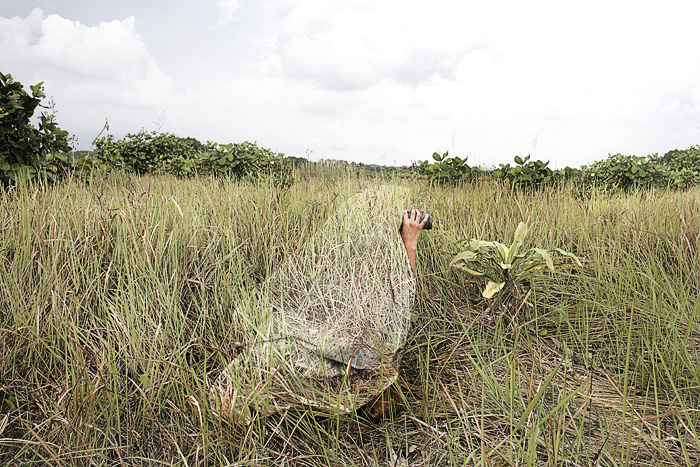 Torijon grasslands, from the series, The Blind, 2007
Torijon grasslands, from the series, The Blind, 2007
Fake & Reality
Robert Zhao Renhui & Ricardo Casas
Anzenberger Gallery
Working at his Institute of Critical Zoologists, the Singapore-based artist Robert Zhao Renhui creates his own universe and a guide to the flora and fauna of this world. It is usually impossible to tell what is reality and what is fake. Then again, our confusion hints at the fact that the typical consumer is just as clueless in everyday life. Is the apple in the supermarket genuine or genetically manipulated? In which ways does man influence nature to make it what we perceive as pleasant and aesthetic?
It is often only a fine line that separates reality from its falsification. Looking at Ricardo Cases’s pictures, for example, we would assume that they are counterfeit: painted pigeons that look like they were created on a computer using Photoshop. The more baffled we are to learn that they are real: a group of pigeon breeders from the area around Valencia, Spain, painted their birds in gaudy colors for a competition.
Exhibition goes from November 7, 2014 to January 31, 2015
Absberggasse 27, 1100 Vienna
Opening hours: Wed-Sat 12 to 6 pm
 Fat polar bear swimming in Hudson Bay, from, A Guide to the Flora and Fauna of the World
Fat polar bear swimming in Hudson Bay, from, A Guide to the Flora and Fauna of the World
Photobook Melbourne
12-22nd Feb 2015
Photobook Melbourne is an artist-run, not for profit organization dedicated to creating a platform for experimental and innovative artistic photography and book making practices. A platform for artists, bookmakers and book lovers to discuss, examine and appreciate marvellous imagery and outstanding storytelling. We will bring together expertise and insight directly from the world’s greatest photographers, graphic designers, curators, publishers & printers. Our aim is to share their knowledge with professional photographers, passionate amateurs and the inquisitive book lover. Initiating conversations about the nature of self publishing, form and function, practice and process.
A Guide to the Flora and Fauna of the World will be exhibiting at the Centre for Contemporary Photography, Melbourne.
Copies of the book available here
Singapore : http://tinyurl.com/mec8gry
Worldwide Shipping : http://tinyurl.com/k6x6g6e
Death in the city
1st November 2014
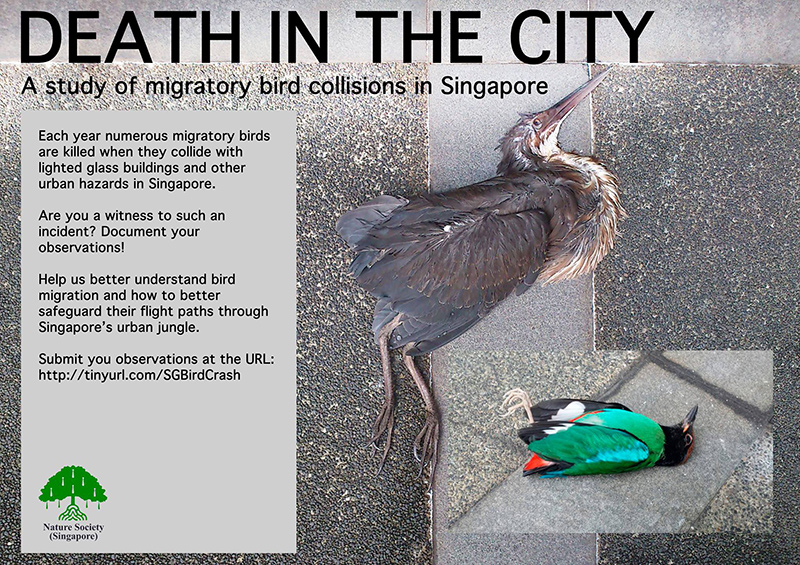 Call for Citizen Science Participation in Singapore.
Call for Citizen Science Participation in Singapore.
Long term bird collision study for Singapore during migratory period between September to November.
For more information, please contact Yong Ding Li at zoothera@yahoo.com
The Possibility of Knowing
2nd June 2014
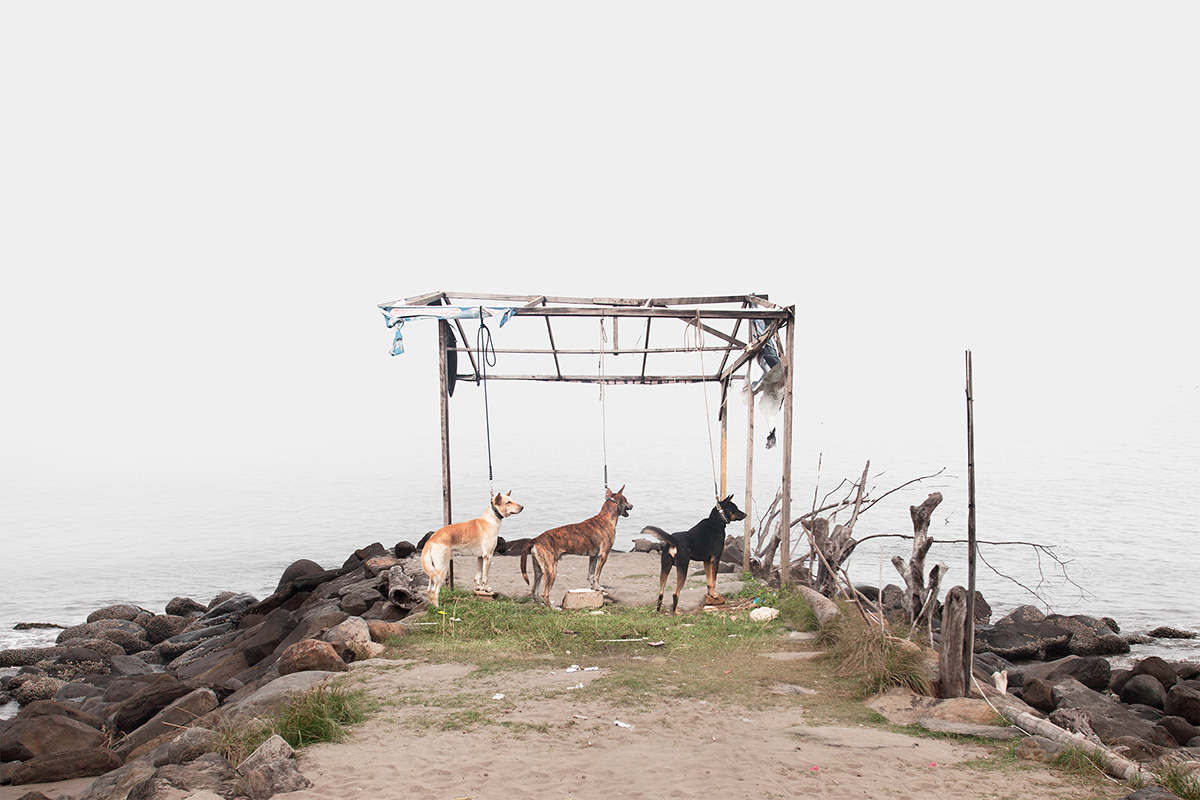 30 years, from the series, The Possibility of Knowing, 2013
30 years, from the series, The Possibility of Knowing, 2013
Photographs and videos of guard dogs restrained and standing at attention, their front limbs propped up with a large stones, on the beach of Padang. Unable to move and looking attentive, the dogs are set in this tensed situation by the seller to ensure the dogs look their best
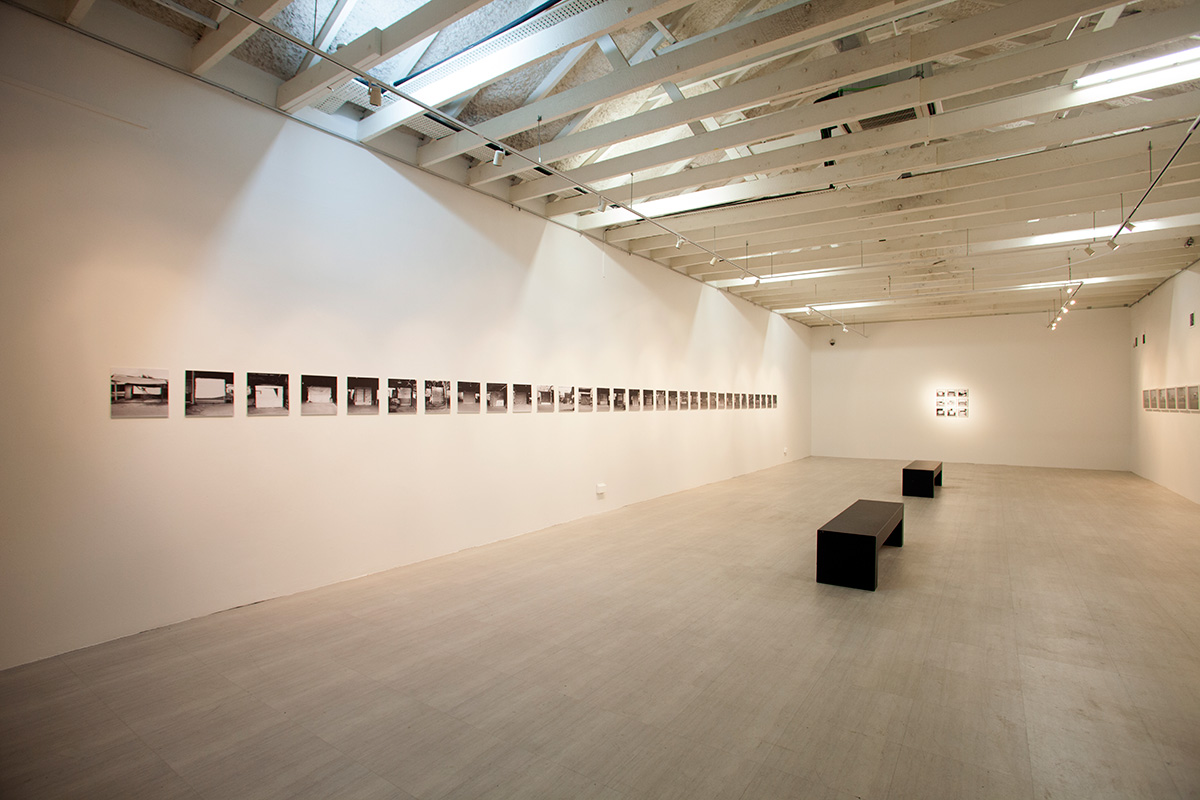 Installation View. The Possibility of Knowing part of the exhibition, Unearthed at the Singapore Art Museum, 2014
Installation View. The Possibility of Knowing part of the exhibition, Unearthed at the Singapore Art Museum, 2014
The Possibility of Knowing
Created during a residency with the Earth Observatory of Singapore, the project looks at Padang, Indonesia. Scientists has predicted a tsunami (the size of a tsunami that hit Aceh, Sumatra) will hit Padang in the next 30 years. The project looks at how the possibilities and impossibilities of knowing a disaster in Padang and what a prediction does to a landscape. The images shows the coasts of Aceh (post disaster) and Padang (pre-disaster).
21st March - 6th July 2014
Singapore Art Museum
A Guide to the Flora and Fauna of the World
1st June 2014
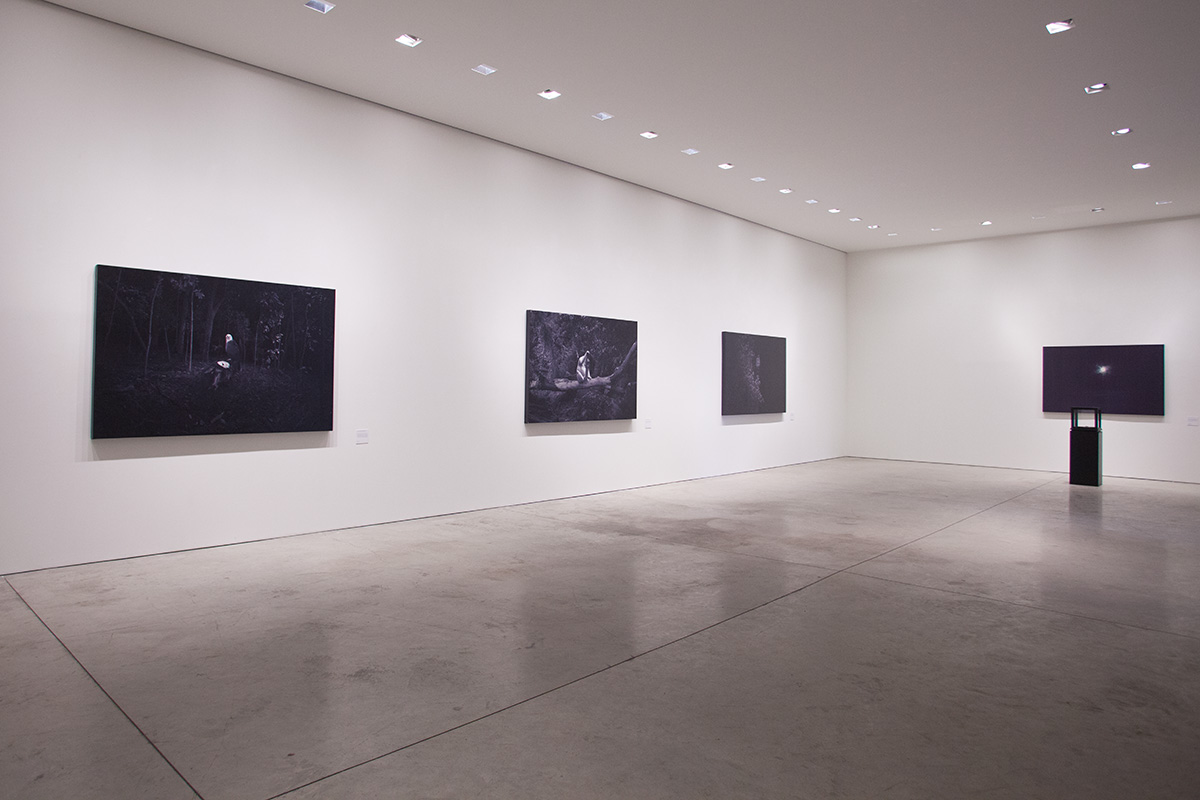 Installation View, A Guide to the Flora and Fauna of the World, Primo Marella Gallery, Milan
Installation View, A Guide to the Flora and Fauna of the World, Primo Marella Gallery, Milan
A Guide to the Flora and Fauna of the World
Solo presentation by Robert Zhao Renhui | Primo Marella Gallery, Milan
"...In this way, A Guide to the Flora and Fauna of the World also questions the limits of these systems of collating, ordering and disseminating knowledge, by blurring the lines between fact and fiction. It oscillates between the modalities of science and art, thereby inviting us to consider the roles of these disciplines in our apprehension and understanding of the world.
Included in the exhibition are new sculptures which extend Zhao’s zoological investigations. In Nepenthes sg. rh, a plant that was discovered in 1897 by Kimiya Yui in Singapore, known only be a pencil sketch by the botanist. The plant is an undescribed tropical pitcher plant known from a single tree in Singapore and has never be seen again. Zhao created a sculpture from Yui’s sketch. This is an ongoing series of work where the artist looks for species that were discovered but never seen again. Other exhibits include Unbreakable Egg, an egg that has been genetically modified with a plant’s gene to prevent it from breaking, resulting in an egg that has a wood like texture. Moondust (Journeys to the moon) is a collection of insect ash the artist painstakingly collects from street lamps. The ash is the remains of insects being trapped in the street lamps and being burnt by the heat of the lamp over a long period of time..."
Limited copies of A Guide to the Flora and Fauna of the World available at the gallery
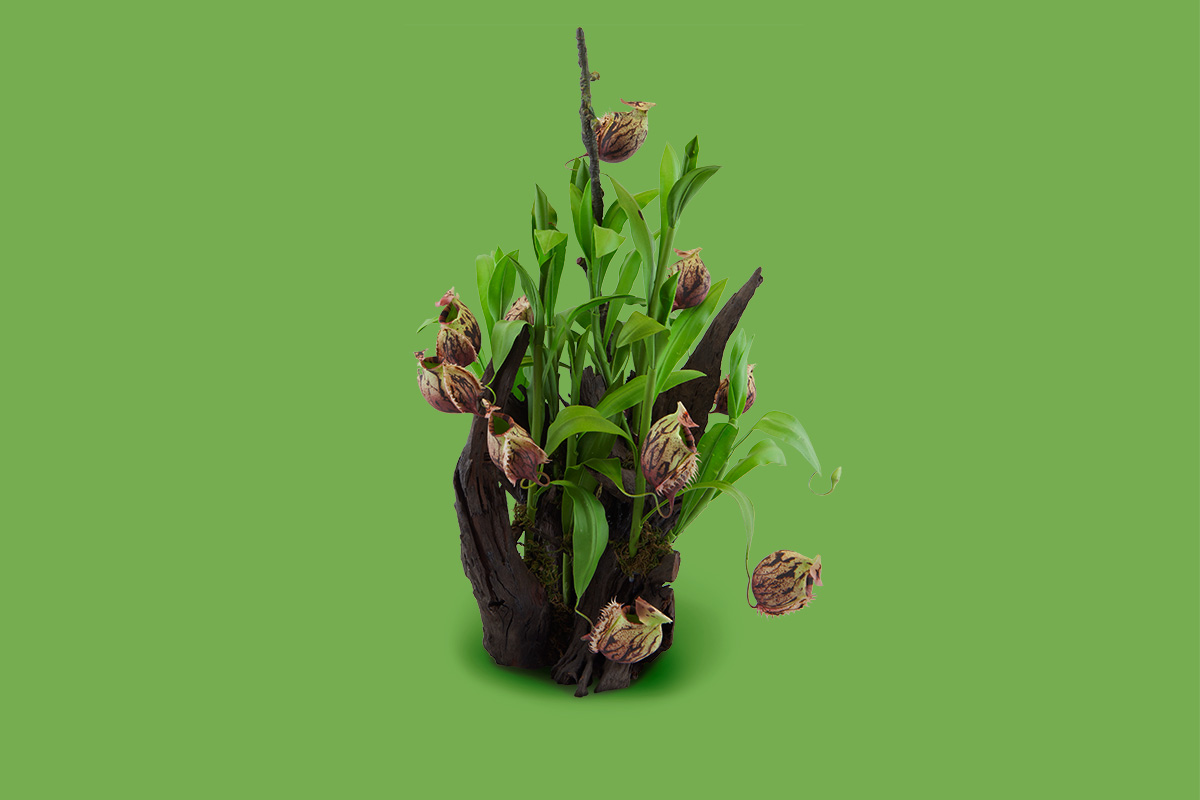 Nepenthes sg. rh Yui, 2014
Nepenthes sg. rh Yui, 2014
Nepenthes sg. rh Yui is an undescribed tropical pitcher plant known from a single tree in Singapore. It shows similarities to N. burkei. The species was originally discovered in April 1897 by Kimiya Yui and has never be seen again. The species is only known by a pencil sketch created by Yui.
21st May 2014 - 31st June 2014
Mondays to Fridays : 10am - 630pm
Via Valtellina angolo Viale Stelvio, 66
20159 Milano - Italy
tel +39 0287384885
info@primomarellagallery.com
Exhibitions May - July
 Fake beef, from the series A Guide to the Flora and Fauna of the World, 2013
Fake beef, from the series A Guide to the Flora and Fauna of the World, 2013
A Time For Dreams
Moscow International Biennale of Young Art | Curated by David Elliot
The Moscow International Biennale for Young Art, one of the largest and most ambitious projects in the field of contemporary art, will be take place this summer for the fourth time. The Biennale combines the creative initiatives of artists of the new generation from Russia and abroad. Leading Moscow museums and centers of contemporary art, in collaboration with regional and foreign partners, have participated in the preparations for this event.
For this fourth edition of the International Biennale for Young Art in Moscow David Elliott has chosen the title 'A Time for Dreams' in acknowledgement of the chronic precariousness of our own times and the urgent need for the dreams and visions of younger and future generations to break the barrier of ‘things as they are’ to make things better.
A selection of A Guide to the Flora and Fauna of the World will be on exhibition.
26 June 2014 — 10 August 2014
The Museum of Moscow
 Fluorescent zebrafish, from the series A Guide to the Flora and Fauna of the World, 2013
Fluorescent zebrafish, from the series A Guide to the Flora and Fauna of the World, 2013
Grand Prix Fotofestiwal
Lodz, Poland
Grand Prix Fotofestiwal is a competition organized every year, during which the festival awards the prizes to those artists who present cohesive ideas, brave visions as well as excellent photographic technique and who use the photographic language in a conscious manner.
Fotofestiwal was born in 2001 as one of the first photography events in Poland. Since then, both photography and the ways of organising cultural events have changed. Fotofestiwal has always been up to date with these changes. It is intended as a space for various forms of photography and a forum for discussion on art and society, but also as a search for alternative methods of talking about photography and presenting it.
A selection of A Guide to the Flora and Fauna of the World's images will be included in the exhibition.
Venue : ART_INKUBATOR, Tymienieckiego 3
Opening, 5th June 2014 (Thu): 7.00 pm – 10.00 pm
5th - 15th June 2014 (Fri-Sun): 12.00 pm – 8.00 pm
___
Truth, Facts, Fictions, Lies | PhotoIreland Festival
"We seek, produce, use, and consume all kind of images in our everyday. Whether in the private or the public sphere, we need them for sharing and obtaining details regarding experiences, news, and events. They serve to illustrate ideas that in turn endorse or contest other ideas. With these images, through storytelling, we shape public opinion and enjoy a shared sense of what is true, what is real. The way we understand our reality then is through these fragmented stories that we tell ourselves. Some of them may be accepted as truths, some others understood as mere myths, legends, hoaxes, or lies. It is all about storytelling. - PhotoIreland"
The book, A Guide to the Flora and Fauna of the World, will be included in the main exhibition.
Copies of the book available here
Singapore : http://tinyurl.com/mec8gry
Worldwide Shipping : http://tinyurl.com/k6x6g6e
1st - 31st July 2014
___

Mapping Asia Exhibition | Asia Art Archive, Hong Kong
"How we define ‘Asia’ at Asia Art Archive is the question we are most frequently asked. Acknowledging both the value and limitations of the map as a tool, this project practices a mapping of Asia that does not exclusively depend on the map as artifact, but as something that lives and continues to unfold. We share with you some of the threads and (to borrow a geological term) hot spots that are currently shaping our notion of Asia."
Pages from, A Guide to the Flora and Fauna of the World, are included in the exhibition.
April - September 2014
http://www.e-flux.com/announcements/mapping-asia/
___
 Installation View, Selection of Animal Traps from the Institute of Critical Zoologists, 'Unearthed' exhibition. Singapore Art Museum
Installation View, Selection of Animal Traps from the Institute of Critical Zoologists, 'Unearthed' exhibition. Singapore Art Museum
Unearthed | Singapore Art Museum
The Singapore Art Museum (SAM) is proud to present its first exhibition of the year, UNEARTHED, which seeks to investigate artists’ views on the natural world and invites viewers to contemplate their relationships with the natural environment. This examination of earthly experiences, through contemporary art, exemplifies SAM’s new direction of encompassing projects that present art intersecting with various disciplines and modalities. This is also SAM’s inaugural exhibition as a corporatised entity under the Ministry of Culture, Community and Youth’s Visual Arts Cluster.
A selection of animal traps from The Institute of Critical Zoologists is showing in this exhibition.
More information of the work here.
21st March 2014 - 6th July 2014
http://www.e-flux.com/announcements/unearthed/
The Last Thing You See
15th November 2013
 Oriental Honey Buzzard attaching a hornet's nest, 2013
Oriental Honey Buzzard attaching a hornet's nest, 2013
150cm x 100cm each, Diptych, Diasec
From the series, How to eat bees?
The Last Thing You See
Recent works by Robert Zhao Renhui
Saturday 16 November 2013 — Sunday 5th January 2014
2902 Gallery
Some birds talk without making a sound.
Bees favour blue.
A spider web is a flower.
Traps are everywhere.
The Last Thing You See explores the limit of visibility and knowledge in the natural world. (more info)
Gallery open:
Tues - Sat : 12:00 pm - 7:00 pm
Sun : 1:00 pm - 5:00 pm
Closed on Mondays and Public Holidays
222 Queen Street
#02-02
Singapore 188550
T: +65 6339 8655
Facebook : 2902 Gallery
Installation View
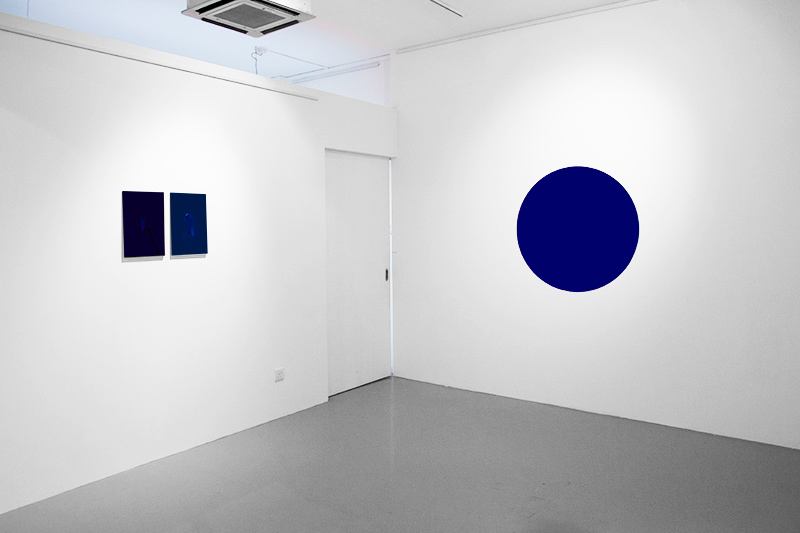
A Guide to the Flora and Fauna of the World | Singapore Biennale 2013
22nd October 2013
 World Goldfish Queen, from the series A Guide to the Flora and Fauna of the World, 2013
World Goldfish Queen, from the series A Guide to the Flora and Fauna of the World, 2013
A Guide to the Flora and Fauna of the World
Singapore Biennale 2013
Friday 25 October 2013 — Sunday 16 February 2014
10:00 am – 7:00 pm daily (last admission at 6.15pm)
The Peranakan Museum, Level 3
39 Armenian Street , Singapore 179941
All living things are constantly changing and evolving, adapting to cope with and respond to the various pressures that they face, such as predators, competition and environmental change. More recently, the human species has emerged as the single main perpetrator of the various pressures that threaten the survival of other life forms. A Guide to the Flora and Fauna of the World is an attempt to document the ways in which humankind has altered this planet, and continues to do so. A Guide to the Flora and Fauna of the world is a project initiated by artist Robert Zhao Renhui.
"...Responding to the title of the Singapore Biennale 2013, “If The World Changed”, Zhao has created an installation titled A Guide to the Flora and Fauna of the World, which seeks to document and reflect on the myriad ways in which human action and intervention are slowly altering the natural world. Based on the evolutionary premise that all living things constantly change and adapt to cope with and respond to their changing environments (or risk extinction), Zhao’s Guide presents a catalogue of curious creatures and life-forms that have evolved in often unexpected ways to cope with the stresses and pressures of a changed world. Other organisms documented in the installation are the results of human intervention, mutations engineered to serve various interests and purposes ranging from scientific research to the desire for ornamentation.
Several specimens in this installation are based on fact; others are works of fiction. The line between these two is often an indistinct one, as scientific advances within the last half-century have made possible what was previously believed to be impossible. While drawing on the encyclopaedic tradition, which is premised on the basic human desire to catalogue and to order knowledge so as to better understand – and command - the world, Zhao’s Guide also questions the limits of these systems of collating, ordering and disseminating knowledge, by blurring the lines between fact and fiction, and oscillating between the modalities of science and art, thereby inviting us to consider the roles of these disciplines in our apprehension and understanding of the world." - Curator, Tan Siu Li
An installation of objects and photographs will be presented at The Perankan Museum.
The project is a Singapore Biennale 2013 Commission.
Facebook
http://www.singaporebiennale.org/?page=artist_bio&artist=52
http://criticalzoologists.org/guide/exhibition.html
 Installation view, A Guide to the Flora and Fauna of the World.
Installation view, A Guide to the Flora and Fauna of the World.
Installation of 26 diasecs, moon dust, robotic cockroach, banana plant bonsai, man-made grapes,
European tiger mosquitoes, man-made eggs, medicinal eggs, unbreakable egg and long-life peanut
A poster, 84cm x 59cm, designed by H55 also accompanies the installation.
Limited copies available through out the course of the Biennale. Supported by AlsoDominie
Book Launch
Sunday, 27 Oct | 6pm - 7pm Singapore Art Museum, Glass Hall
https://www.facebook.com/events/679667592051111/
Robert Zhao Renhui will launch his book, A Guide to the Flora and Fauna of the World, in conjunction with his artwork at the Singapore Biennale 2013. The book contains 55 photographs and documents pertaining to the project and a unique opportunity to view the work through the artist's perspective.
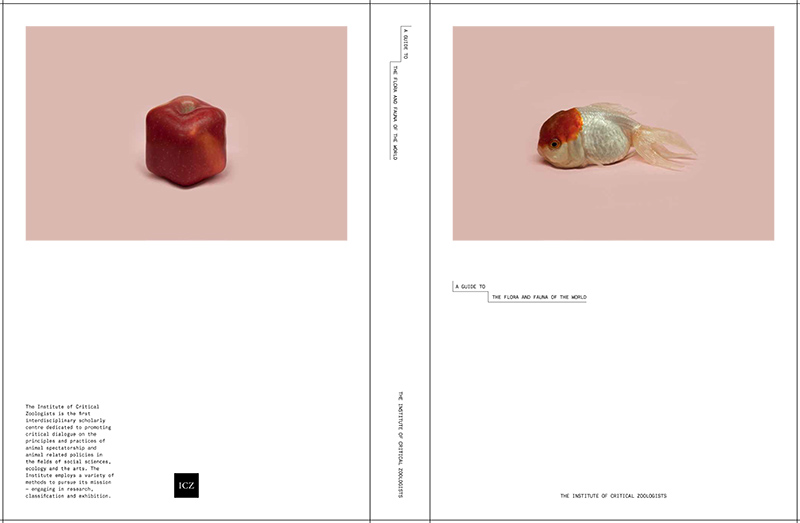 Designed by H55 in Singapore
Designed by H55 in Singapore
2013
Edition of 500
55 plates with documents and booklets contained in a hand crafted archival box
34cm x 24cm x 4cm
Individually signed with a 21cm x 14.8cm artist issued print certificate
Singapore Art Museum | President's Young Talents
28th Jan 2013
 A vision of the universe, from the series The Quieting and The Alarming, 2013
A vision of the universe, from the series The Quieting and The Alarming, 2013
250cm x 150cm x 60cm
Diasec, Standing frame
The Quieting and The Alarming
Thursday 24 January — Sunday 15 September 2013
Credit Suisse: Innovation In Art Series
Part of the President's Young Talents Exhibition
Singapore Art Museum
This project looks at the current status of the wild boar situation in Singapore. Without a natural predator, the population of wild boars here has exploded in the last few years. Wild boars are known to cause severe damage to the forest floor and the damage is very visible today in our central catchment nature reserves. The government has started to cull wild boars (one of the first to be culled was in June 2012 when a rogue boar attacked a boy) but this move was met with resistance from animal interest groups. Much of the debate hinged on ethical questions and the fear of upsetting a natural balance we did not yet fully understand. (..more)
Gallery open:
Mon - Thu: 10:00 am - 7:00 pm
Fri: 10:00 am - 9:00 pm
Sat - Sun: 10:00 am - 7:00 pm
71 Bras Basah Road , Singapore, Singapore 189555
Tel: +65 6332 3222
www.singaporeartmuseum.sg/exhibitions/details.php?id=109
The Glacier Study Group | Engaging Perspectives - New Art From Singapore
Eskimo wolf trap often quoted in sermons
2013, Dimensions variable
Installation of diasec, eskimo knife, polyurethane, 200 kg of sodium bicarbonate
"Eventually, a wolf will approach the knife and begin to cautiously sniff and lick the frozen blood. After believing it is safe, the wolf will lick more aggressively. Soon, the blade of the knife becomes exposed and it begins to nick the wolf’s tongue. Because its tongue has been numbed by the cold of the frozen blood, the wolf is unaware that he is being cut, and the blood it now tastes is its own. Excited at the prospect of fresh, warm blood, the wolf will hungrily lick the blade all the more. In a short time, the wolf will grow dizzy and disoriented. In a matter of hours, it will die from blood loss, literally drinking itself to death. As horrible as this picture is, it illustrates an important truth."
Group Exhibition | Curated by Eugene Tan
Saturday 26 January — Sunday 31 March 2013
Organised by Centre of Contemporary Art - NTU Singapore
Engaging Perspectives:New Art from Singapore will present works that engage with multifaced perspectives about Singapore by a generation of artists born in the 1980s and currently working in Singapore.
Gallery open:
Tues - Sun : 11:00 am - 8:00 pm
Closed on Mondays and public holidays
Block 38, #01-07, Malan Road, Singapore
Gillman Barracks
http://www.gillmanbarracks.com/galleries-details.php?e=108
Chapter Gallery | Wales
28th April 2012
 Blind Long-tailed Owl, Desert Variant of Little Owl from the series, As Walked on Water, 2011
Blind Long-tailed Owl, Desert Variant of Little Owl from the series, As Walked on Water, 2011
Installation of vinyl print, 280cm x 194cm
The Institute of Critical Zoologists
Friday 27 April — Sunday 17 June 2012
Chapter Arts Center
Cardiff, Wales, United Kingdom
"The Blind Long-tailed Owl (2011), ‘watches’ over us at both the beginning and end of the exhibition - This owl has evolved a sight-sheltering plumage to cope with the desert conditions it has been forced into, due to de-forestation. This bird becomes a totem; it’s visual impairment /adaptation alludes to the limitations of the human regard for animals and suggests a change of perspective and abandoning of our assumptions about reality." (..more)
Chapter Gallery has worked in collaboration with the The Institute of Critical Zoologists (ICZ) to present its first UK survey exhibition that interrogates the boundaries between the seen and the unseen. exploring methods of allegorical representation and interpretation. This exhibition brings together commissioned projects by Zhao Renhui (an artist who works closely with the ICZ) and extracts from the Institute’s museum collection.
In March 2012, Zhao Renhui undertook a residency at the National Museum Cardiff that has informed part of the research for this exhibition. An installation by the artist is open in the Natural History Galleries at the Museum between 13 March and 17 June 2012. This exhibition is curated by Lauren Jury and Helen Warburton.
For more information about the exhibition, press images or to arrange an interview with the artist please contact Lauren Jury on 029 2031 1050 or email visual.arts@chapter.org
With assistance from Coutts Charitable Trust
Supported by The Singapore International Foundation
Gallery open:
Tuesday — Saturday 10am–8pm
Sunday 2pm–8pm
Closed Monday
Admission free Chapter Gallery, Chapter, Market Road, Cardiff CF5 1QE,
UK +44 (0)29 2031 1050
Some Kind Of Expedition
4th Jan 2012
Expedition #10, From the series The Glacier Study Group (criticalzoologists.org/gsg)
121cm x 84cm, Archival Piezographic Print
Renhui Zhao
Some Kind Of Expedition
Presented by 2902 Gallery
Art Stage, Booth B1-08
12th-15th Jan. 2012
Marina Bay Sands, Singapore
"The search for wildlife is also the search for authenticity and for the truth. It can be religious. We constantly
seek to impose meaning onto our relationship to the natural world." Zhao Renhui & Satoshi Kataoka (..more)
Working closely with The Institute of Critical Zoologists for the last five years, Zhao Renhui has been cataloguing,
classifying and creating photographs and objects around the scientific institution.
www.criticalzoologists.org/expedition
Zhao Renhui will also be presenting To be washed ashore on a deserted island with an animal on the horizon in the Singapore Showcase at Art Stage (Booth C7-01) in an exhibition curated by Dr. Charles Merewether , Island Allegories. A selection of some of The Institute of Critical Zoologists's projects carried out in Singapore between 2002-2011 will be presented in the exhibition. (..more)
www.criticalzoologists.org/horizon
Catalogue

A limited edition catalogue will also be available during the opening of the exhibition.
Essay by Zhao Renhui and Satoshi Kataoka.
The catalogue includes a special reprinted poster of important landmarked expeditions by the ICZ since 2001.
To order a copy please contact info@criticalzoologists.org with the subject header "Some Kind Of Expedition Catalogue"
Retail Price : £25 (Before Shipping)
SBN: 978-981-07-1212-9
Event
Supported By
The National Arts Council Singapore

A realised dream, Experiment #2, 2011
A Bird In The Hand
3rd July 2011
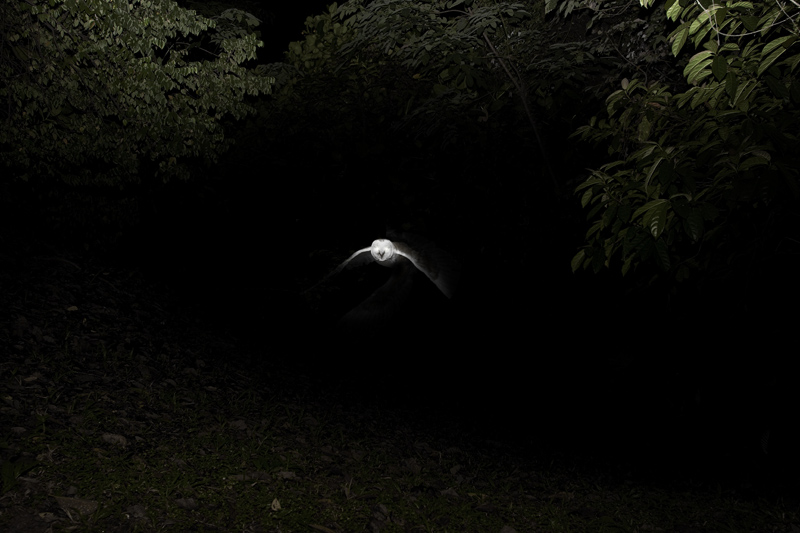
Minute Owl, from the series, Pulau Pejantan, 2009
121cm x 84cm, Archival Piezographic Print
Renhui Zhao
A Bird in the Hand
14 July – 3 September 2011
Private view 13 July 2011 (Wednesday), 6 – 8pm
Arts Gallery, University of the Arts London, 272 High Holborn, WC1V 7EY
"The work to follow is an exploration of these complexities and reminds us that birds occupy a large and central part of that universe that human beings constantly carve out of nature." Ding Li
“In contemporary society birds are, perhaps, both the most watched and most eaten animal on our planet. They have become a focal point of debates about a 'proper' relationship between humankind and nature, and about definitions of humanity itself.” Naoko Noguchi
Against the very real environmental drama unfolding across the globe, multidisciplinary artist Renhui Zhao presents the exhibition A Bird in the Hand. The exhibition invites viewers to step into the The Institute of Critical Zoologists (ICZ), a multilayered conceit that operates across an array of levels
Opening at the Arts Gallery on 14 July, the show is presented from the perspective of the ICZ and its team of scientists who pose the question: what is our relationship with nature?
Zhao creates elaborate scenarios or alternate realities to interrogate questions of art and artifice, credence and fantasy, and the borders of reality. Offering a retrospective of the Institute’s research, the show features a display of genuine artifacts with a collection of photographs from the ICZ.
"How do we celebrate 150 years of birdwatching?" Kimiya Yui
On show will be compelling objects and photographs from The ICZ’s extensive global research, including rare taxidermy birds from a species which have evolved to permanently close their eyes to protect them from the dust of drying landscapes, and The Institute’s own revolutionary “invisible” camouflage cloaks for watching animals.
The exhibition will also reveal artefacts from the Institute’s Tokyo museum including indigenous Philippine bird traps and documents of “miraculous” eggshells containing baby fish, alongside revelatory items from the Institute’s archive of wildlife smuggling methods in the form of specially designed smuggling undergarments retrieved by customs.
www.criticalzoologists.org/abirdinthehand
Catalogue
A limited edition catalogue will also be available during the opening of the exhibition.
Essays by Naoko Noguchi, Director of Social Programs, Ding Li, Expert in Bird Ecology and Kimiya Yui.
The catalogue includes a special reprinted poster of Norishige Kanai's celebrated 'Looking at birds' (1957).
To order a copy please contact info@criticalzoologists.org with the subject header "A Bird In The Hand Catologue"

Supported By

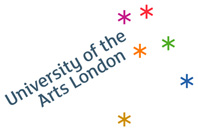
A heartwarming feeling
20th November 2010
#121, after 321 days, Pin-hole camera by Okuro Oikawa.
Actual size : 1.1cmx 0.7cm
"On January 2008, I collaborated with the Yamshina Institute for Ornithology (a regional expert in bird banding) in an attempt to document this phenomenon during an artist residency. A group of a few thousand migratory birds were banded by the Institute over the course of two months. Besides banding the birds with a metal band on their legs, I included a small pin-hole camera near each band. Inside each camera was a very small sheet of positive photographic paper of extremely low sensitivity. The pin-hole exposed the image directly onto the paper, and allows for a positive image to be formed as long as there was light going through the pin-hole. The thousands of little pin-hole cameras were made with the help of a group of local school children.
On June 2010, 50 of the birds were dead found in the Arctic Circle. 30 of the birds still had their cameras intact and 12 of the cameras actually created an image of the bird's rather confused migratory journey to the Arctic. "
Zhao Renhui on A heartwarming feeling
Climate change has significant impact on birds. It can alter distribution, abundance and behavior. It can also affect events like bird migration.
Migration times are shifting and birds which are slow to change fail to migrate altogether.
We still know very little of how birds navigate and migrate over long distances. A recent phenomenon in the Arctic Circle is the emergence of mass bird graves. It seems as if different species of migrating birds due for the south has been flying the opposite direction, in an apparent act of suicide. Very little research has been done on this phenomenon.
Scientists argue that global warming might be a cause of this but has yet to show evidence of how this might be linked. One popular theory says that the melting of the ice caps might have affected the earth's magnetic field, something which the birds might have been using for navigation. Many critics dispute this claim and scientists are still looking for an explanation for this phenomenon.
www.criticalzoologists.org/heartwarming
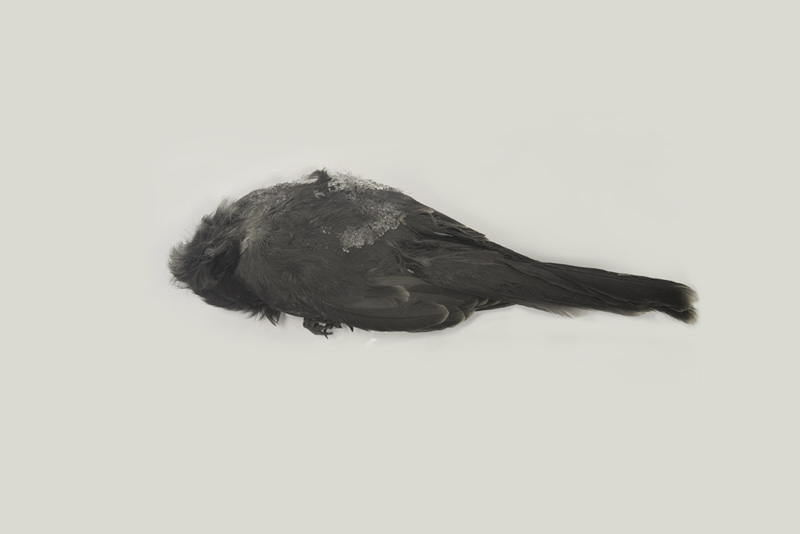 #243, after 321 days.
#243, after 321 days.
A bird that was carrying a small pin-hole camera (1.21cm x 0.7cm) made by Tomimaru Okuni tied to its feet while the bird was in Japan. The bird and the camera were later retrieved from the Arctic Circlc after 321 days.
The whiteness of a whale
3rd October 2010
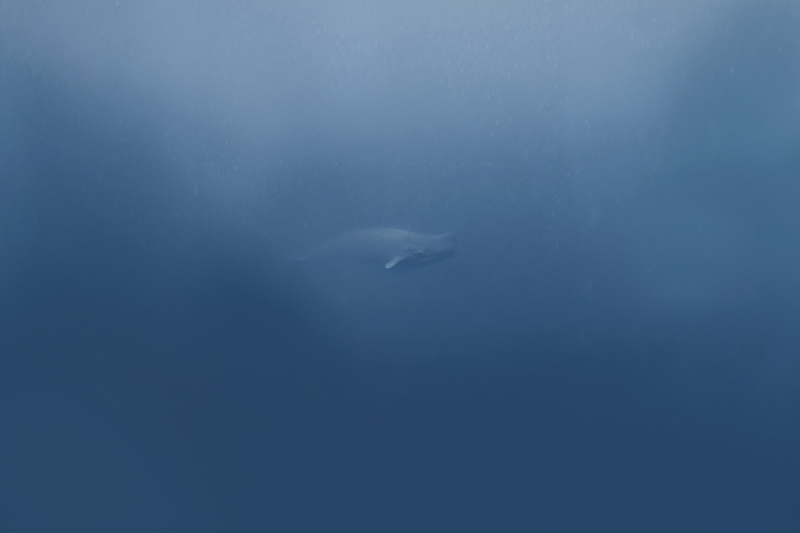 The white whale swimming in the ocean depths off the coast of Omishima, circa 1985
The white whale swimming in the ocean depths off the coast of Omishima, circa 1985
This is thought to be the only existing image of the white whale, a mysterious creature that had once held the Japanese village of Omishima in thrall. One of the oldest villagers alive, a man called Mr Kazuhiro Nagashima, said that his people had once placed an effigy of the whale in the sea off the coast of Omishima, and it probably still remains there today.
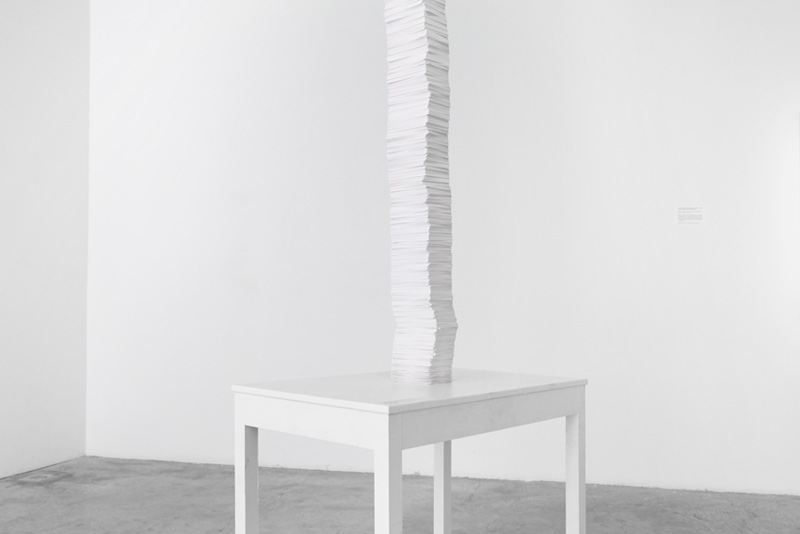 All the Antarctic Minke Whales in the world in 1984
All the Antarctic Minke Whales in the world in 1984
400,500 photographs.15 x 10cm, white table.
The title of this project is taken from an earlier work undertaken by Satoshi Kataoka to research and compile the numerous white whale sightings by The Whale People of Omishima between 1937 to 2008.
During a residency at Fukuoka Asian Art Museum, Zhao Renhui was able to research the archives and interview the last remaining descendant of The Whale People. During the residency, he produced a series of documents and images for The Institute of Critical Zoologists discussing the political and cultural representations of this group of people.
This project is a compilation of their research, documents and interviews, produced in collaboration with The Institute of Critical Zoologists. It offers a unique perspective into the unwritten history of The Whale People of Omishima.
A booklet has also been produced for the project and is available through our website.
For more details, please email info@criticalzoologists.org.
www.criticalzoologists.org/whiteness
The 26th Phylliidae Convention, Tokyo
9th September 2010
 Hiroshi Abe at the 8th Phylliidae Convention with Phyllium S. when he first entered the competition in 1991.
Hiroshi Abe at the 8th Phylliidae Convention with Phyllium S. when he first entered the competition in 1991.
A special edition of the Phylliidae Study Journal has been created for last year's Phylliidae Convention.
Selected articles are available for viewing.
The Phylliidae Study Group from The Institute of Critical Zoologists has been studying camouflage insects for more than 50 years. The group holds regular meetings and presents displays at all the major entomological exhibitions in the world. The organisation places emphasis on study by rearing and captive breeding and has a panel of breeders who distribute livestock of different cultures to other members.
www.criticalzoologists.org/psg
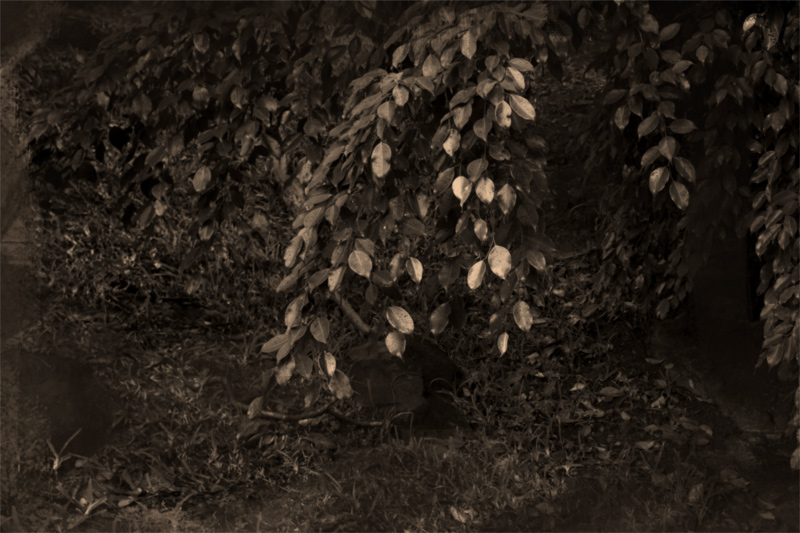 A Living Leaf - ‘As the wind travels through the foliage, the leaves move to their own life.’
A Living Leaf - ‘As the wind travels through the foliage, the leaves move to their own life.’
Japanese daguerreotype, 1861, 12.9cm x 18.9cm. Meiji Era.
Collection of the Royal family, and now in the Royal Science Museum in Kobe, Japan.
Masahiro Koishikawa proposes that this Japanese daguerreotype (an old photograph) from 1861 is one of the very first depictions of a leaf insect in the modern world.
Matsuo Sugano presents Gather
In 2006, Zhao Renhui and Matsuo Sugano embarked on a project to work with the archives of the Institute of Critical Zoologists. During the project, Matsuo Sugano kept an online journal of his experience while working with the ICZ's archive. A selection of which has been made available here.
Gather is a two year collaboration project between Zhao Renhui and Matsuo Sugano.
www.criticalzoologists.org/gather
The Institute of Critical Zoologists presents The whiteness of a whale
21st July 2010
 The white whale swimming in the ocean depths off the coast of Omishima, circa 1985
The white whale swimming in the ocean depths off the coast of Omishima, circa 1985
152x110cm
Archival Piezographic Print on Aluminium
This is thought to be the only existing image of the white whale, a mysterious creature that had once held the Japanese village of Omishima in thrall. One of the oldest villagers alive, a man called Mr Kazuhiro Nagashima, said that his people had once placed an effigy of the whale in the sea off the coast of Omishima, and it probably still remains there today.
Zhao Renhui & Satoshi Kataoka
A project with The Institute of Critical Zoologists
About the exhibition
Residents of the Southern Japanese seaside village Omishima are often called “The Whale People”, or kujira no hitobito, people who live among whales. They got their name because of their obsessive and bizarre worship of whales and all things whale-related.
In 1937, something happened that seized the entire village's imagination: a monk reported a sighting of a white whale along the village coast. Thus the search for the white whale began. The villagers raised funds to build a massive underwater tower in the middle of the ocean, which took more than ten years to complete. They had to cross a five-mile bridge on foot to reach the tower, all in the hopes of catching a glimpse of the white whale if returned.
In 1960, a boat with an iconic white whale’s tail was built to carry out more search expeditions for the
white whale. The boat had an underwater viewing chamber which, on a clear day, allowed the villagers
to see up to 5 miles through the ocean depths.
Today, few residents remember this way of life, although the watch tower and the boat are still around.
A few still continue the search for the white whale
Opening reception, 27 July 2010, Tuesday, 7pm
Jendela (Visual Arts Space) Level 2, Esplanade Mall, Singapore
Refreshments will be provided.
RSVP by 25 July 2010, Sun, to shihan@2902gallery.com or call 6339 8655
28 July 2010 - 1 Aug 2010 (Tue - Sun)
11am - 8.30pm (Mon - Fri)
10am - 8.30pm (Sat & Sun)
Jendela (Visual Arts Space)
Level 2, Esplanade Mall
1 Esplanade Drive
Singapore 038981
3 Aug 2010 - 22 Aug 2010
11am - 8pm (Tues - Sat)
1pm - 6pm (Sun)
Closed on Monday and Public Holidays
2902 Gallery
Old School, 11b Mount Sophia
#B2-09, Singapore 228466

All the Antarctic Minke Whales in the world in 1984, computer analytical image from Godvision II
152cm x 110cm in 24 parts
Archival Piezographic Print on Aluminium
Cetacean researchers are obsessed with the total global population of whales. Images from
expeditions are compiled and fed into a program called Godvision to calculate each
species’ population and distribution. In 1984, the program calculated the world’s population
of Antarctic Minke Whales to be 400,500.
Image courtesy of The Institute of Critical Zoologists
 Temple of the whales #2, Omishima, 2005
Temple of the whales #2, Omishima, 2005
121 cm x 84 cm
Archival Piezographic Print on Aluminium
The Institute of Critical Zoologists presents A Guide to the Common Flora and Fauna of the World
4th January 2010
 Left : Australian Customs Service
Left : Australian Customs Service
Right : Artist's Book, A Guide To The Common Flora and Fauna of the World
“We have just successfully smuggled a very endangered gecko through the mail. Or almost.”
A Guide to the Common Flora and Fauna of the World is inspired by a real-life smuggling case where 15 endangered geckos were concealed in hollowed-out books and transported out of Australia, only to be intercepted by the country's customs. Using the mail route for smuggling has been one of the most effective and preferred methods to evade international customs, and wildlife activists have often criticised the loopholes in enforcement in this area.
For the M1 Singapore Fringe Festival 2010, The Institute of Critical Zoologists (ICZ) sent similar books containing replicas of the gecko and apparatus giving the impression of hidden life within these packages, from various countries back to Singapore. Part of this exhibition showcases the returned contents and documentation of any procedures and correspondence pertaining to the “trafficking”. Through this, the Institute explores the human/animal relationship through wildlife trafficking, by actively engaging the laws prohibiting that in various countries.
Dr Yong's Archive
Between 1995 and 2006, Prof Yong worked at the ICZ as a curator of reptiles. His primary research area was in genomics and morphology genetics of reptiles. One of his greatest successes was the creation of ‘albino tortoises’. He often cited a 1981 National Geographic article as inspiration for his research. The article was about the first albino python which was successfully bred in Bangkok. The article also inspired many other people to collect and breed reptiles, thus giving birth to a new industry of reptile collection through out the world.
Prof Yong also became a legend in the wildlife smuggling circuit. During a routine archival digitization exercise, the ICZ discovered his archive of books, photographs, documents and research on wildlife smuggling. He had devised hundreds of ways to smuggle reptiles. To the most high-profile smugglers of the world, he was called the bookman, for his ingenious use of tomes to hide animals.
Our story of Dr. Yong's archive begins with the discovery of the world's largest encyclopedia, "A Guide To The Common Flora And Fauna Of The World" to be exhibited for the first time. Also in the exhibition are rare documentations and photographs of his experimentation in wildlife smuggling and his work on the genetic morphology of reptiles. Coinciding with the 14th anniversary of the ICZ, A Guide To The Common Flora And Fauna Of The World is an exhibition in the Jendela Gallery, Esplanade (Singapore) that explores a controversial chapter of the human/animal relationship.
A Guide to the Common Flora and Fauna of the World is presented and commissioned by M1 Singapore Fringe Festival Singapore 2010 & The Institute of Critical Zoologists, Japan.
Special thanks to Dr. Agata Marzec (Estonia), Tristan C (Finland), Dr. Jessica S.F (New York), Dr. Ferran Izquierdo (Barcelona), Ang S.N (London), Dr. Eiffel Chong T.Chin (Malaysia), Z.Y Wong (Beijing), Miriam Seto (Hong Kong), Dr. Agung Nugroho W (Yogyakarta), Dr. Nicholas W (Brisbane) & Zuzana Golierova (Bratislava) for their kind assistance and time for making this exhibition possible.
M1 Fringe Festival 2010, Art & The Law
7th - 24th January 2010
11am - 8.30pm (Mon - Fri)
10am - 8.30pm (Sat & Sun)
Esplanade - Jendela (Visual Arts Space) Singapore
Silent opening, Thursday, 7th Janaury, 7.30pm - 8.30pm.
Representatives from the institute will be present in the gallery during the silent opening.
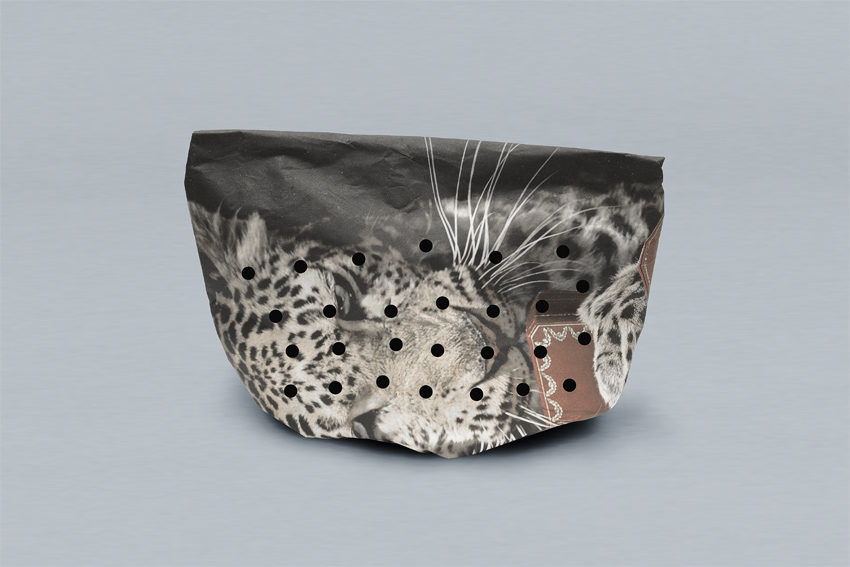 Birds
Birds
121 cm x 84 cm
Archival Piezographic Print
Courtesy of The Institute of Critical Zoologists. (Dr. Yong's Archive)
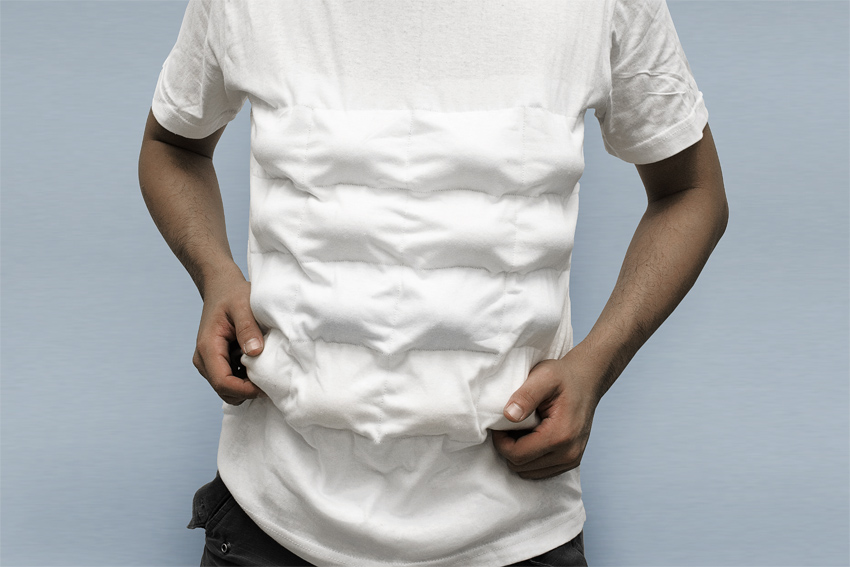 52 cockatoo and macaw eggs
52 cockatoo and macaw eggs
121 cm x 84 cm
Archival Piezographic Print
Courtesy of The Institute of Critical Zoologists. (Dr. Yong's Archive)
New discovery of New Island Species, Biodiversity, Sand dunes and a Black Geyser on Pulau Pejantan
17th October 2009
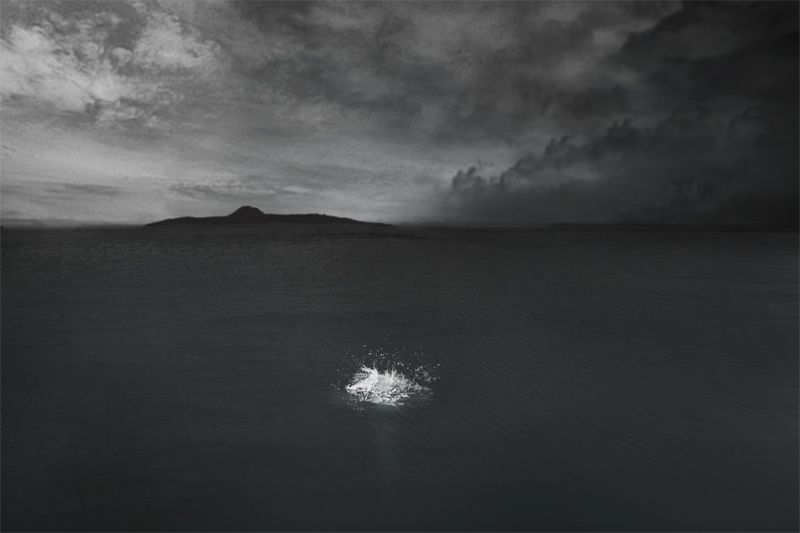 Wallace's Greater Black Cormorant Diving, 2009
Wallace's Greater Black Cormorant Diving, 2009
Journey to Pulau Pejantan onboard Sea-Farer II, 11th January
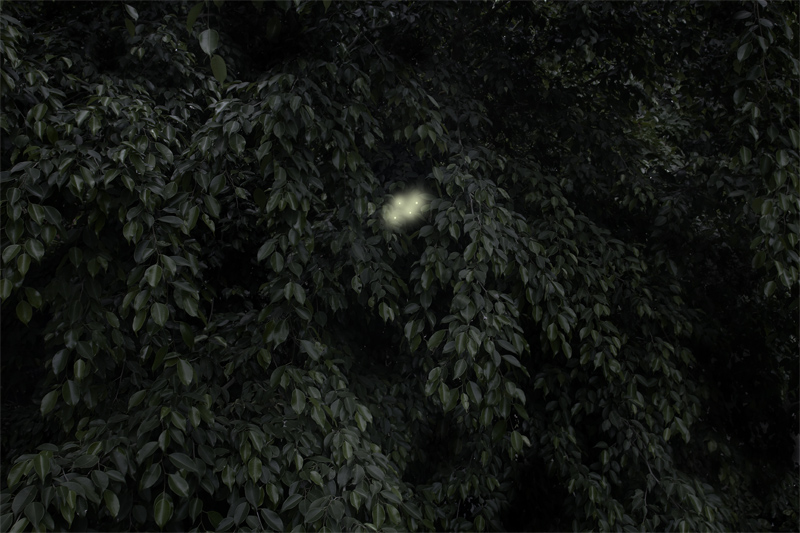 Glow Worms, 2009
Glow Worms, 2009
Day 120, Madura Forest, Weeping Tree.
 Minute Owl, 2009
Minute Owl, 2009
Day 61, Camera Trap No.168, Madura Forest
Pulau Pejantan is a remote island of Indonesia. Nick-named Sand Forest Island, Pulau Pejantan is a unique island with extremely unique geographical features and biodiversity. Virtually undiscovered till June 2005, the island boosts a treasure trove of unique species that is found no where else in the world such as the bizarre sand worms which moves about like packs of snakes around the island's dune to the Lantern Fish which greets you in the sea before you reach the island.
Isolated in the Pacific Ocean, about 70% of the estimated 600 species found on the island exist nowhere else on the globe. The island is home to such evolutionary oddities as the Ghost Hare, a black and white hound like animal, pale-white reptiles and birds which has adapted to the sand dunes and forest habitat, spiny burrowing ant-eaters, and the rock pheasant, a bird that lives in the sand dunes.
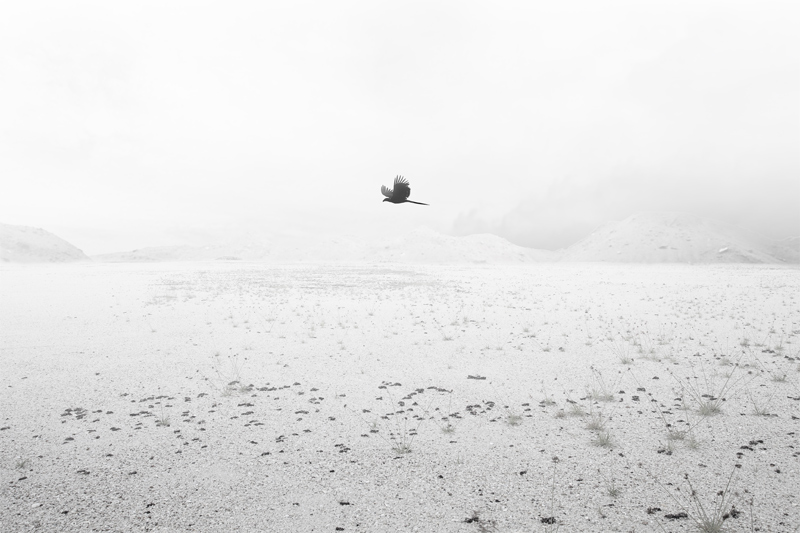 Long Tail Paradise Crow, 2009
Long Tail Paradise Crow, 2009
Day 9, Setting up of Mist Net for specimen collection
Interview
Dr. Darrel Covman on The Institute of Critical Zoologist's Discovery of New Island Species, Biodiversity, Sand dunes and a Black Geyser on Pulau Pejantan. (read more)
...excerpt from the interview,
How has the speciation process on Pulau Pejantan differed from comparable regions?
Images from the recent expedition from January to April, 2009 are also available on our website.
From now till the 21st of October 2009, selected/limited images from the expedition will be on shown in Gallery 2902, Singapore.
More information : http://www.2902gallery.com
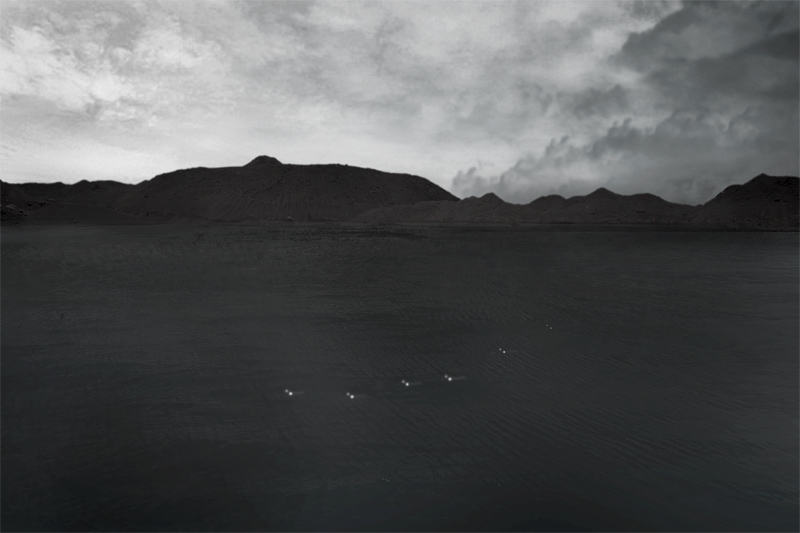 Pacific Lantern Fish surfacing off the coast of Pulau Pejantan, 2009
Pacific Lantern Fish surfacing off the coast of Pulau Pejantan, 2009
The Animal traps collection from the Institute of Critical Zoologist’s Museum is also online now (here)
The Institute of Critical Zoologists at the Substation
29th April 2009
if a tree falls in the forest
featuring resident artist, Zhao Renhui
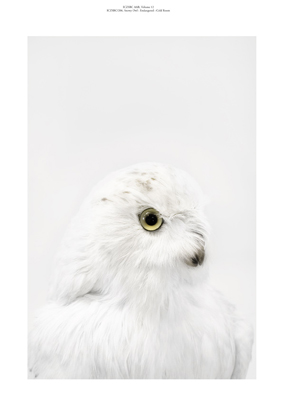
Soon Bo's Cold Room and Shelves, 2008
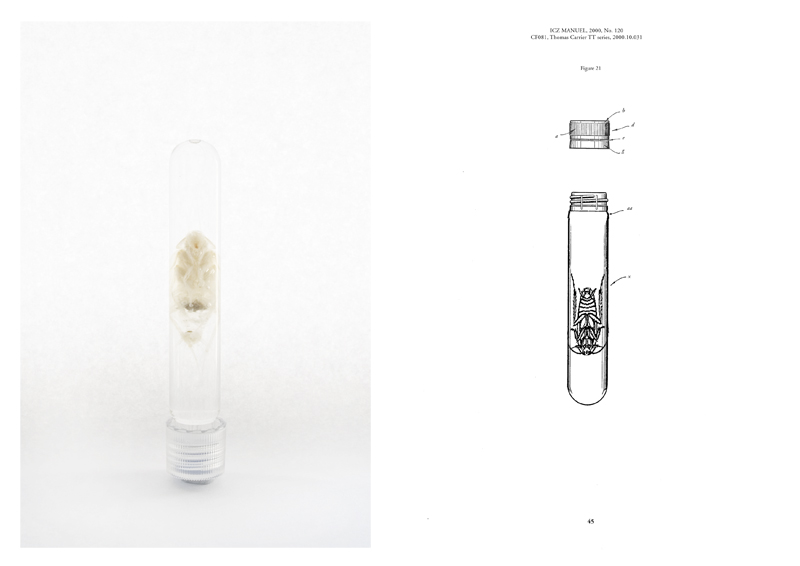
Kings, Tottori Desert Cockroaches, 2008

Tottori Desert artist-led expedition, 2008

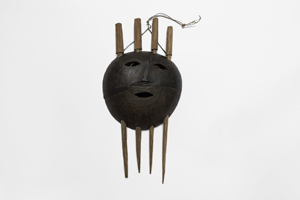
ICZ musuem collection, Taiwan fish memorabilia and Philippines Chicken Trap
If a tree falls in the forest by The Institute of Critical Zoologists questions our views and relationships with animals. They are prey, pets, trinkets, trophies and pests. This exhibition makes subversive changes in the way we observe animals and illustrates how these changes can alter perceptions and interpretations and ultimately question the human to animal relationship.
if a tree falls in the forest, an exhibition curated by the Institute, questions our conceptions and relationships with animals. As Mr Tomo Kawasaki, Director of The Institute of Critical Zoologists, has explained: “the ICZ promotes discussion about the principles and practices of animal spectatorship, animal advocacy, animal killing and animal-related policies across the fields of entertainment, social science, commerce, culture and ecology. We hope that viewers will look upon animals in a different light after seeing this exhibition.”
if a tree falls in the forest is made up of three parts: Before the flood is a live performance* that features hundreds of mousetraps springloaded with ping pong balls. Each ping pong ball represents one of the thousands of mouse species in the world. The performance is accompanied by a showcase of the Institute’s collection of animal traps from around the world. Also on show are animal memorabilia from around the globe in the ICZ museum collection.
Kings is a collection of rare white Tottori cockroaches, from the Tottori sand dunes of Japan; these creatures exemplify how animals are assigned a certain “status” based on their aesthetic appeal. The specimens are presented with projects by previous artists-in-residence who have been inspired by these curious creatures. They include Zhao Renhui’s artist-led expedition into the Tottori Desert and Sokkuan Tye’s Japanese print.
Soon Bo’s Cold Room and Shelves is a series of photographs of animals from the collection of taxidermist and biologist, the late Soon Bo. His love for animals and his skill as a taxidermist resulted in a bizarre collection of specimens, accumulated over many years. Zhao Renhui, member and a resident artist of the ICZ, spent a short time as Soon Bo’s student in taxidermy; for Zhao, “This collection blurs the lines between the natural and the artificial, as the animals stare back at you with questions in their glassy eyes, and an eerie hint of life in their bodies.”
The Institute of Critical Zoologists aims to develop a critical approach to the zoological gaze, or how humans view animals other than ourselves. Urban societies live in relative isolation from animals, and yet the demands that we put upon animals has increased tremendously over the last century. Animals are agriculture, prey, pets, trinkets, trophies and pests. And while gazing upon them is desirable and pleasurable, our visual apprehensions are not wholly natural; rather, these perceptions produce meanings and values that are culturally constructed. Moreover, in viewing the animal, humans cannot but refract the social and political contexts and values in which such observations take place.
2nd to 20th May
11am to 8pm daily, closed on public holidays
The Substation Gallery
45 Armenian Street
Singapore 179936
Admission is free
Opening reception: 2nd May, Saturday, 4pm, The Substation Gallery
Guest-of-Honour: Ms Fanny Lai, Group CEO, Wildlife Reserves Singapore (Jurong Bird Park, Night Safari and Singapore Zoo)
Also present, Dr. Tomo Kawasaki, Director, Institute of Critical Zoologists
*Special one-time sound performance by Hayashida Ken with the ignition of more then 300 spring loaded mousetraps.
There will be a limited edition catalog for sale at the exhibition.
Presented by : The Substation &The Institute of Critical Zoologists
Supported by : LEE FOUNDATION & The Singapore National Arts Council
The Institute of Critical Zoologists in Singapore
17th April 2009
This May, The Institute of Critical Zoologists will be having an exhibition featuring works from past and current artists who have worked with our archives.
Email : info@criticalzoologists.org with the subject line as : 'Join' to subscribe to our mailing list.
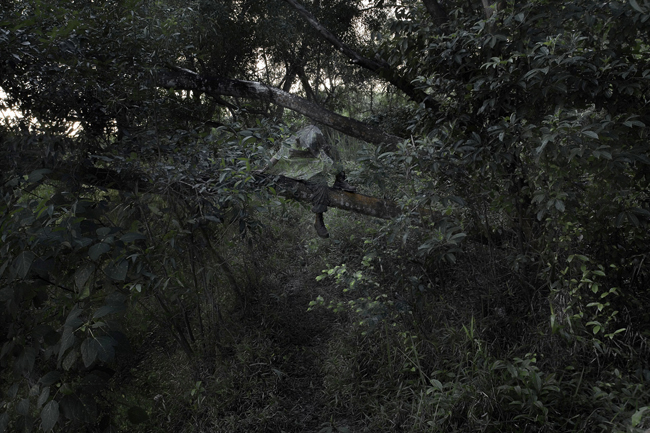
The Blind, 2009
The Institute of Critical Zoologists at Pickford's Museum
23rd February 2009
The Institute of Critical Zoologists and Format International Photography Festival presents :
The Ark Project
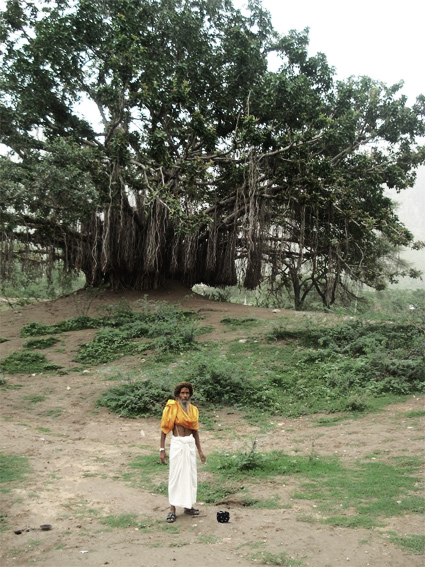
Document from the Trap Vitrine, 2009
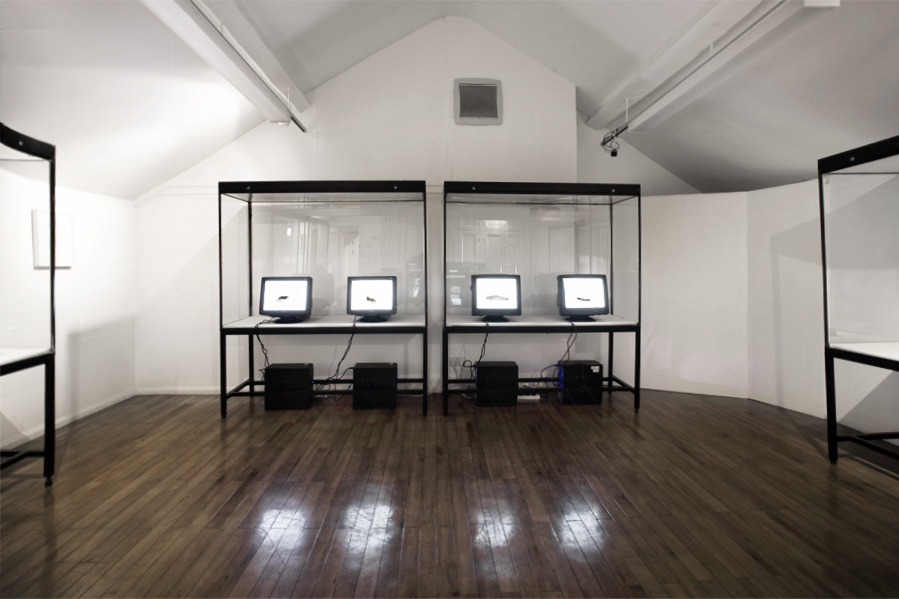
Acusis Live Webcam Streaming Feeds, 2009
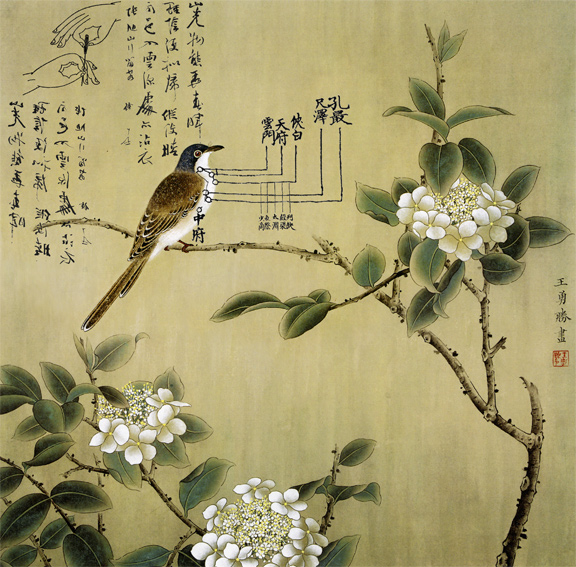
Unknown Flowerpecker with pressure points marked, possible Meiji period
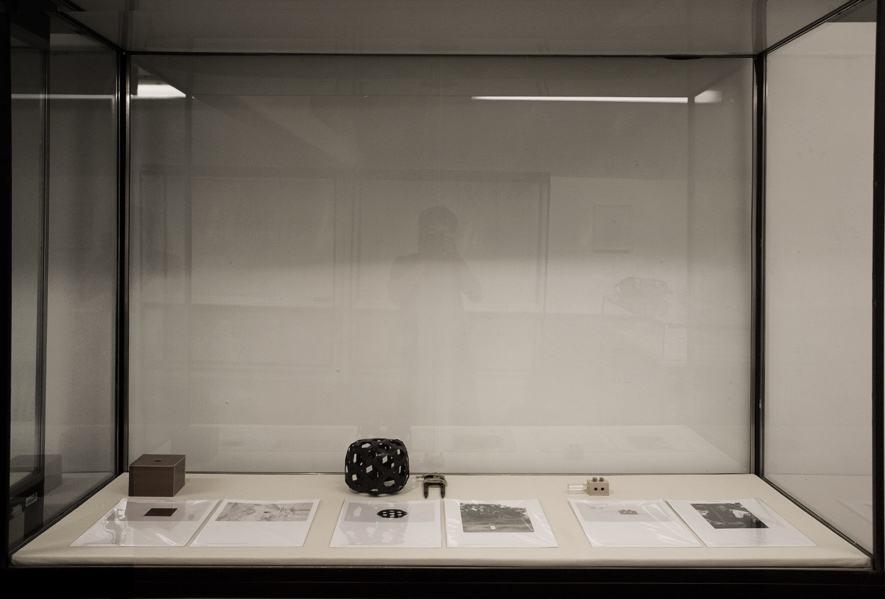
Vitrine of Animal Traps
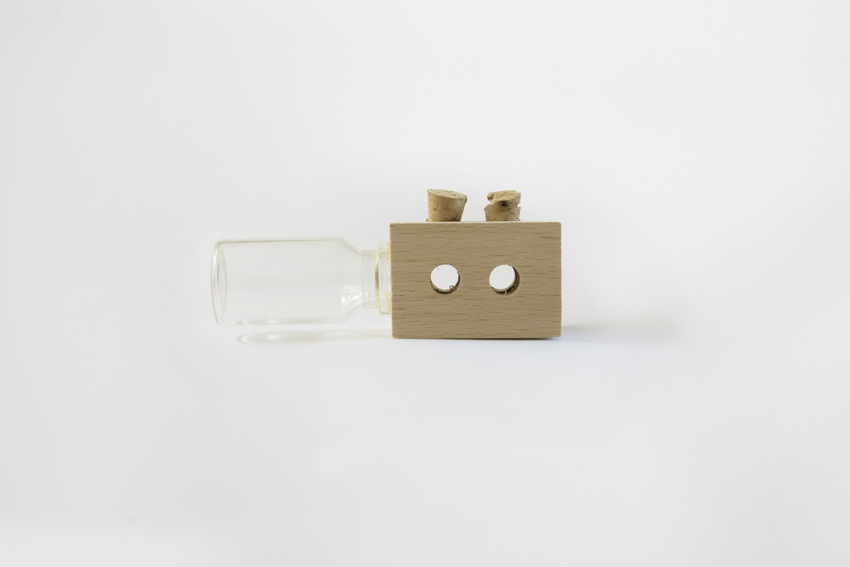 From the Animal Traps Collection, 2009
From the Animal Traps Collection, 2009
With the support of Singapore National Arts Council, Derby City Council, University of Derby, Arts Council of England, QUAD and Pickford's Museum, The Institute of Critical Zoologists / Zhao Renhui is proud to take part in this year's Format festival, United Kingdom's leading contemporary photography and media festival. The festival aims to celebrate the wealth of contemporary practice in international photography. The Institute will be showing its museum collection for the exhibition. The objects on show includes original Acusis woodblock prints, animal traps & specimens from the ICZ collection and documents from the ICZ's archive.
Duration : 1st March 2009 - 5th April 2009
Pickford's Museum, Top Floor Gallery
Derby, United Kingdom
"...For this exhibition, our artist in residence, Singaporean Artist Zhao Renhui, has painstakingly selected some representative documents from our massive archives and artefacts from our museum collection.
The ICZ museum collection comprises an extensive inventory of animal memorabilia and souvenirs that can be bought off the internet, tourist trinket shops and gift shops around the world. For Format, we have selected the an important piece from our collection by renowned Japanese zoologist Hayashida Oishi.
The ICZ also has a substantial collection of animal traps. We have chosen to show a snake trap, a gibbon trap and the curious earthworm trap found in a remote village in Nepal.
Finally, one of our flagship projects, Acusis, is being presented in Photocinema. Acusis is a method of extending the lifespan of endangered animals by performing acupuncture on them to induce a state of torpor and decreased physiological activity. Animals under Acusis are revived every five years to reproduce with another revived animal. The television screens show live video feed from web cams installed in our laboratory of the Tomaya Flowerpecker and the Rainbow Trout. The Institute of Critical Zoologists celebrates the reintroduction of more than 200 rare birds, bred at the Institute's laboratories, to the wild by the Acusis Program. The Institute of Critical Zoologists is also taking this chance to celebrate the reintroduction of more than 200 rare Sarina's Flowerpecker, bred at the Institute's laboratories, to the wild by the Acusis Program...."
Hayshida Toko
Chairman, Institute of Critical Zoologists
www.formatfestival.com/exposure/pickfords-house/renhui-zhao
www.derbyquad.co.uk
Institute of Critical Zoologists / We decided to go to the zoo but it was raining
15th October 2008
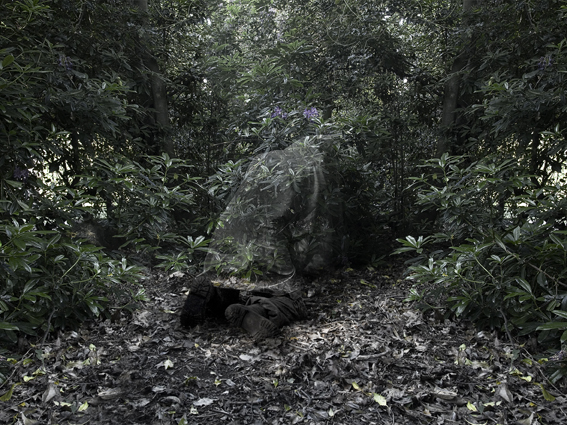
The Blind, 2008
The Institute of Critical Zoologists will be holding a public installation entitled "We decided to go to the zoo but it was raining" at the Cify of Levallois, France.
With the kind support of Epson France and the Cultural Board of Levallois, The Institute of Critical Zoologists will be holding a public exhibition at l’Escale, The Cultural Center of the City of Levallois, France. The exhibition was awarded a special mention in the augural Photo-Levallois Festival. The Institute will be showing its annual report and a summary of her projects in this special exhibition. It will consist of 114 documents from the Institute's archive.
The exhibition will be held from 17th November 2008 to 13th December 2008.
Institute of Critical Zoologists / Singapore / Renhui Zhao / Yong Ding Li
14th October 2008
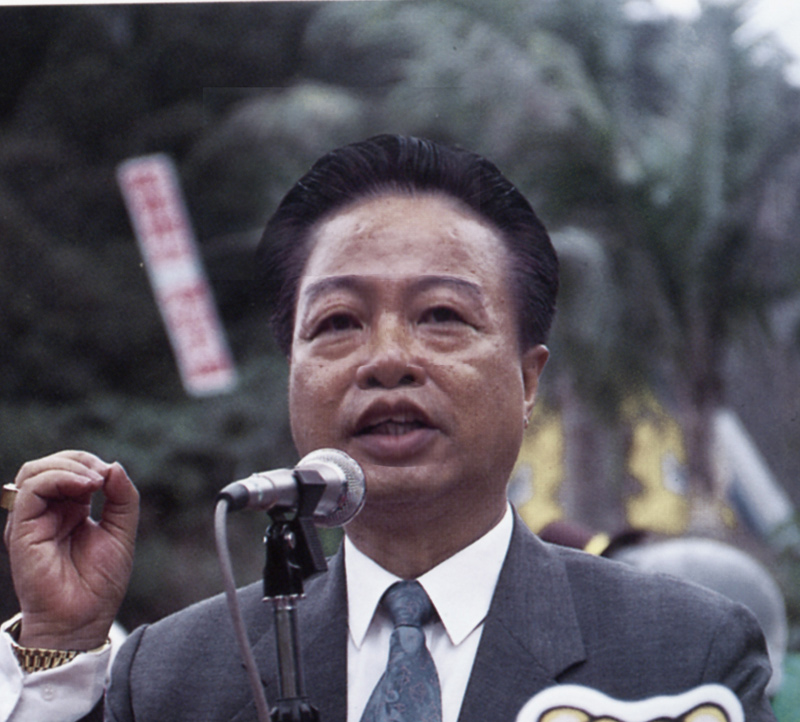
Dr. Cheng Bu, Presentation at Dublin Zoo and Museum, 1999
The Institute of Critical Zoologists will be holding a public presentation at the Singapore National Museum on the 14th October 2008.
The Institute of Critical Zoologists public presentation at the Singapore National Museum on the 14th October 2008.
As part of The Institute's engagement with the public, The Institute will be giving an evening presentation of the Institute's recent iniatives, research and projects. Join Artist Renhui Zhao/Yong Ding Li for an evening presentation where he will explore the representations of the animal within the projects of The Institute of Critical Zoologists at the National Museum of Singapore.
14th October 2008
National Museum of Singapore, Seminar Room
2100-2200 hrs
Please kindly be seated by 2045 hrs.
Tomaya's Flowerpecker breeding tops century
30th May 2008
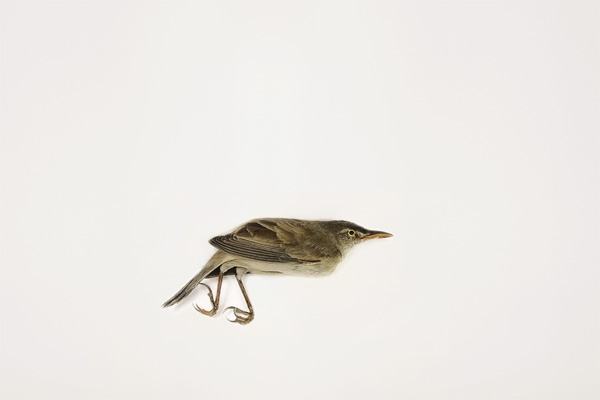
Tomaya's Flowerpecker, Revival Stage of Acusis, 2008
More than 200 rare birds bred through Acusis at the ICZ's laboratories for reintroduction to wild.
Celebrations are taking place at ICZ's museum this week with news that more than 200 rare flowerpeckers have been bred this year for reintroduction into the wild.
In fact, a staggering 226 chicks have been successfully hatched and raised to chicks through Acusis at the ICZ, far more than was hoped and giving a massive boost to the re-introduction project at the Yaeyama Islands.
The project is managed jointly by the Institute of Critical Zoologists, the Veterinary Acupuncture Center in Beijing, the Japan Laboratory of Endangered Species and the Biostatsis Institute in Fukuoka who run the laboratories at the ICZ, who work with hunters, trappers and collectors in the area to allow these beautiful and rare birds to remain in the area.
At the Yaeyama Islands, each batch of chicks is first given a health check by ICZ vet, Nicholas Woo, and then released to the wild. The project began with 1 bird released in 1997, this increased to about 85 in 2002, 105 in 2005, and 150 in 2006. This year’s number has exceeded all expectations.
ICZ's Head of Ornithology, Dr. Yong, who has been in charge of inducing Acusis on the adults said: “It’s just great to have surpassed 200. When we set up the project eleven years ago, 20 birds was the target we’d set ourselves and this is just amazing."
“Obviously, the more birds we can release the better the chance that they will come back and a sustainable population can be created in the Yaeyama Islands."
The Tomaya's Flowerpecker is just one of the few success stories from the Acusis Laboratories at the ICZ. Previous success stories include the successful re-introduction of the Yellow Chested Imperial Finch.
Notes to editors
* The Tomaya's Flowerpecker is one of the most threatened breeding bird species in the world. It started to disappear from Japan more than a century ago, because of the introduction of mechanized and intensive trapping methods. Today this relative of the more familiar Sunda flowerpecker only breeds in the Acusis Laboratories where conservationists have been working intensively with local trappers and collectors to ensure the bird’s continued survival.
* After release the birds will migrate to the Artic and on average 1% will return.
* Breeding is carried out at ICZ's Acusis Laboratories where healthy breeding adults under go artificial hibernation. The adults are revived every 2 years to breed. (The project's mission is to help save endangered animals from extinction. It does this by extending the lifespan of the thousands of animals that are expected to disappear within the next few years.) Breeding takes a total of 39 days, after which the adults are put through Acusis again. The chicks are then fed around the clock on the hour for the first 4-5 days. After 10-14 days they are taken to the Yaeyama Islands for release, once they are health checked and provided they are the correct weight.
The Death Dance, the ICZ acquires lost specimen
1st May 2008
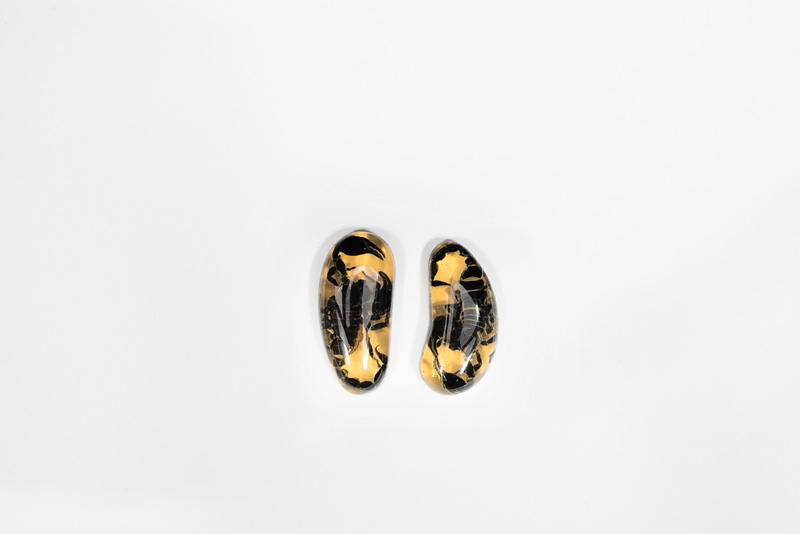
The Death Dance by Hayashida Oishi, ICZMZ/113, The ICZ collection
Pair of scorpions in amber, circa 1950s, Giant Blue Scorpions in Amber, 18cm x 5cm, On display in Special Exhibits room
The ICZ is delighted to announce the acquisition of one of Hayshidai's Oishi most treasured and copied, widely known as 'The Death Dance'. This small devotional work was made for the late Dr.Ailaimaishua, a founder of critical zoology in Japan. The scorpions was presumed lost until it was sold at auction in London in July 1949. An exchange in collections with a private dealer allowed the ICZ to purchase it in June 2006. This specimen joins a distinguished collection of twenty other specimen made by the scientist in the Museum's collection, each of which represents a different aspect of Hayashida's art and research.
'The Death Dance' is one of the first specimens to apply an imposing Surrealistic composition to an intimately scaled specimen of the Asian Forest Scorpion. The Surrealistic style was established by Hayashida Oishi in his realistic decorations of the Prehistoric Room, Japan and in a few speciemens such as 'The Lost Hands' made just before 1930. In these works he realised a creative synthesis of the scorpions by encasing them in re-worked amber in a permanent death dance.
The purchase of this specimen was made possible by recent legacies to the ICZ and a generous donation by Zhong Yao Ren.
Notes to editors: Some other specimens by Hayshida Oishi in the ICZ collection:
'The Lost Hands', circa. 1930;
'Smallest Bee', circa. 1930;
'The Prayer during his Temptation', about 1960;
Copyright 2012, Institute of Critical Zoologists